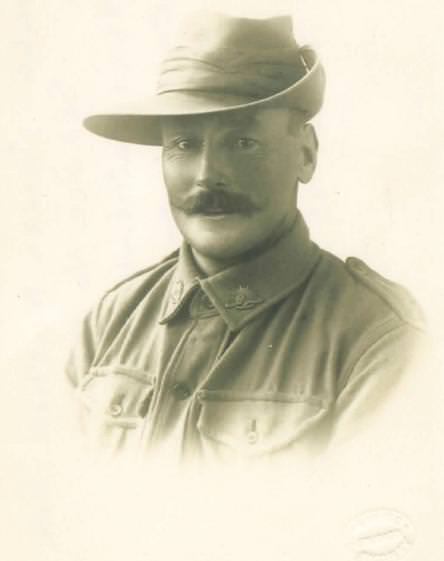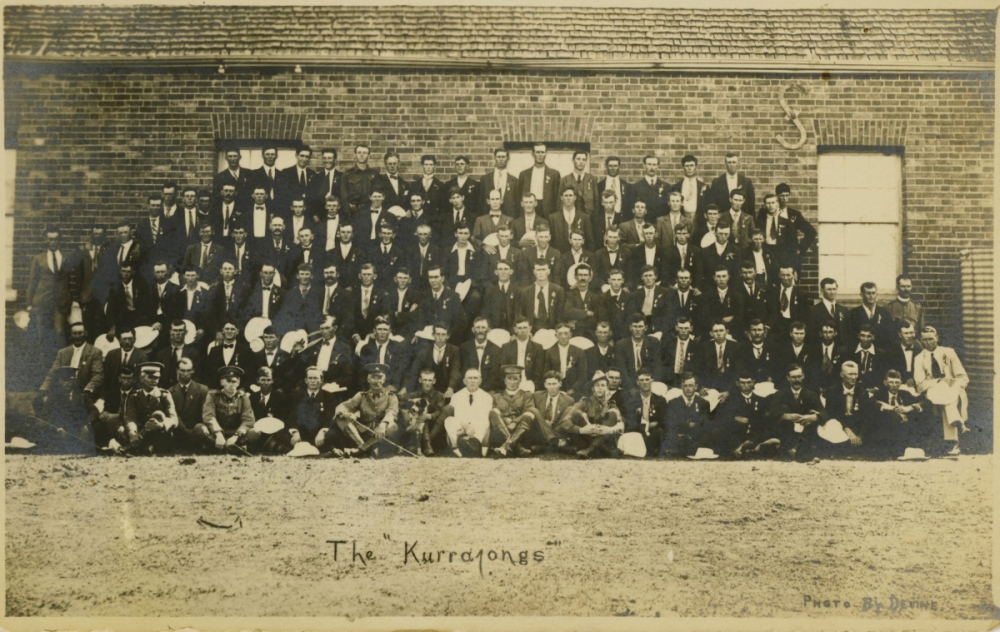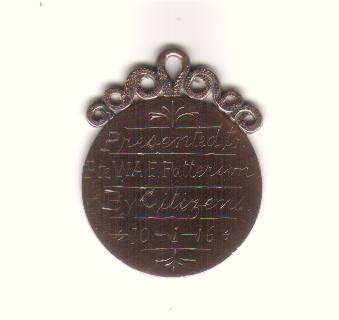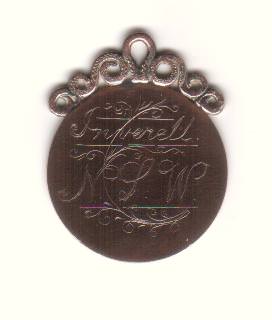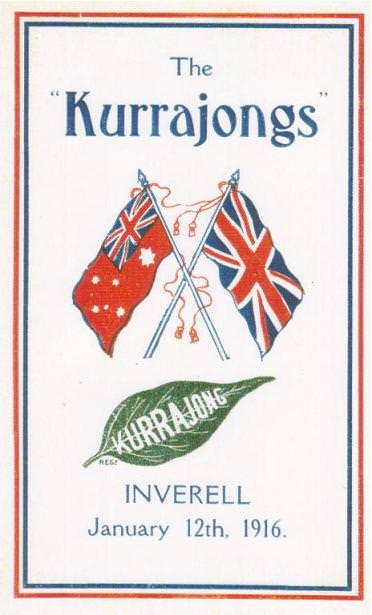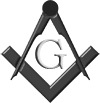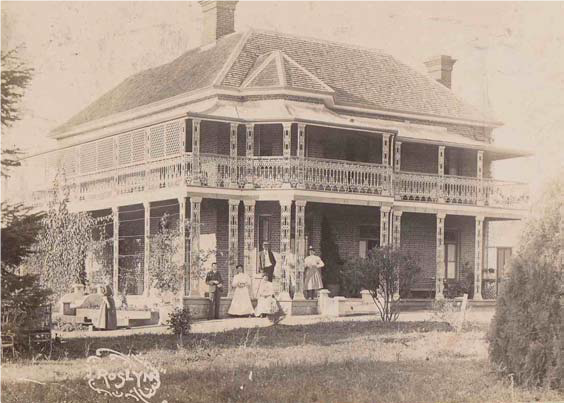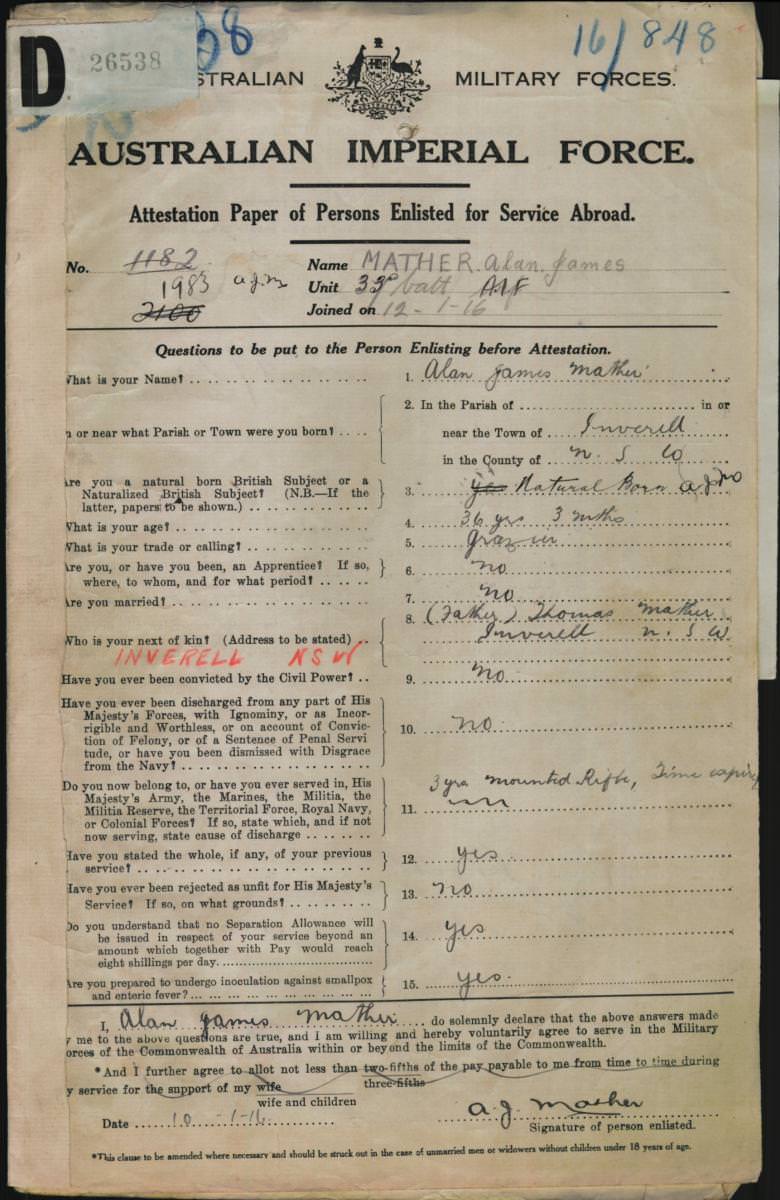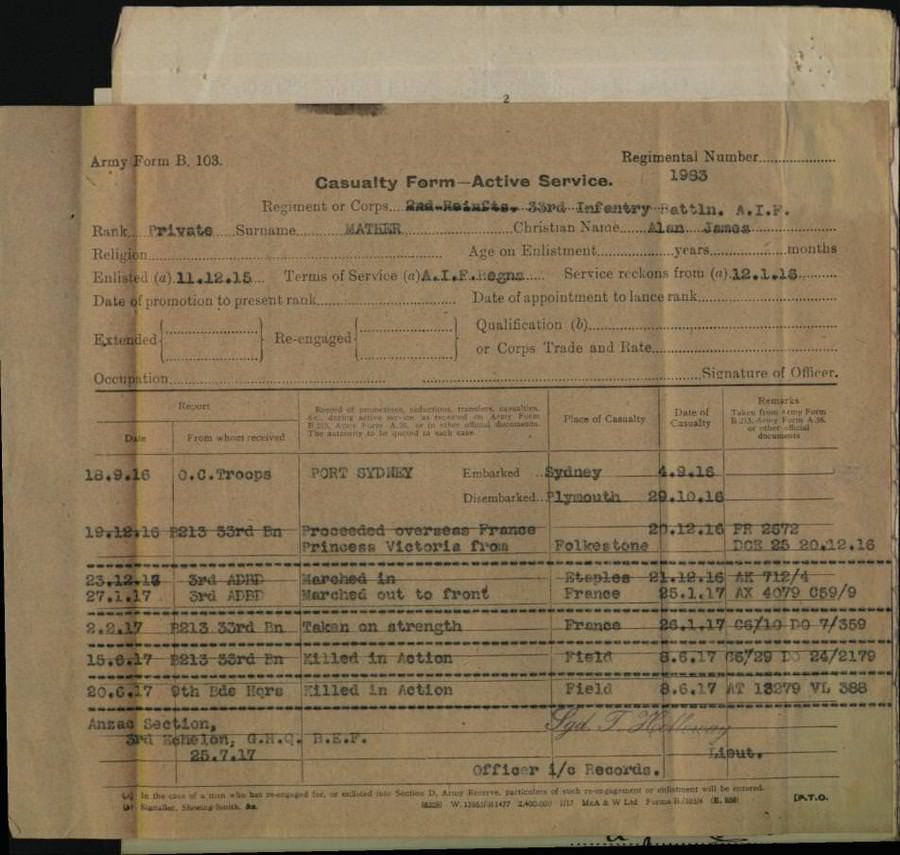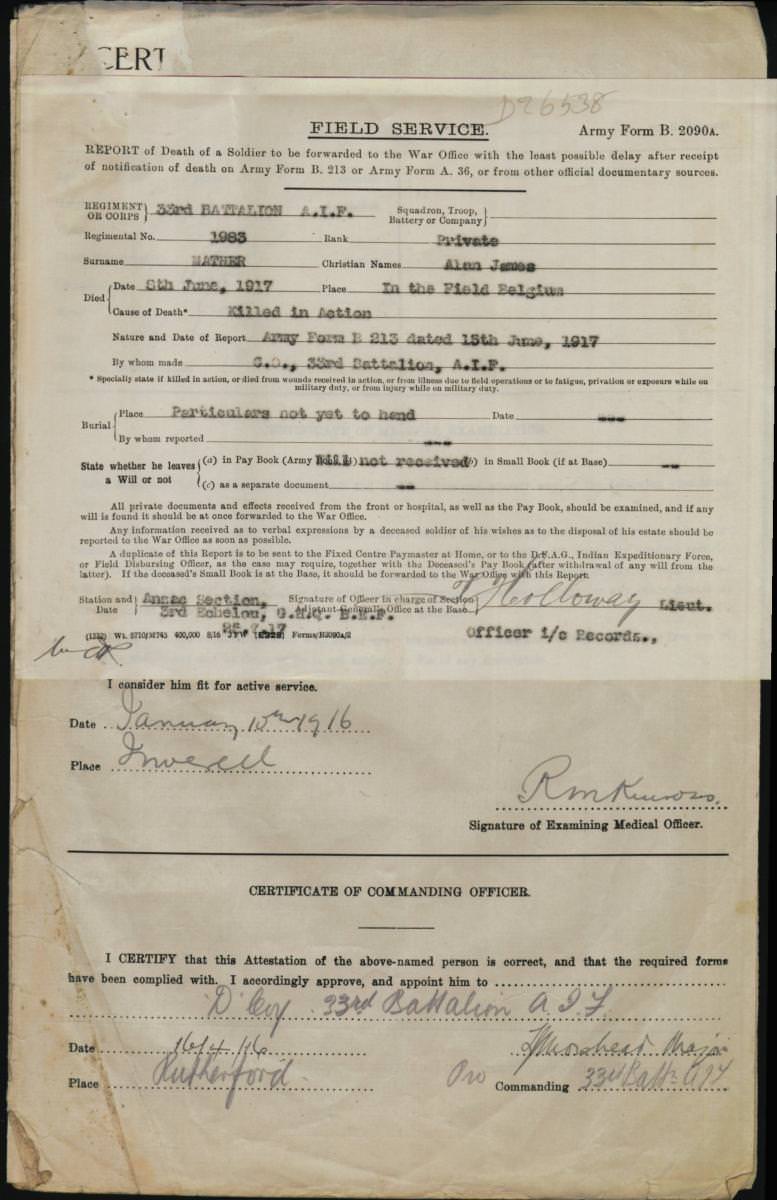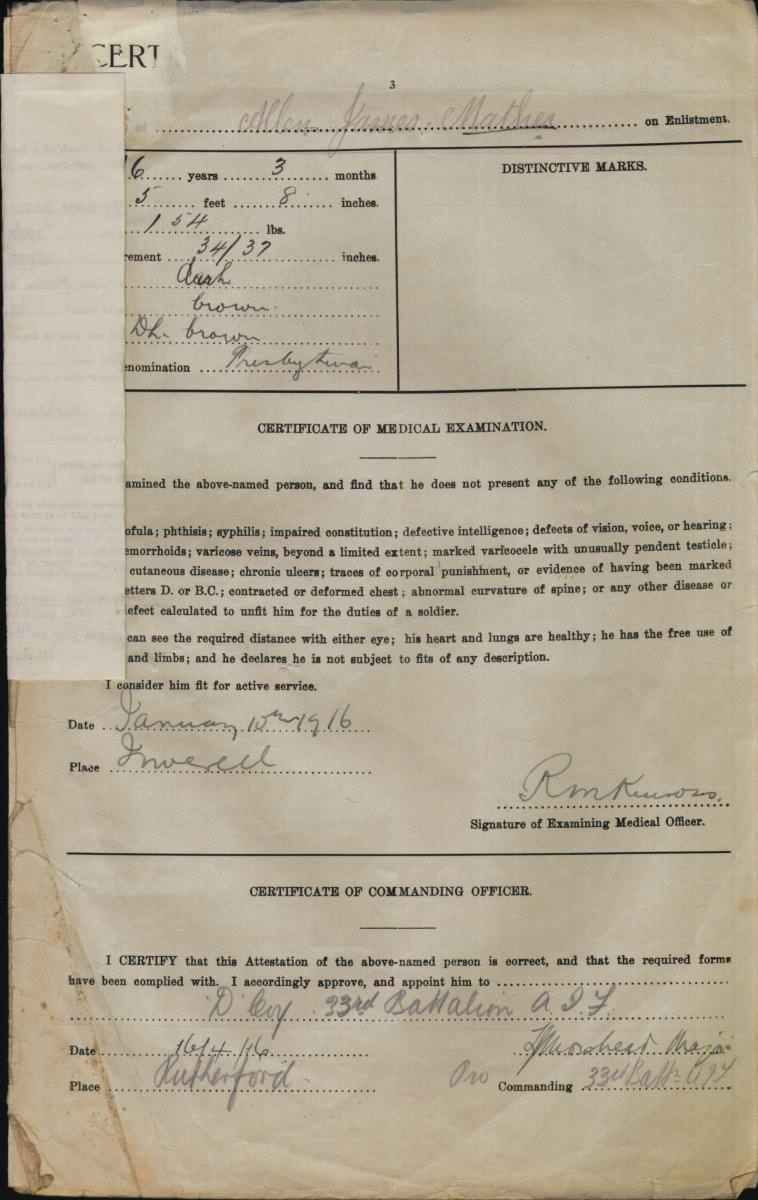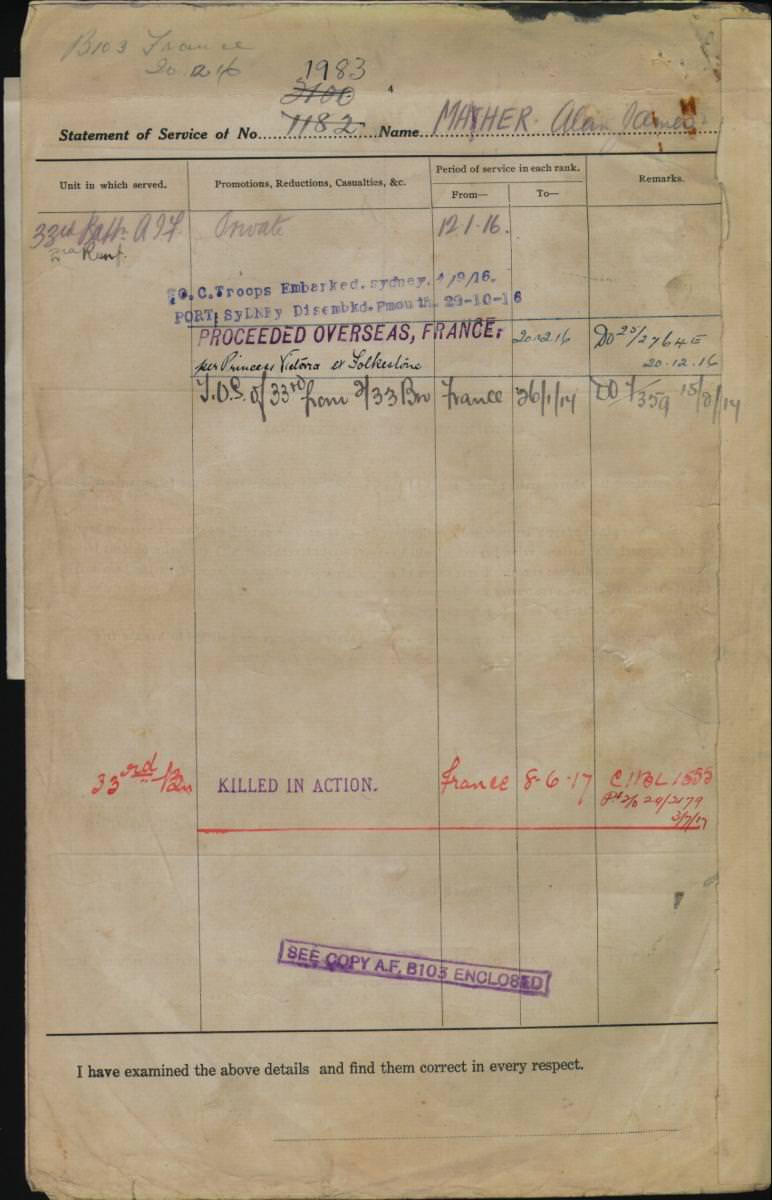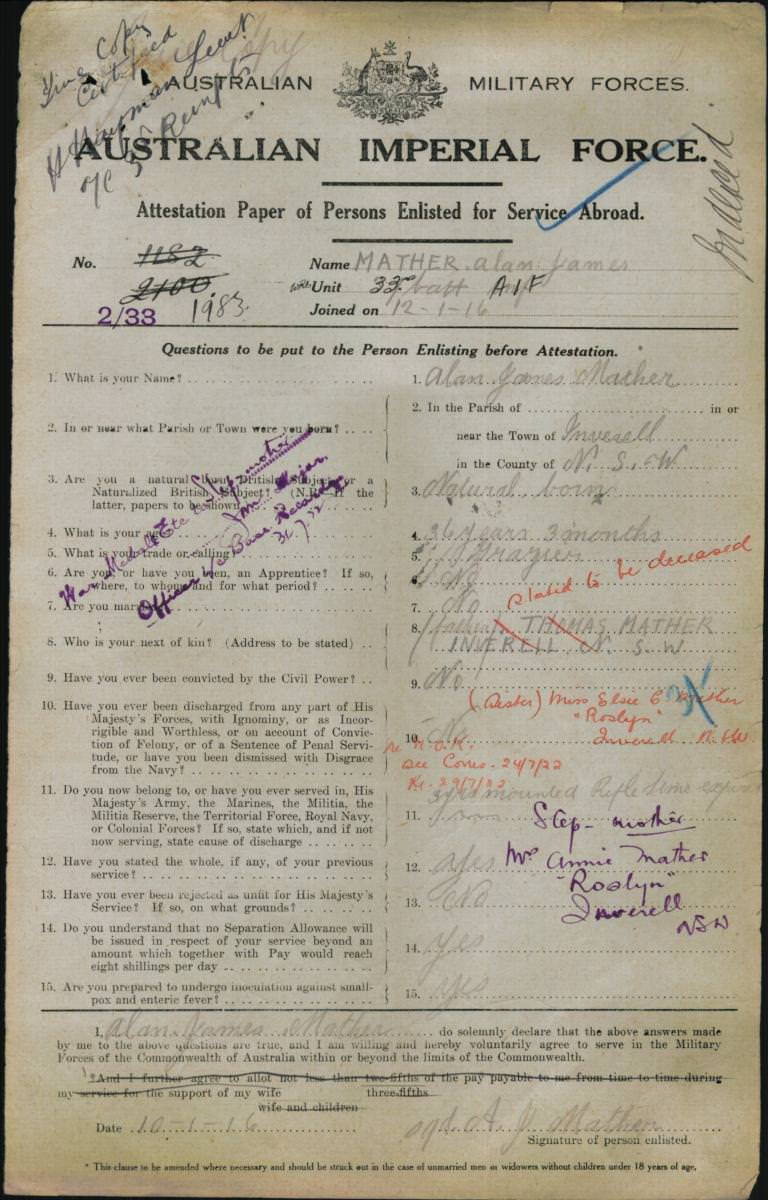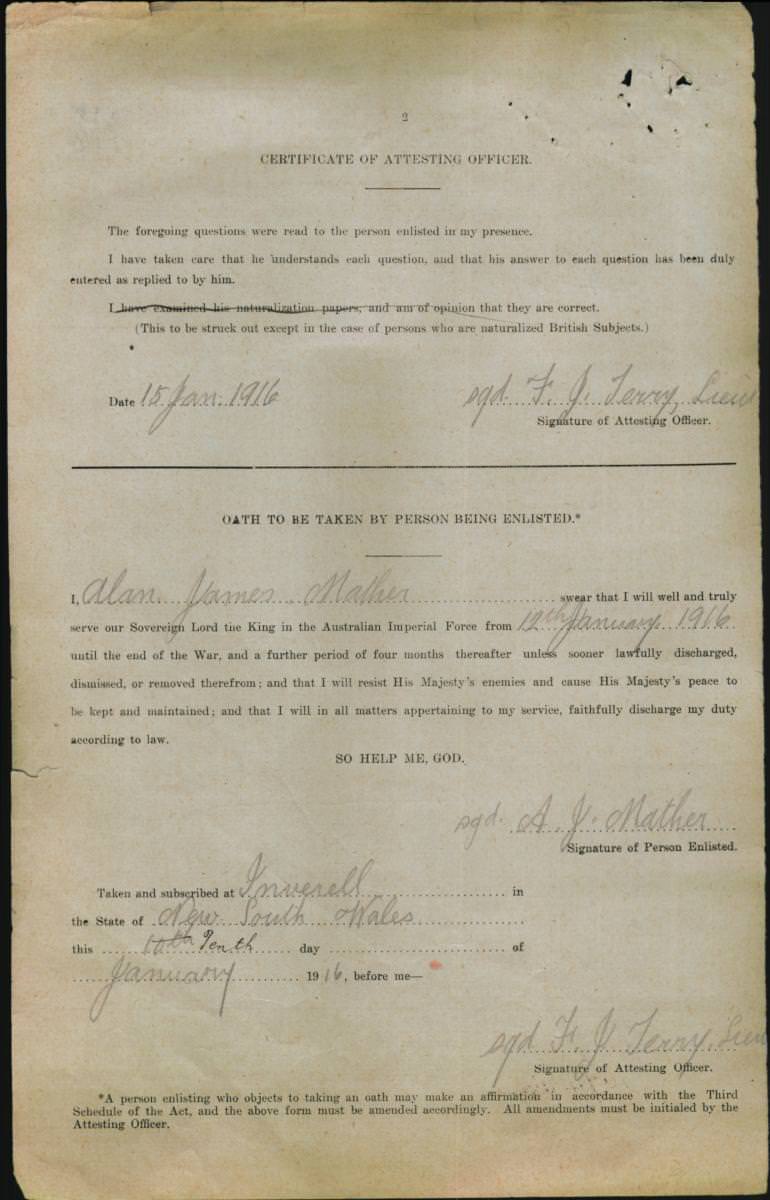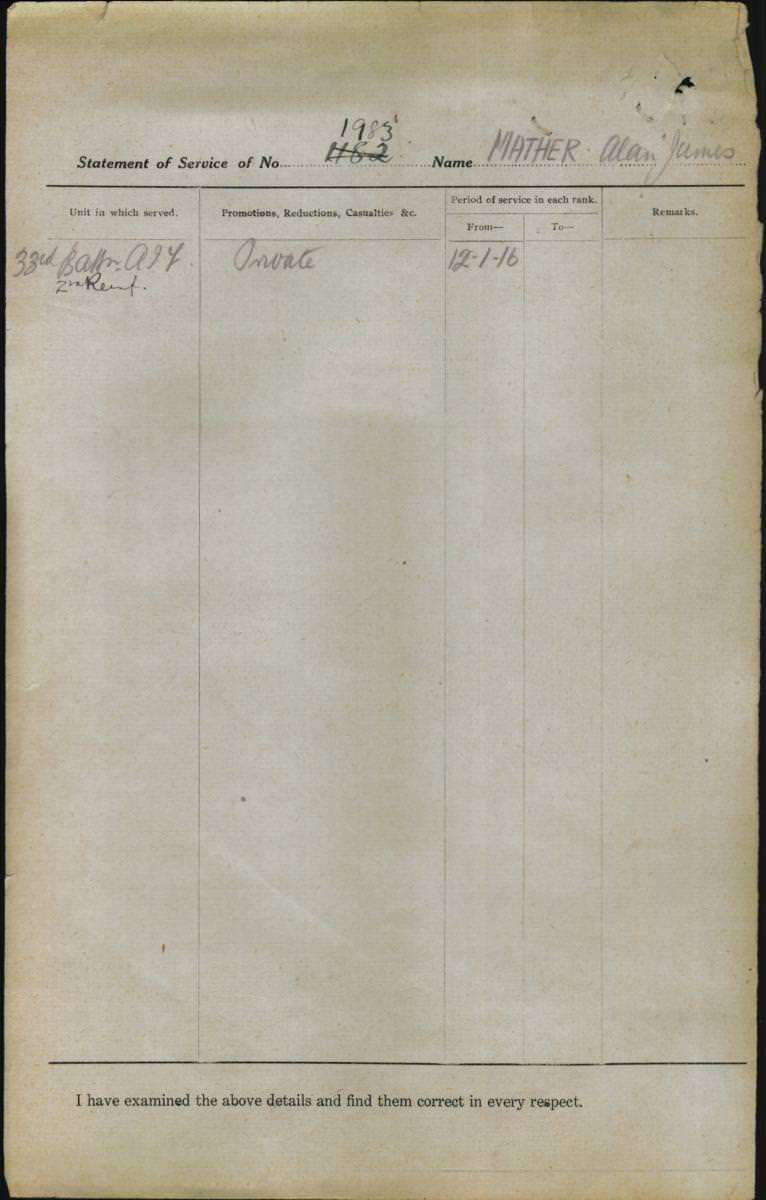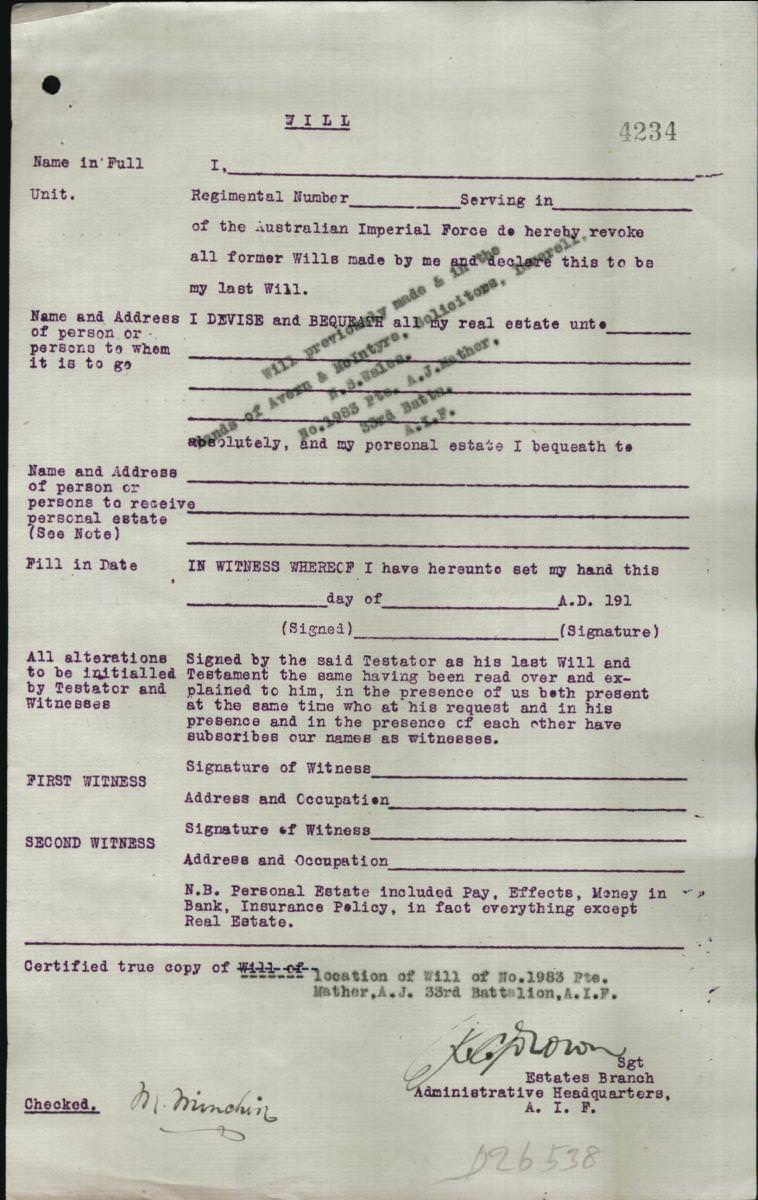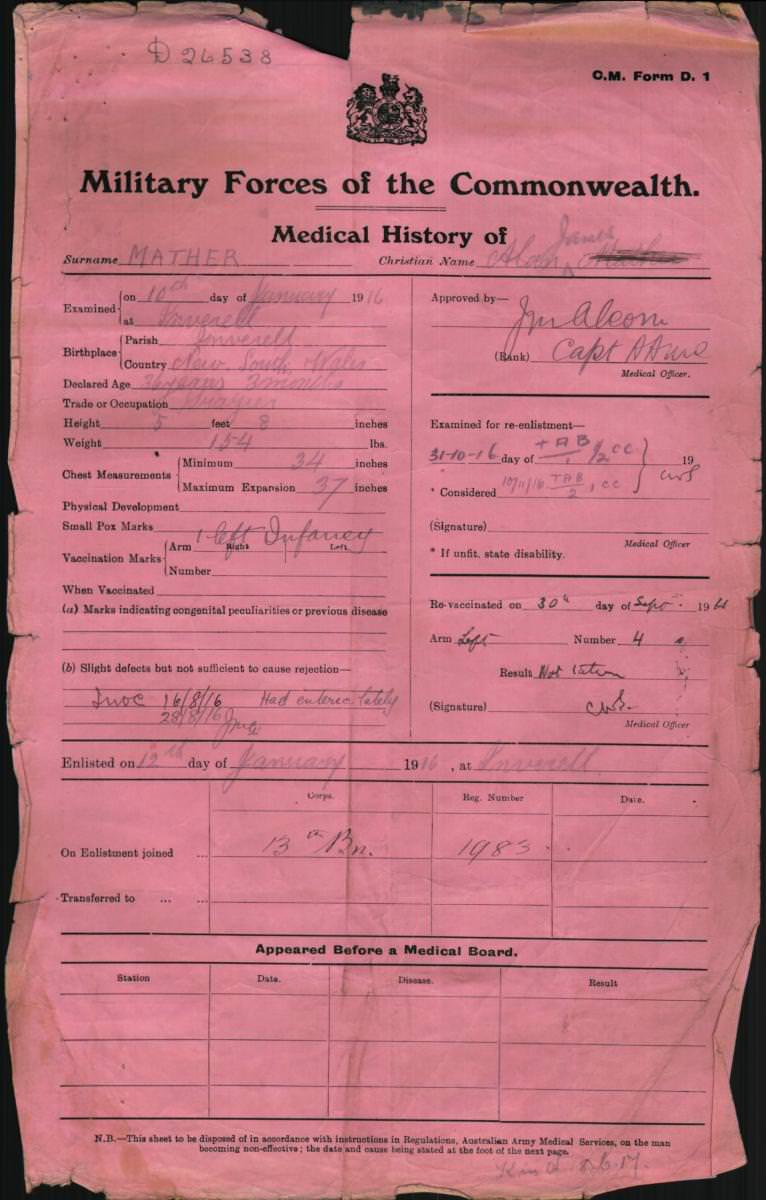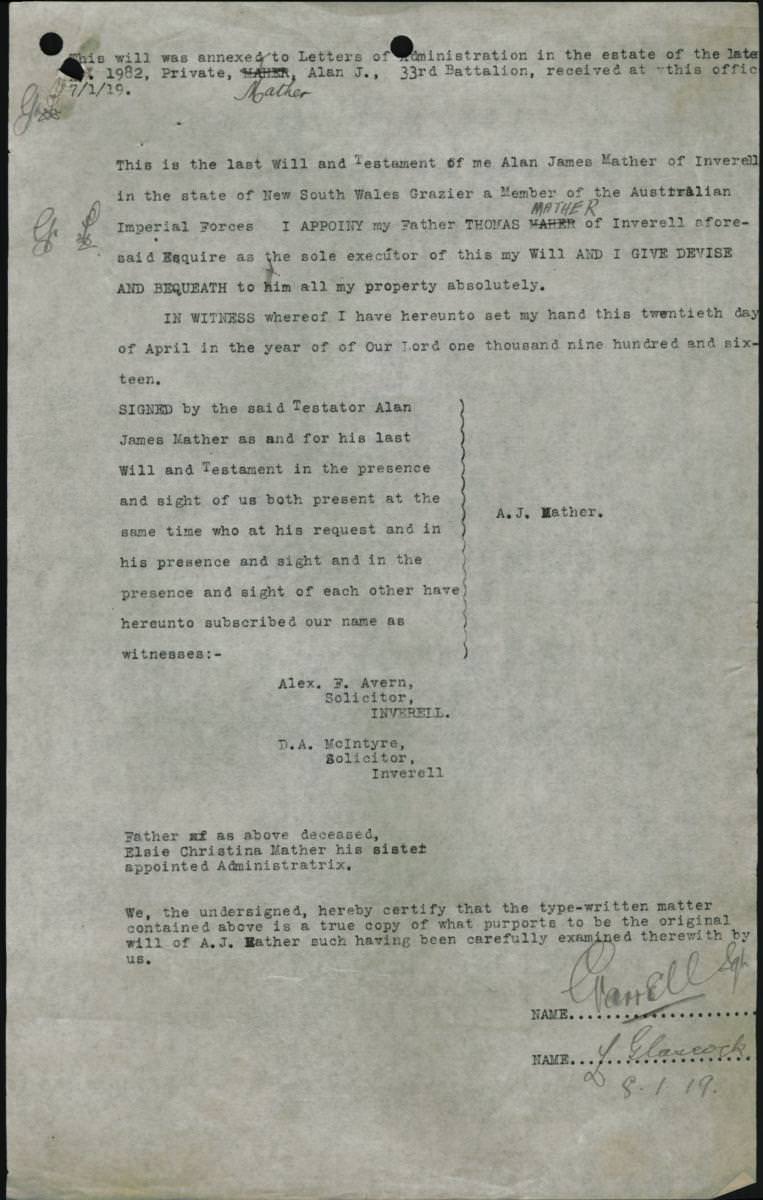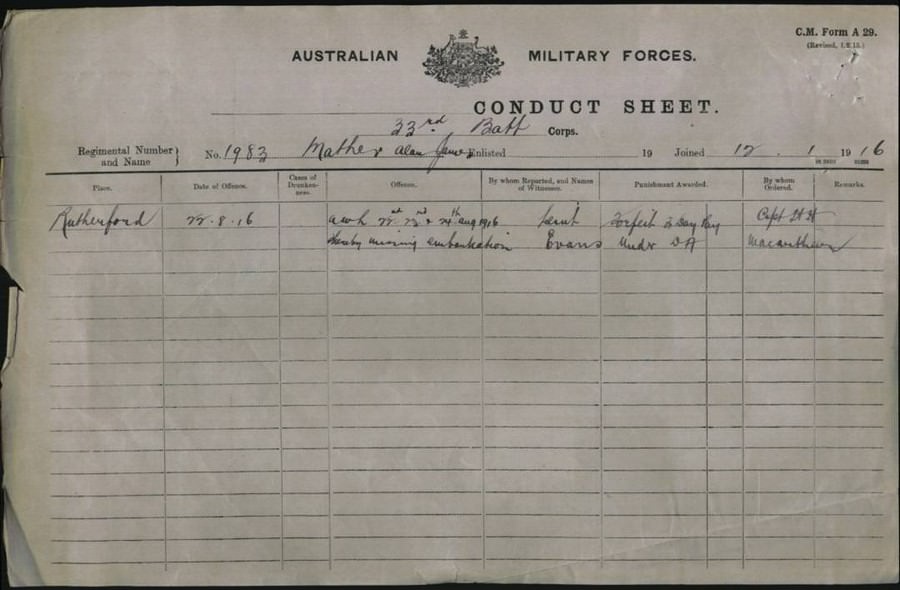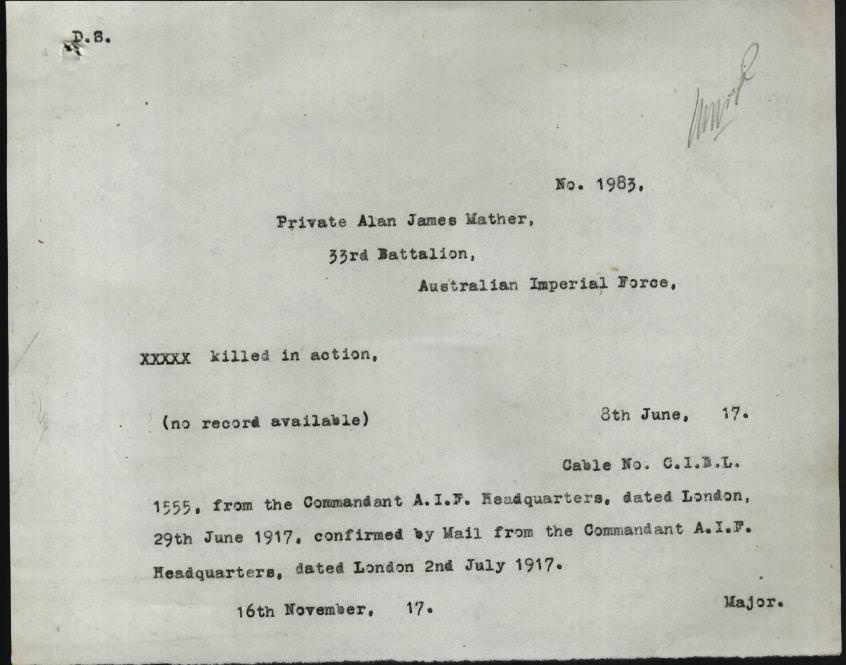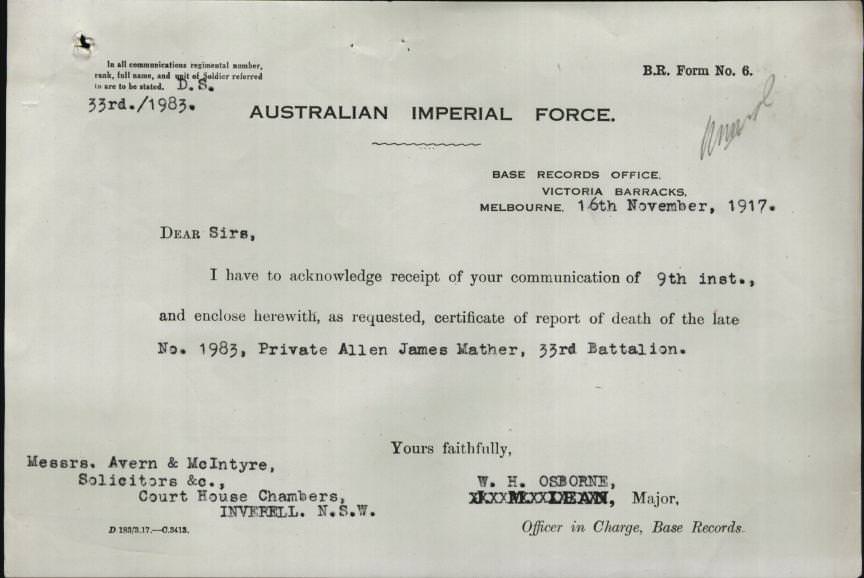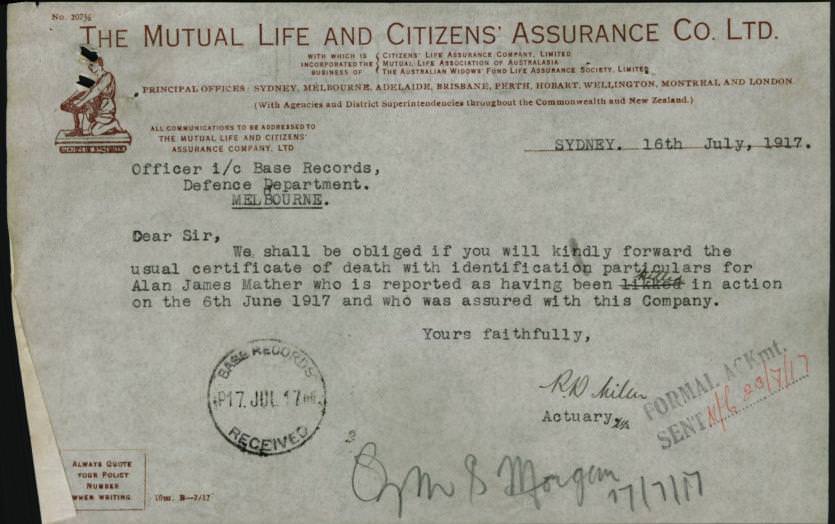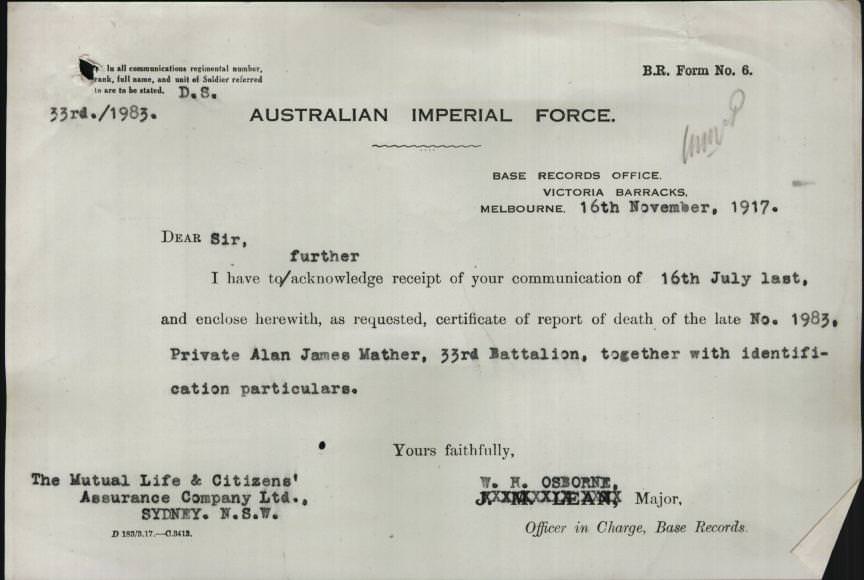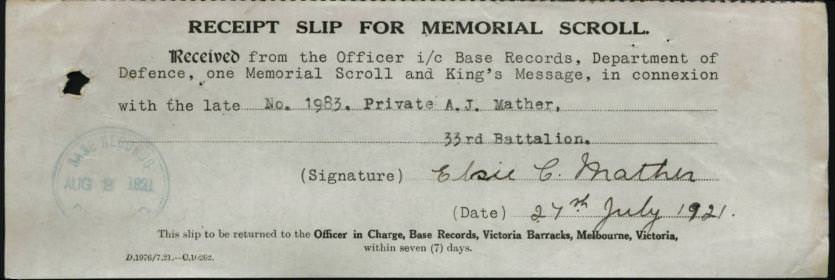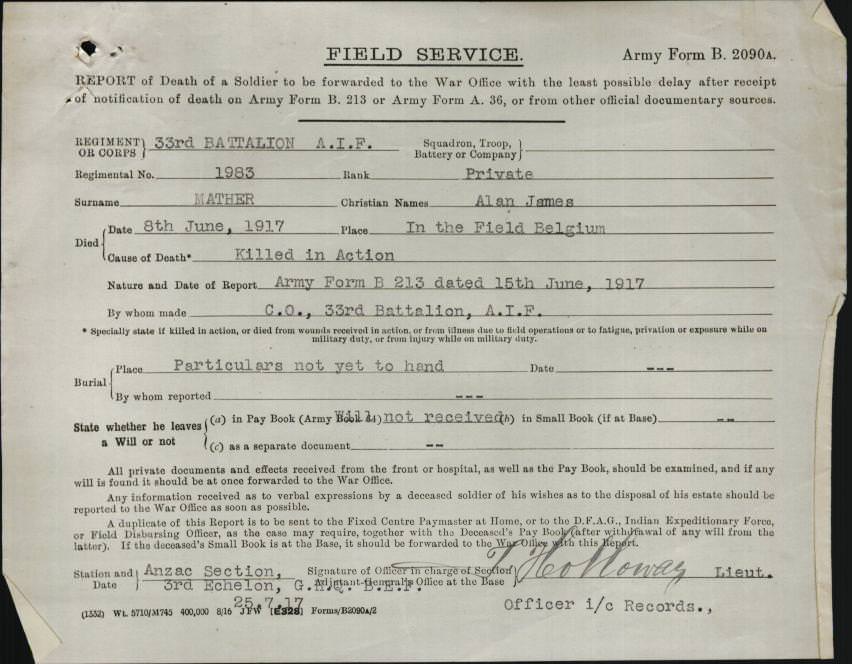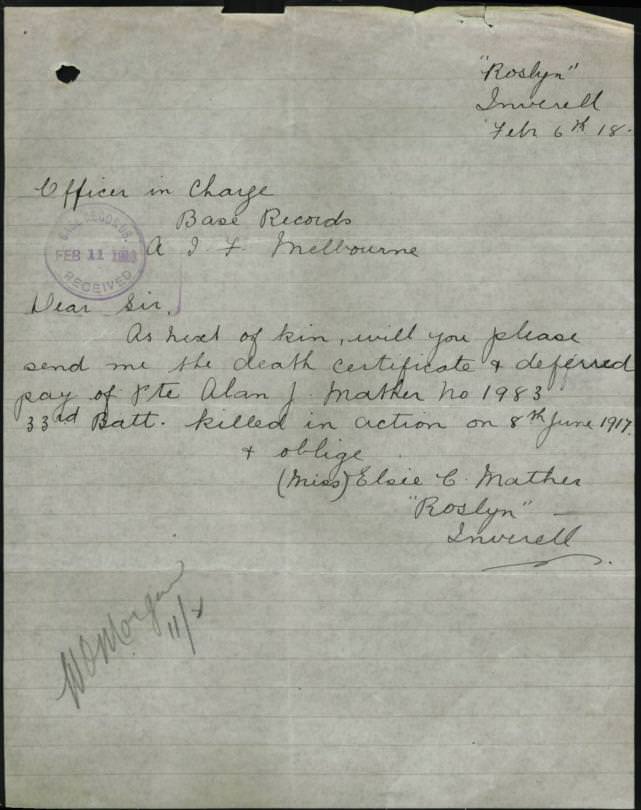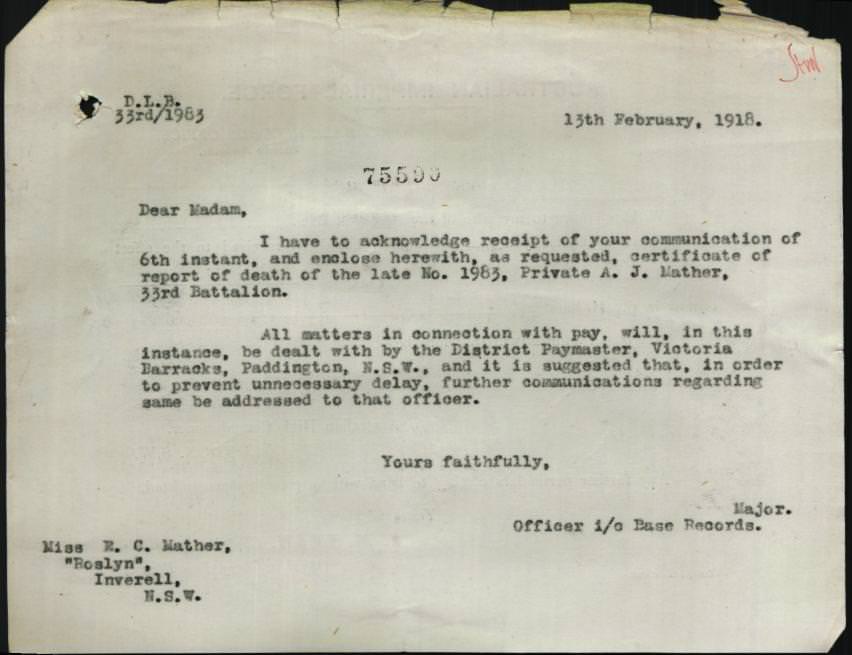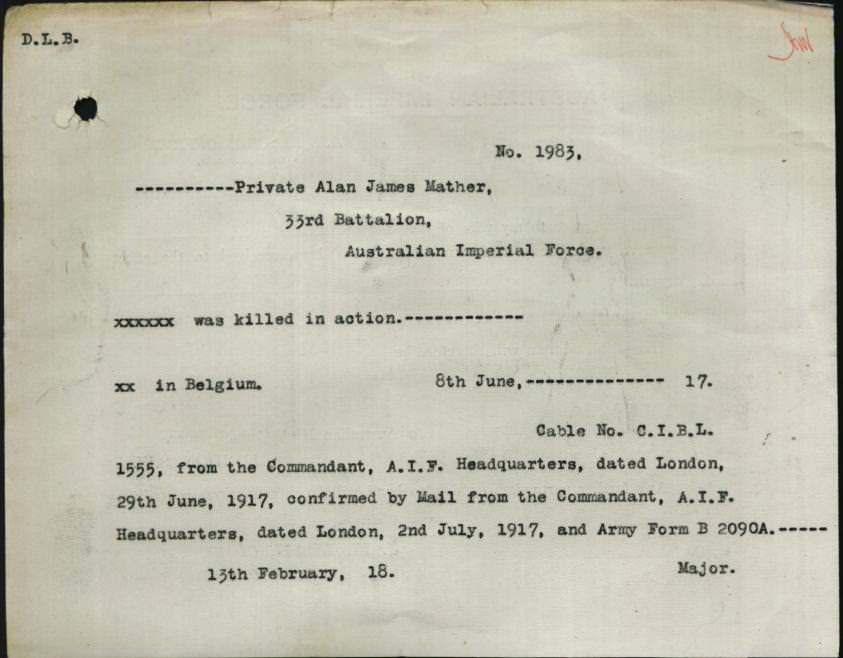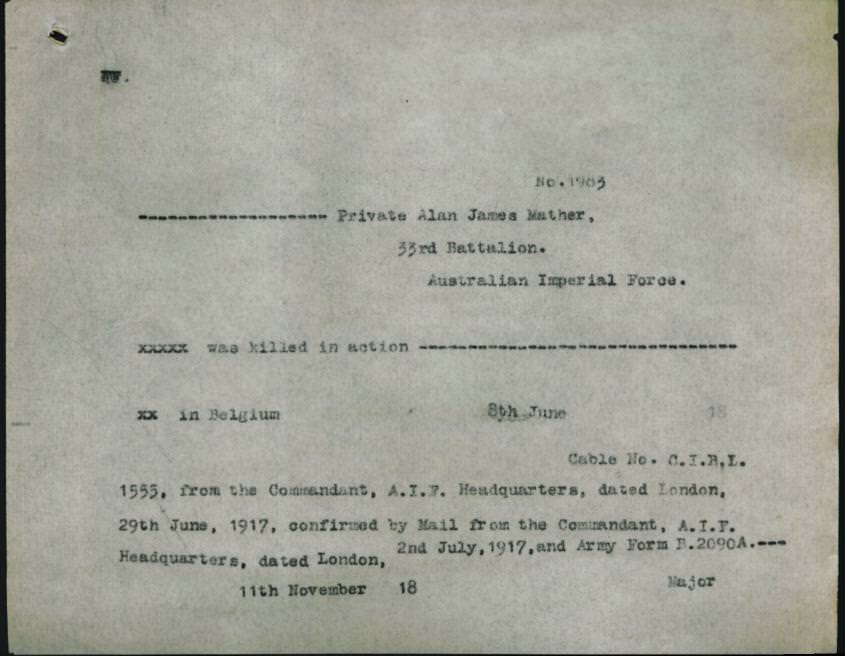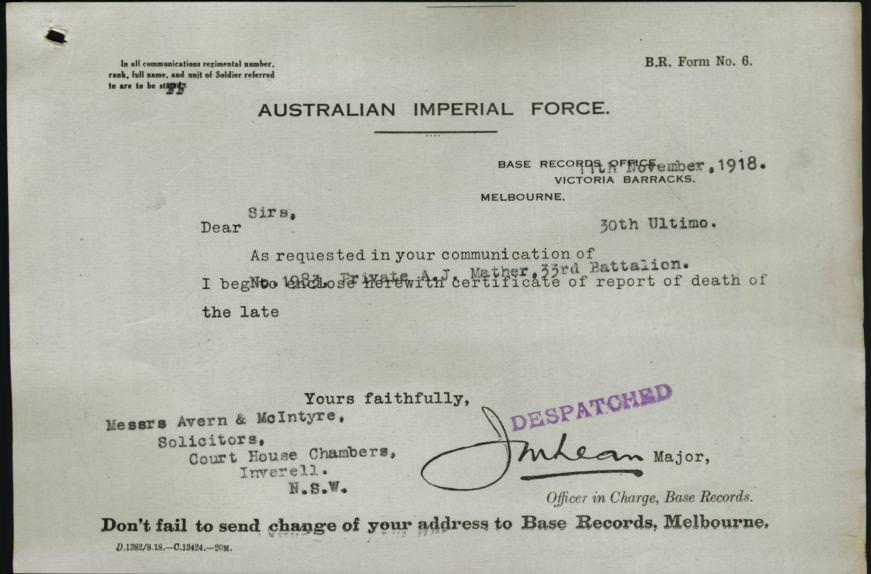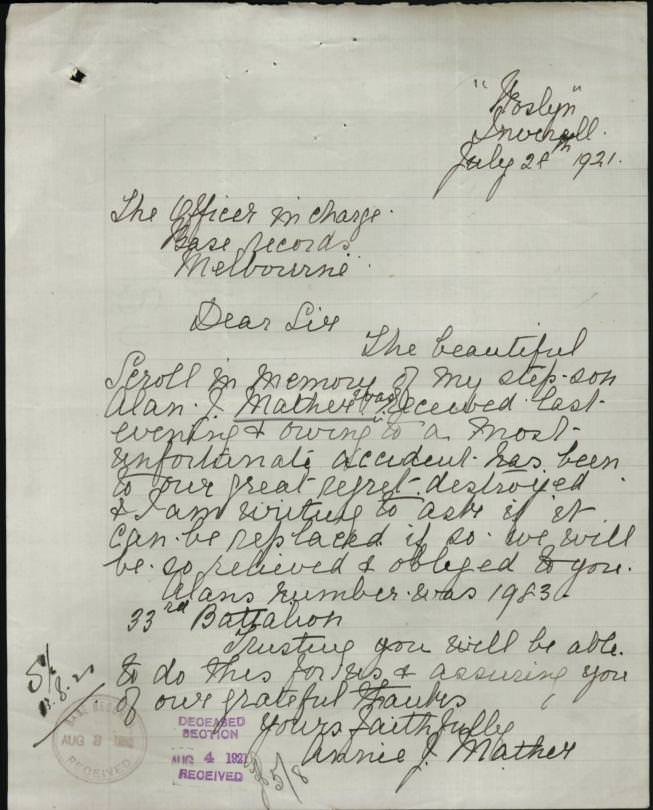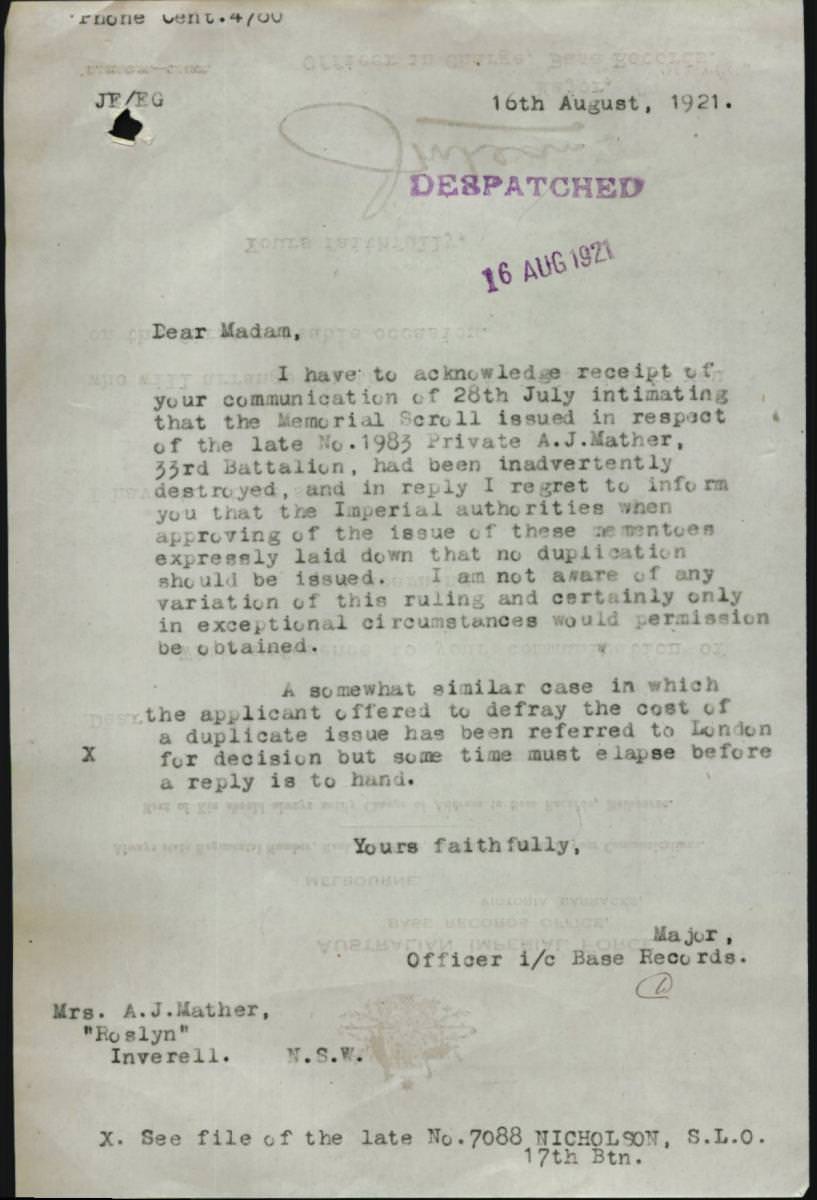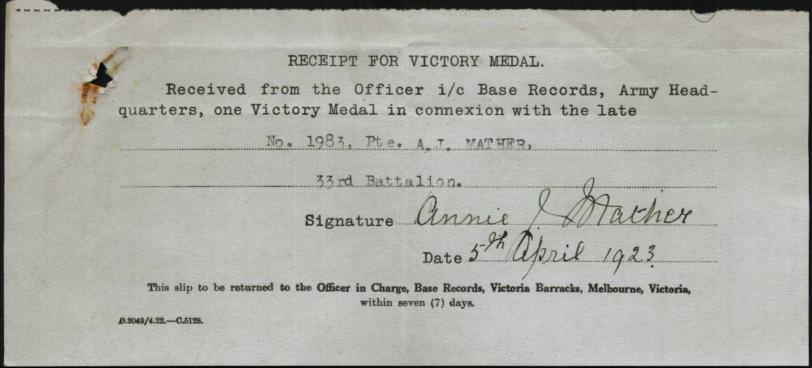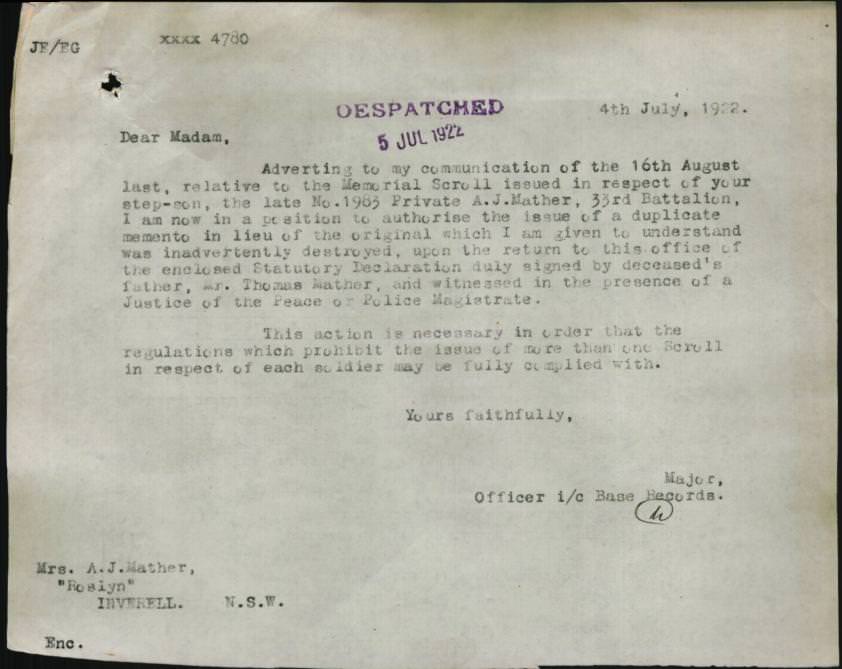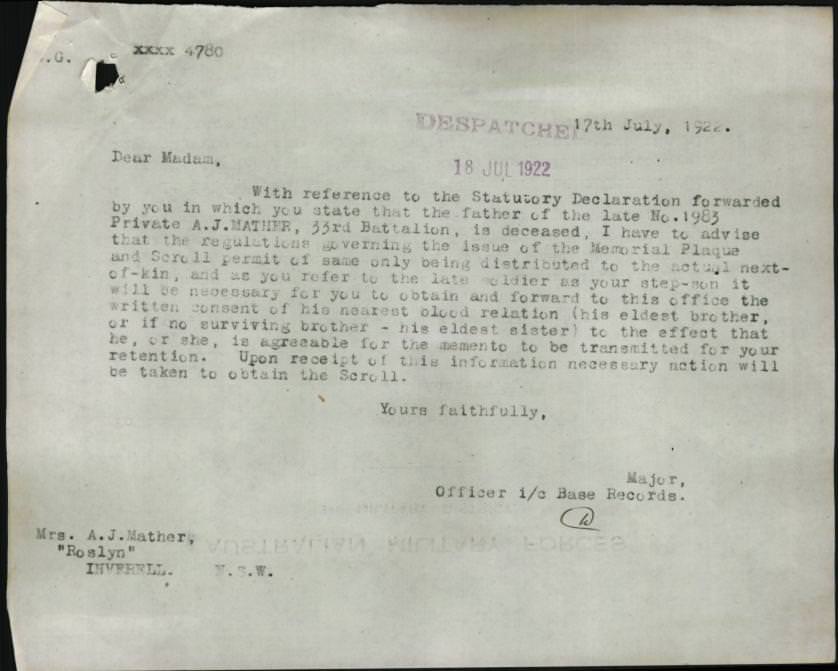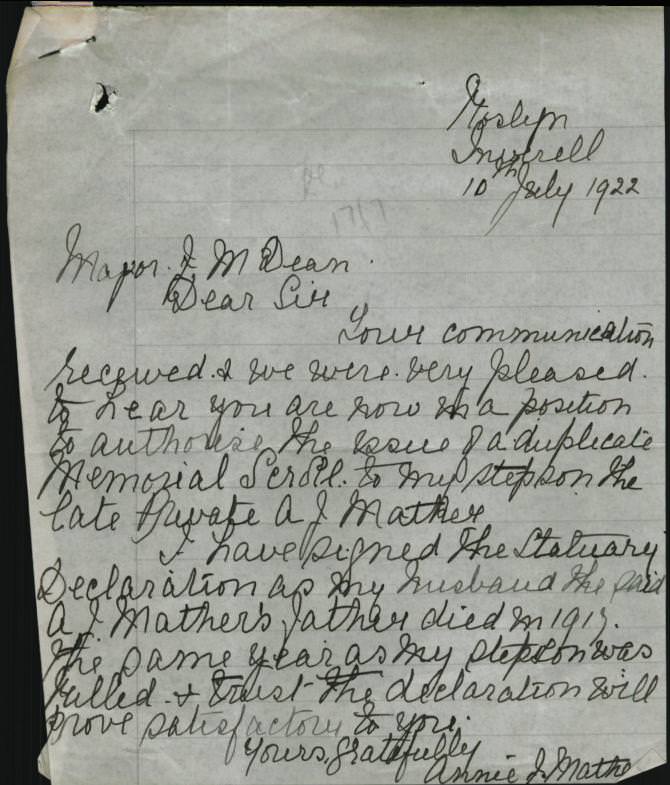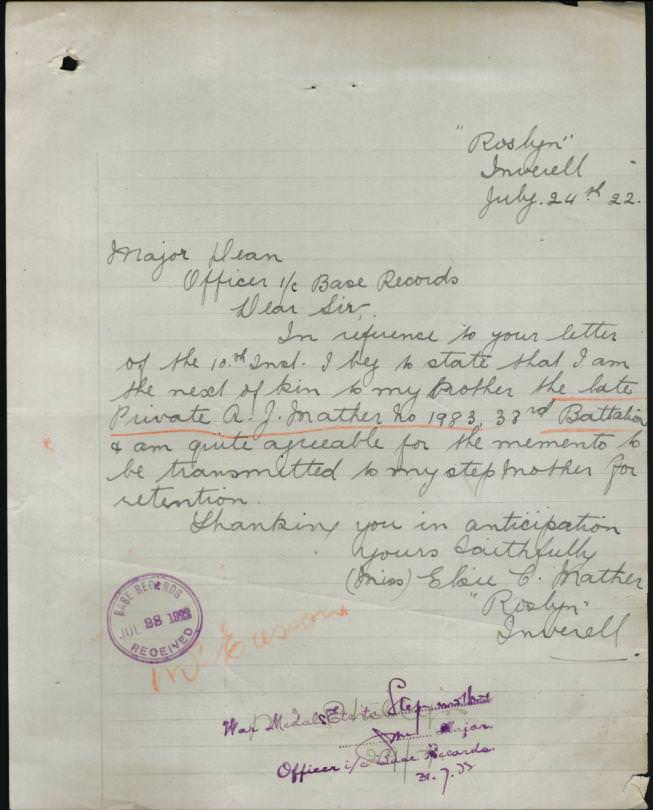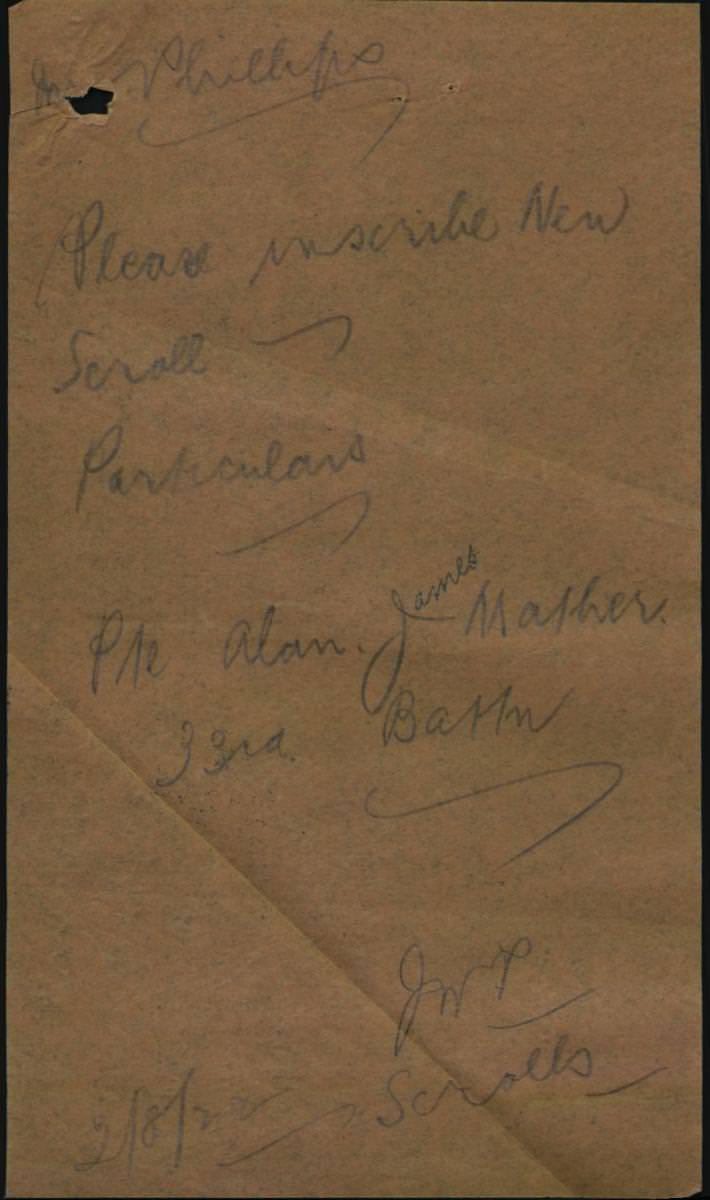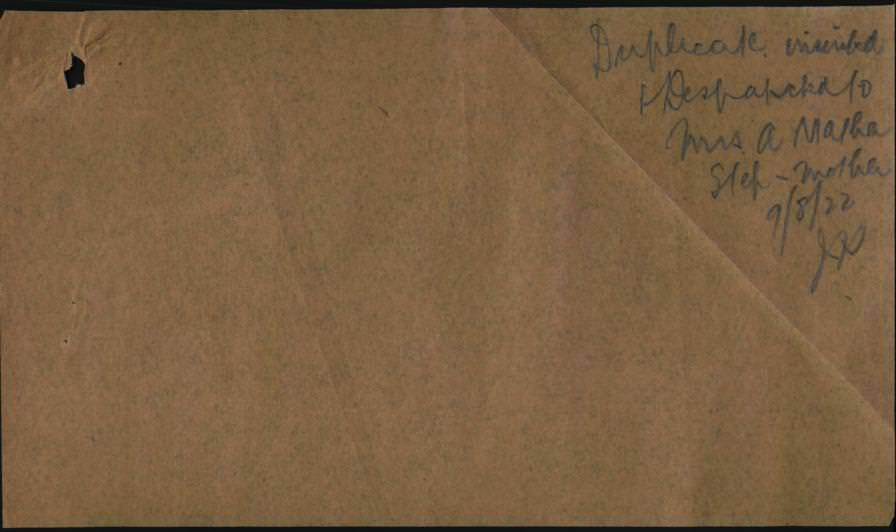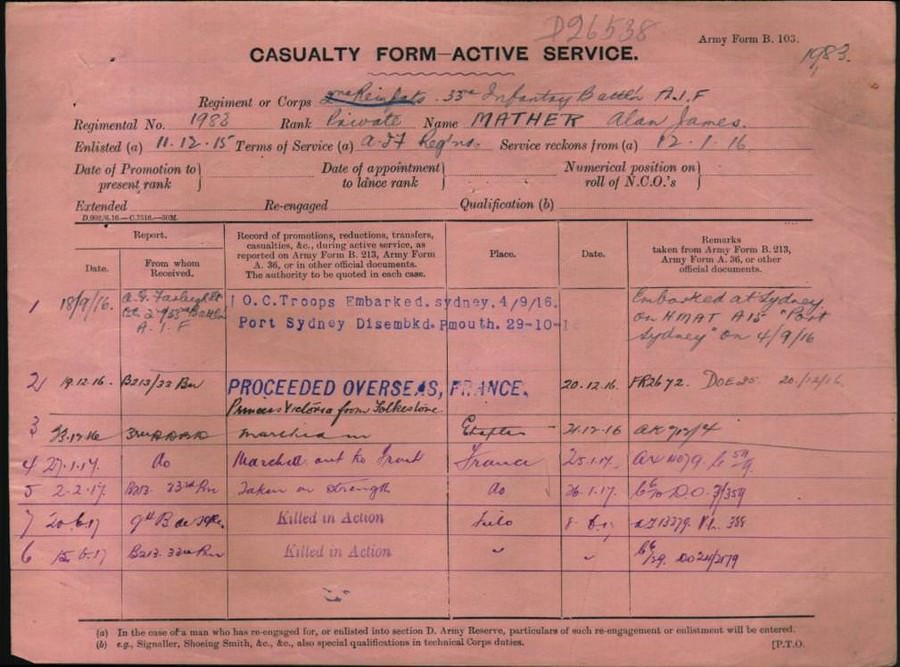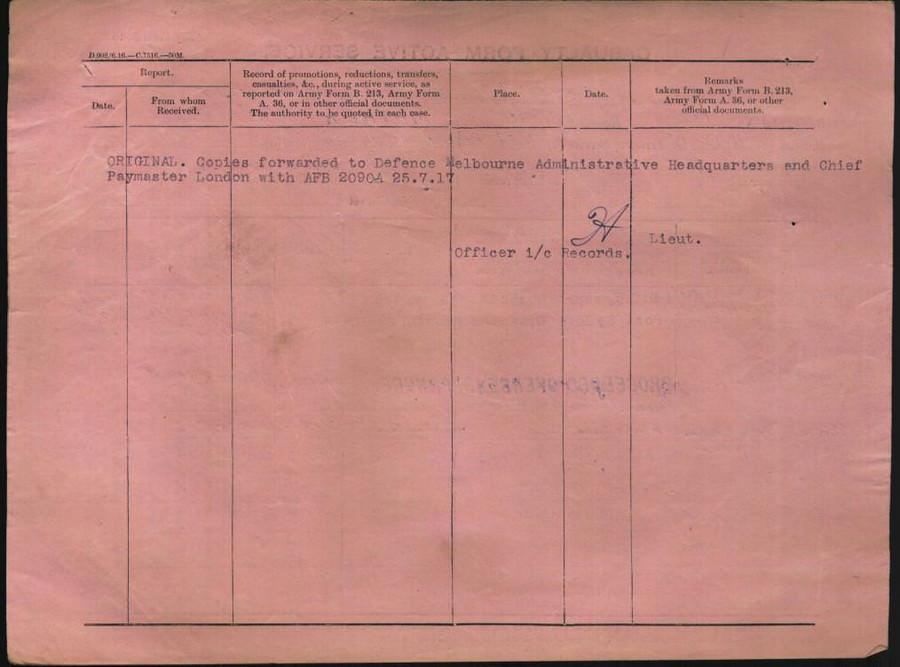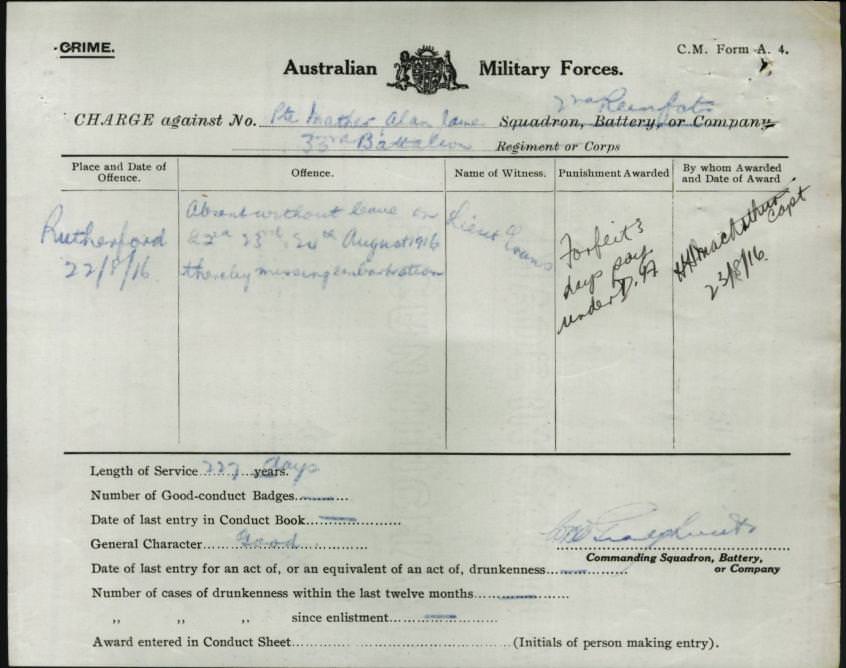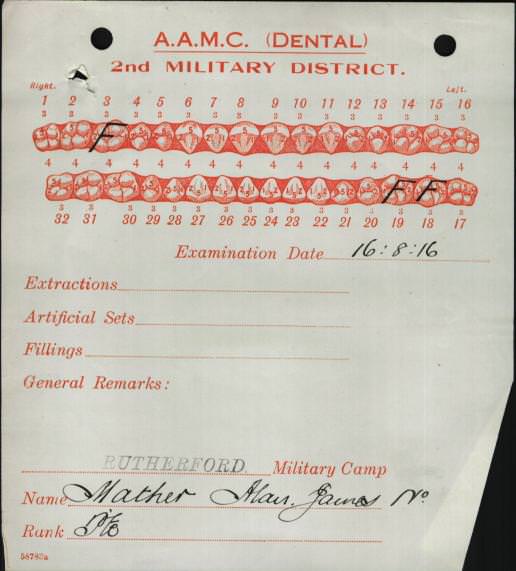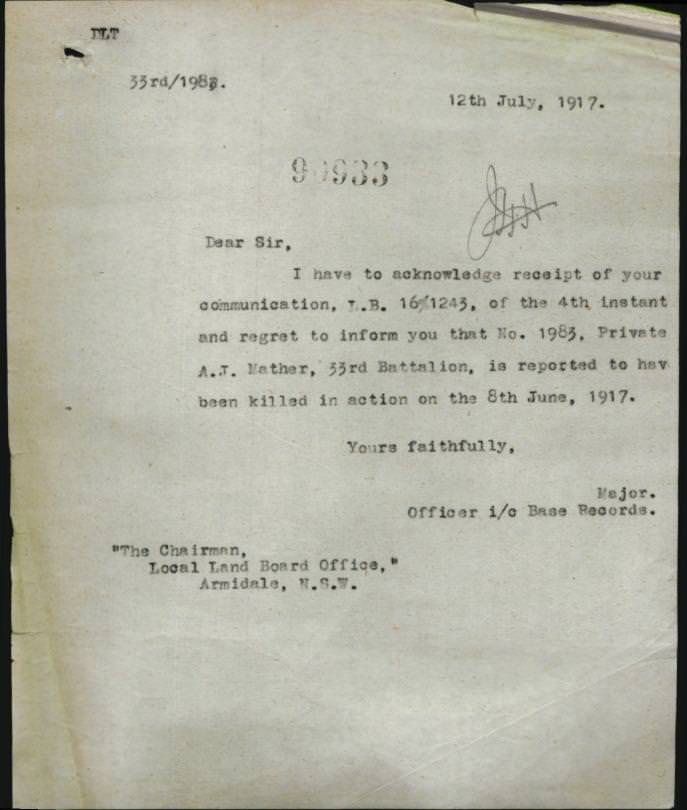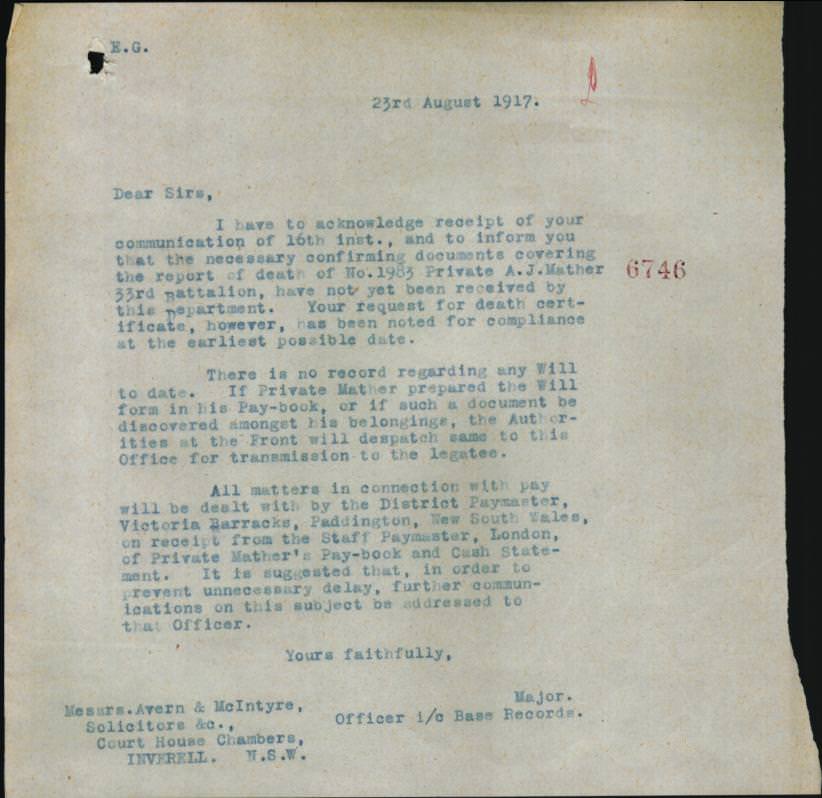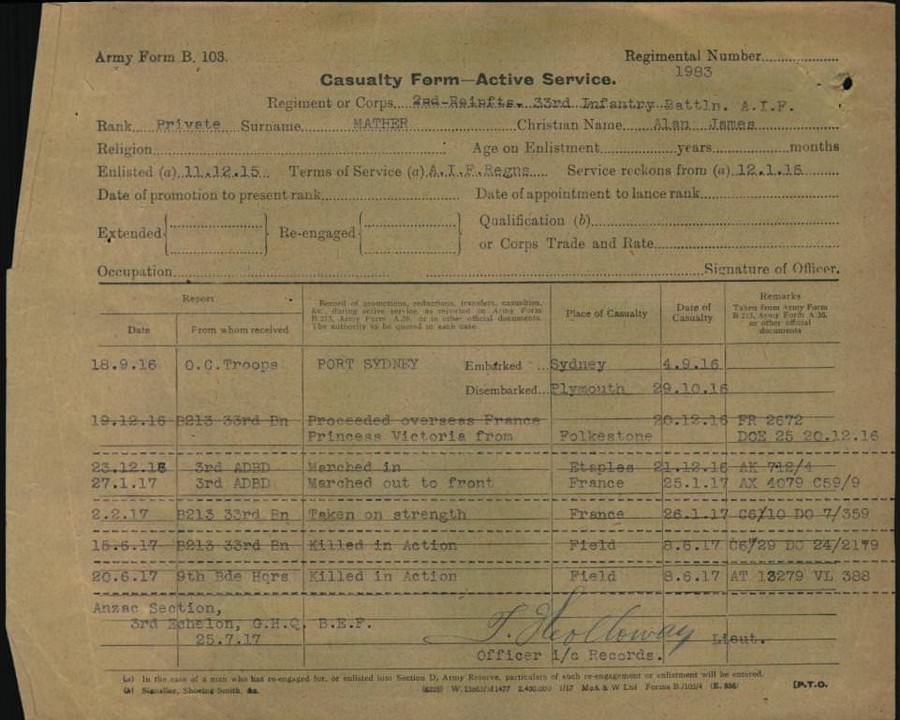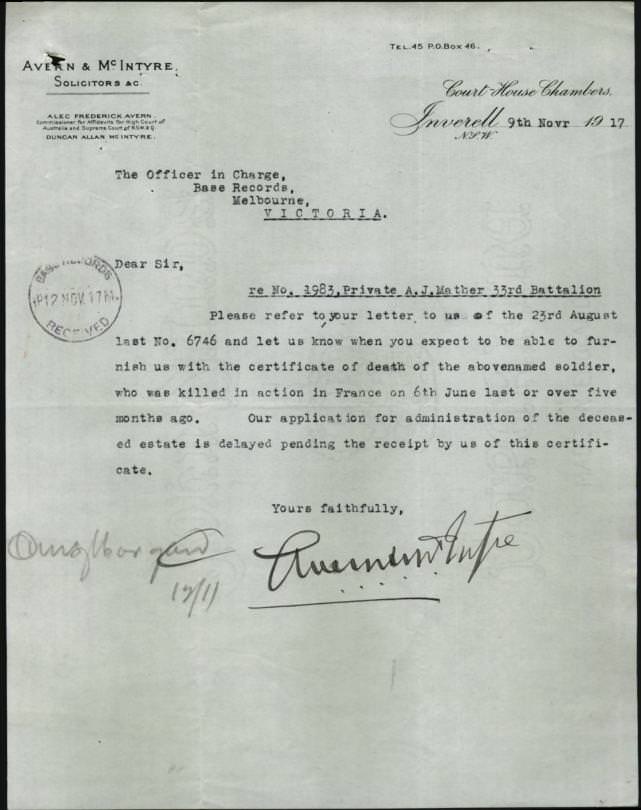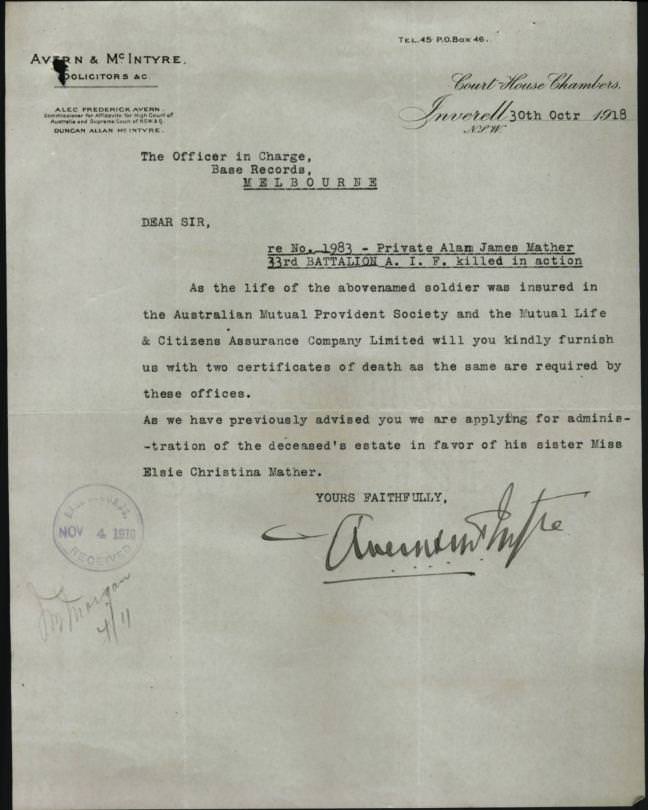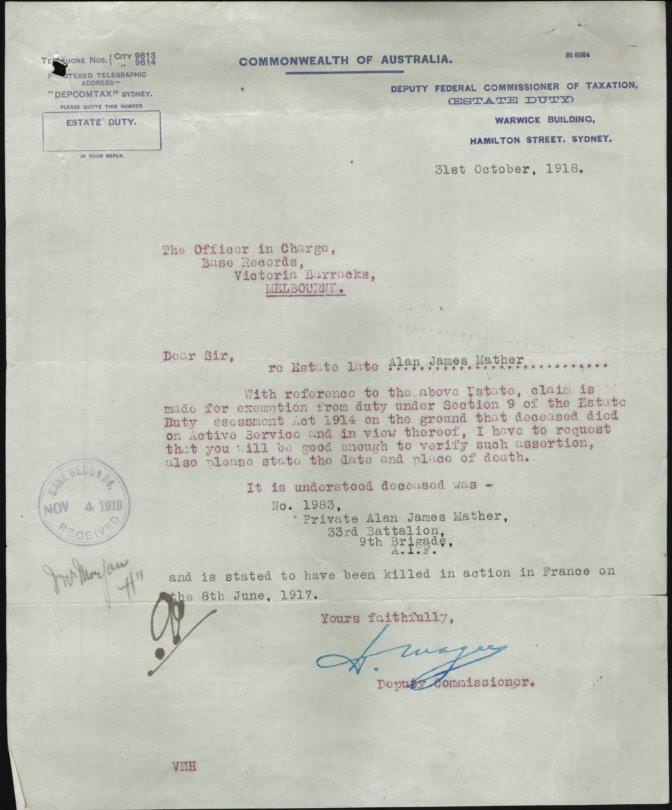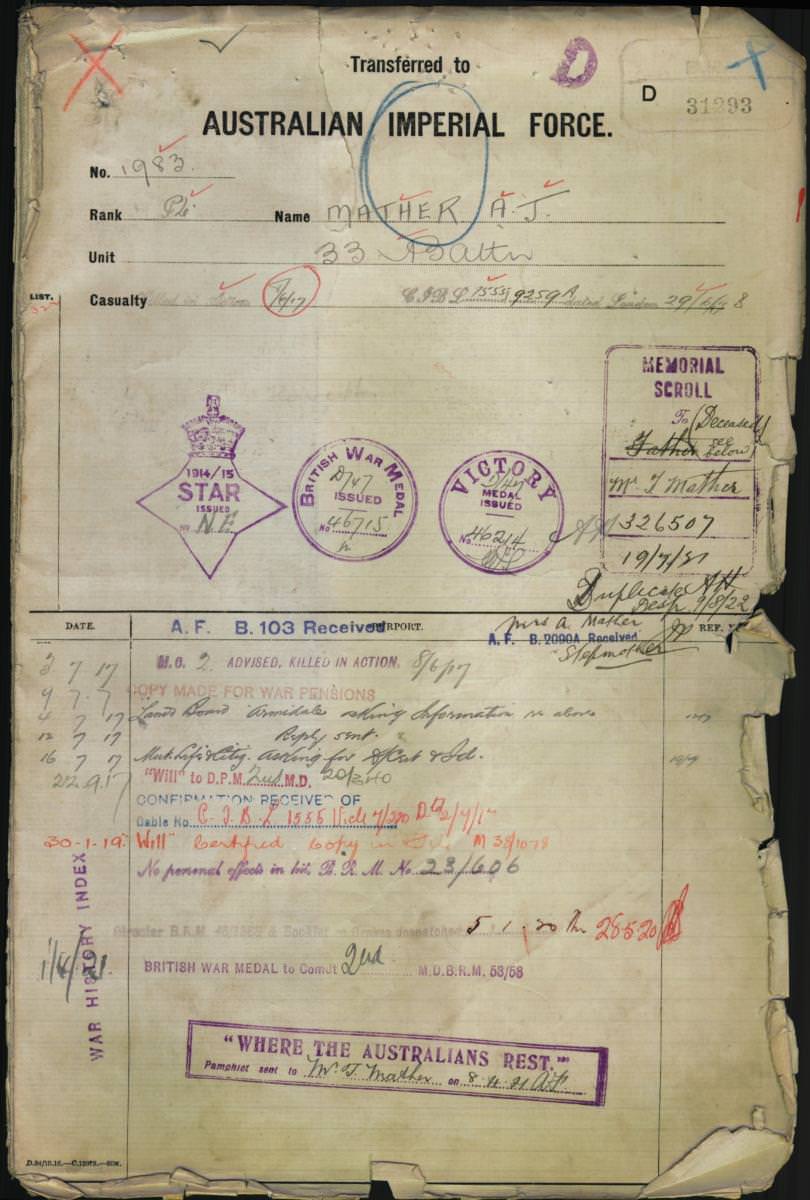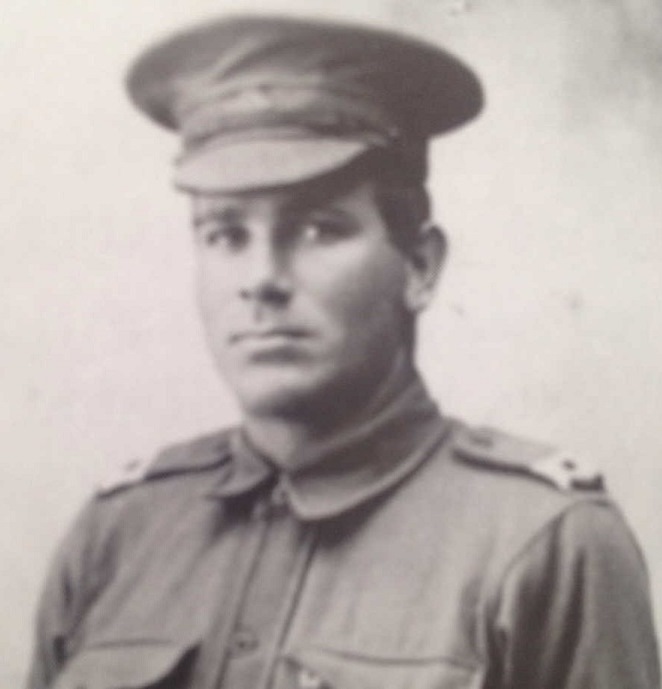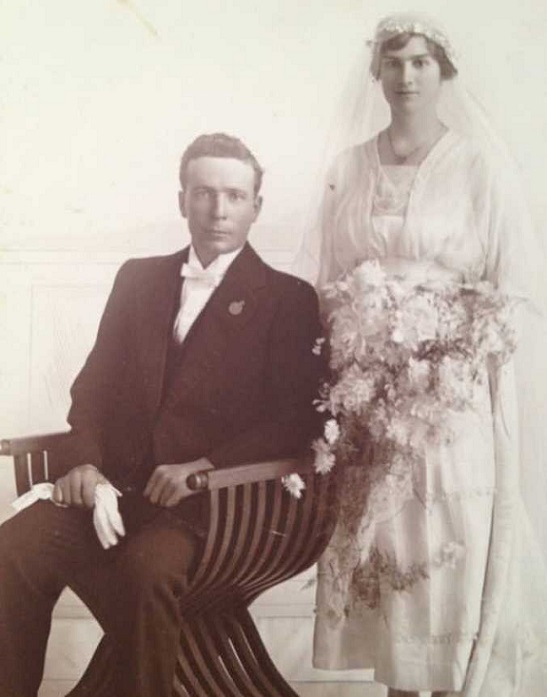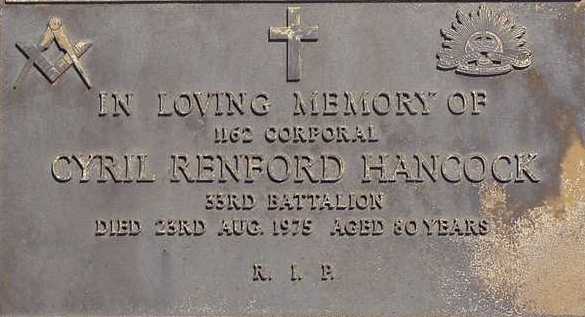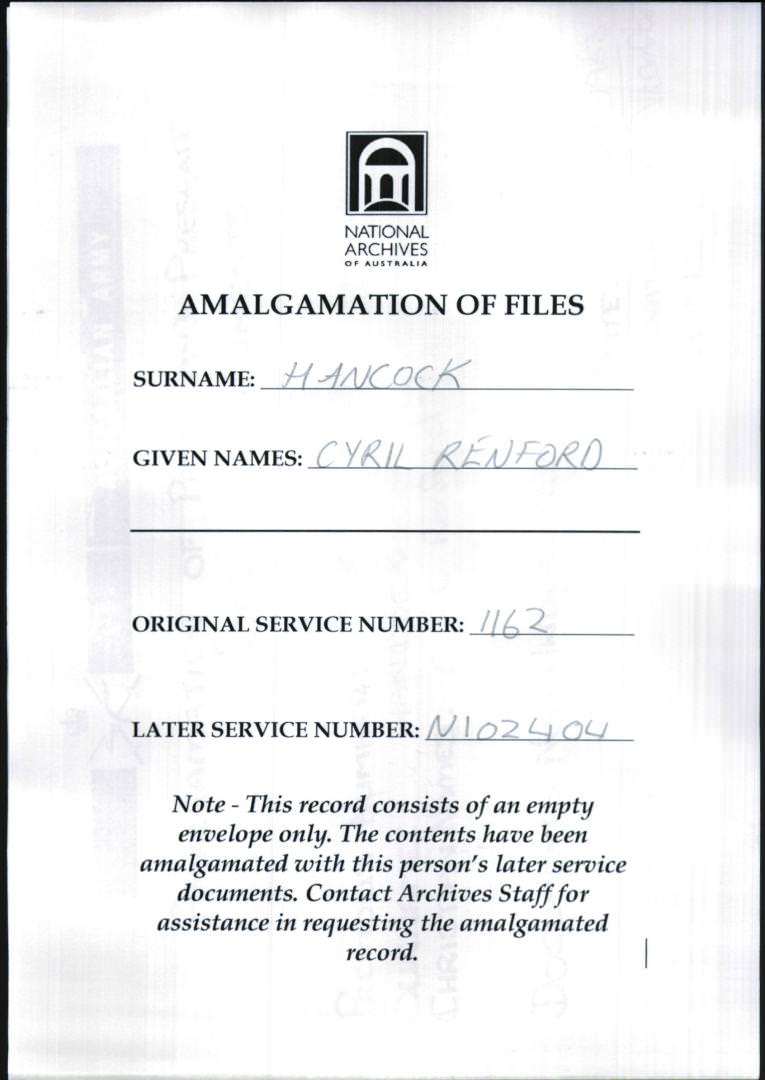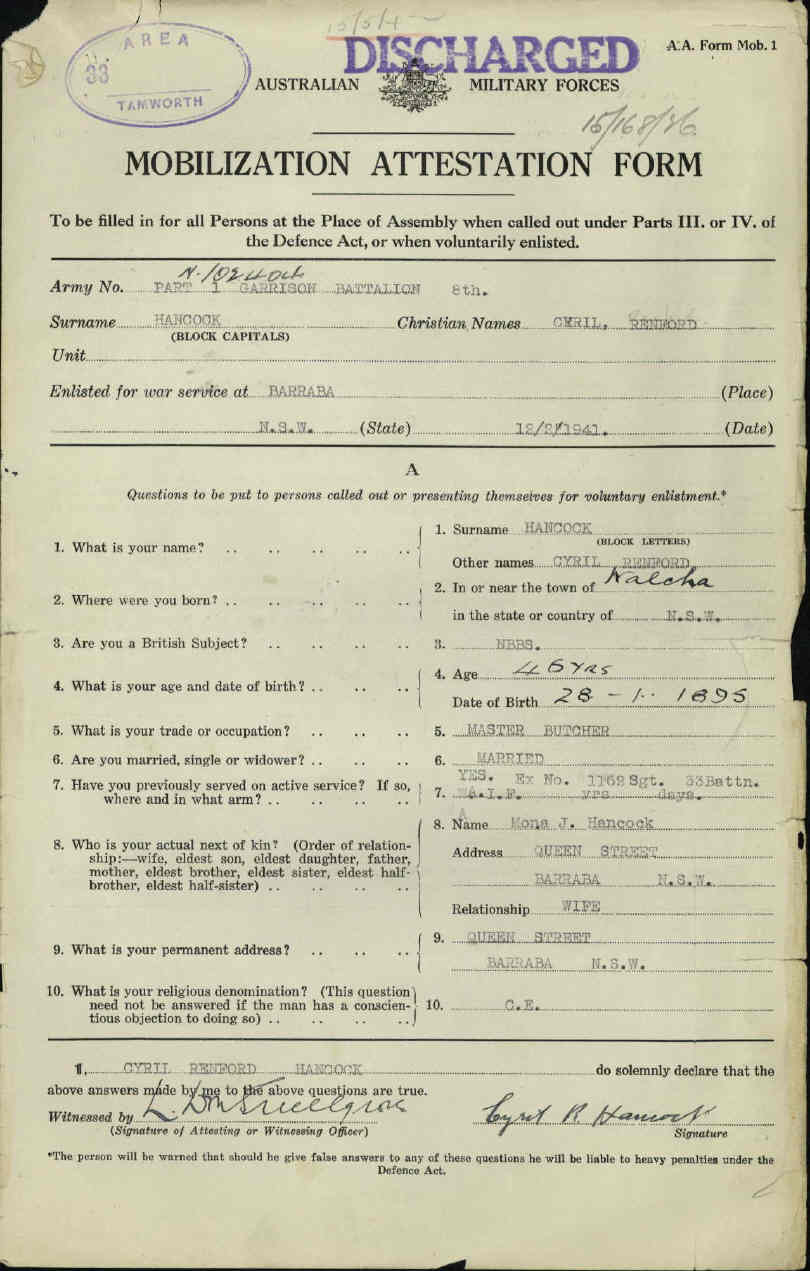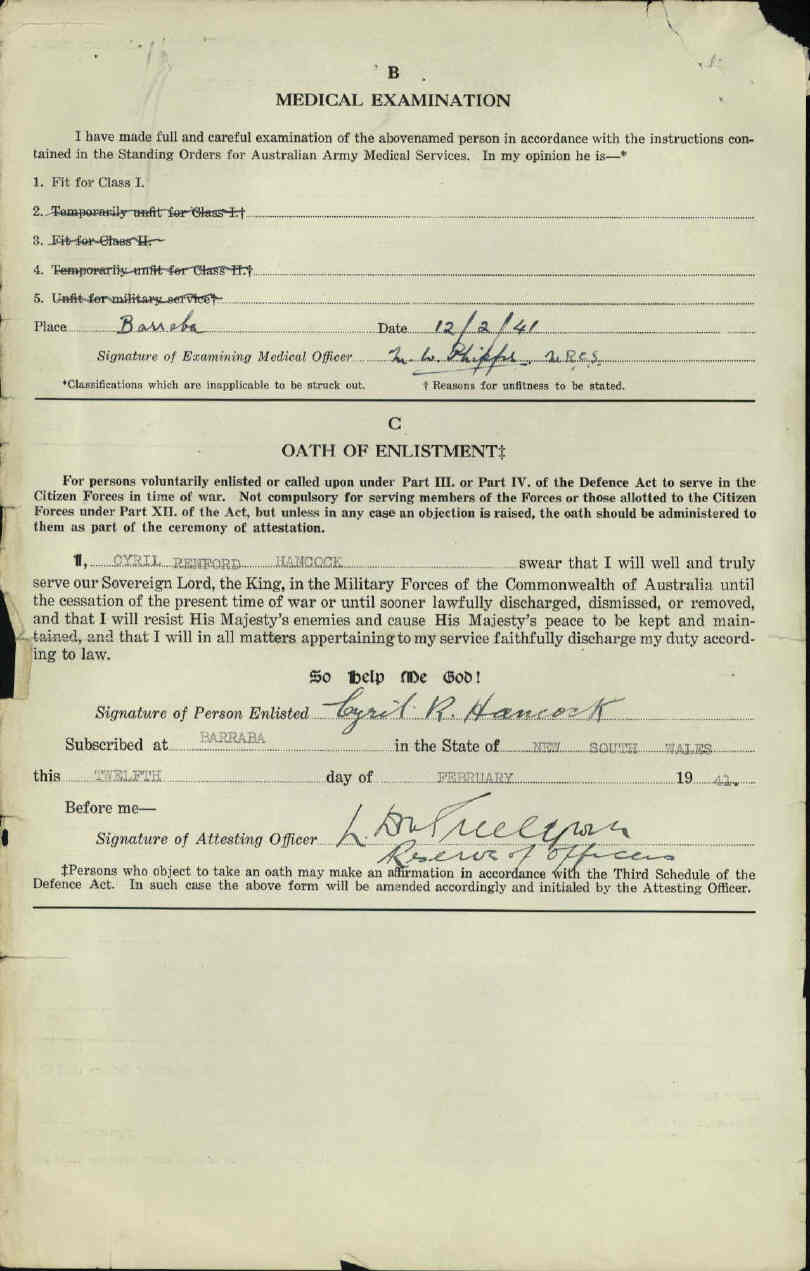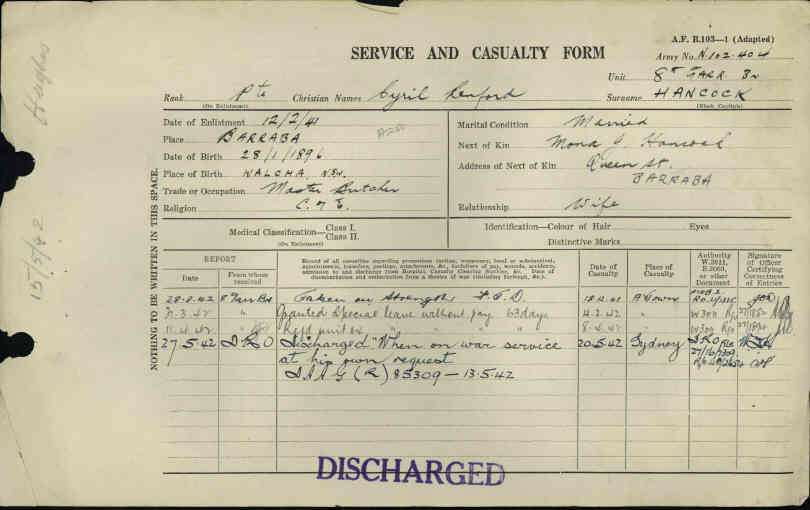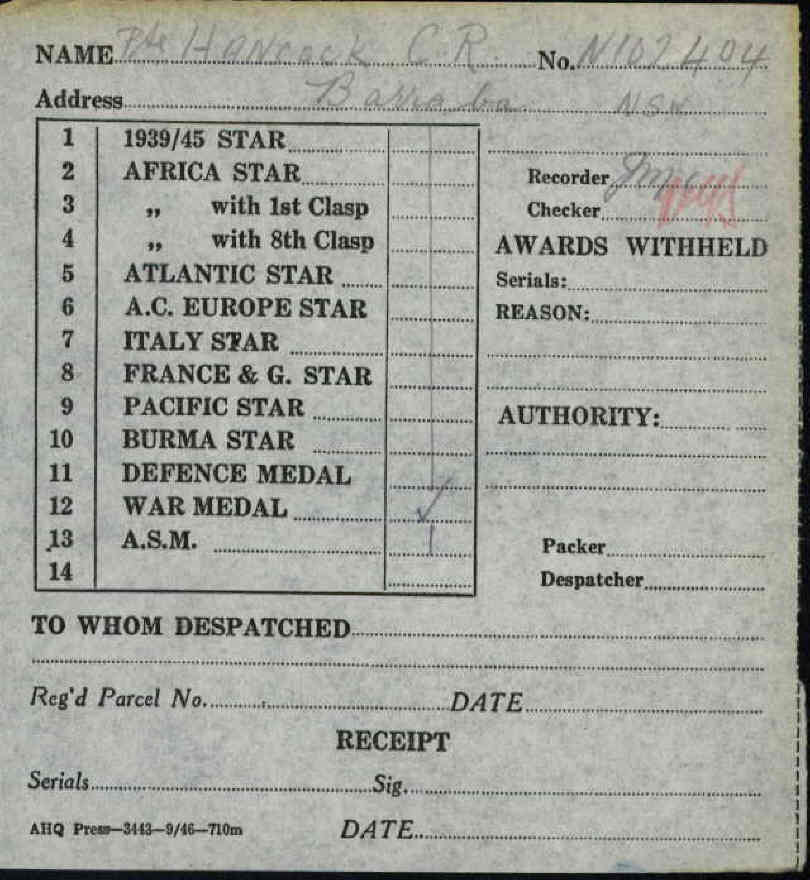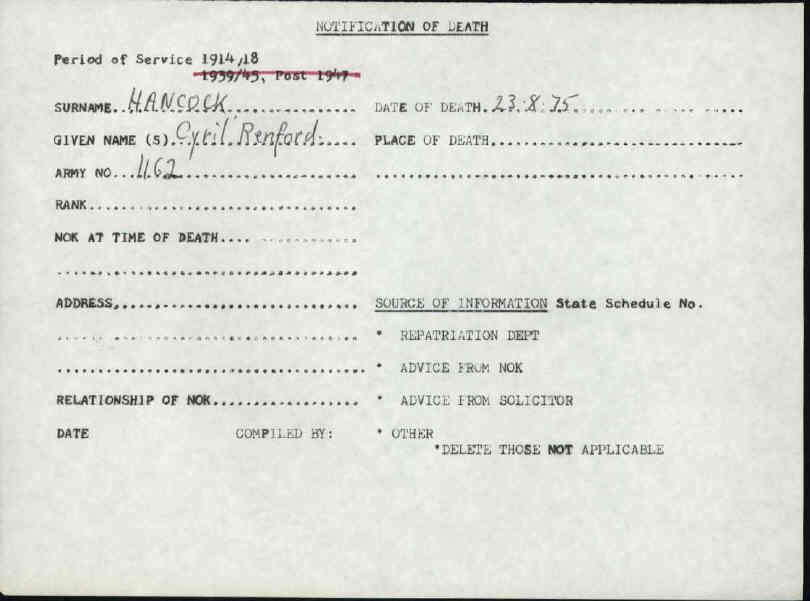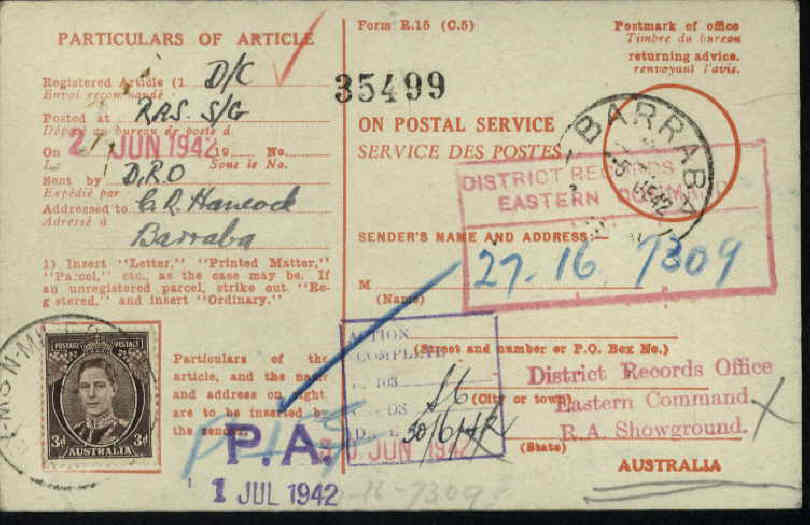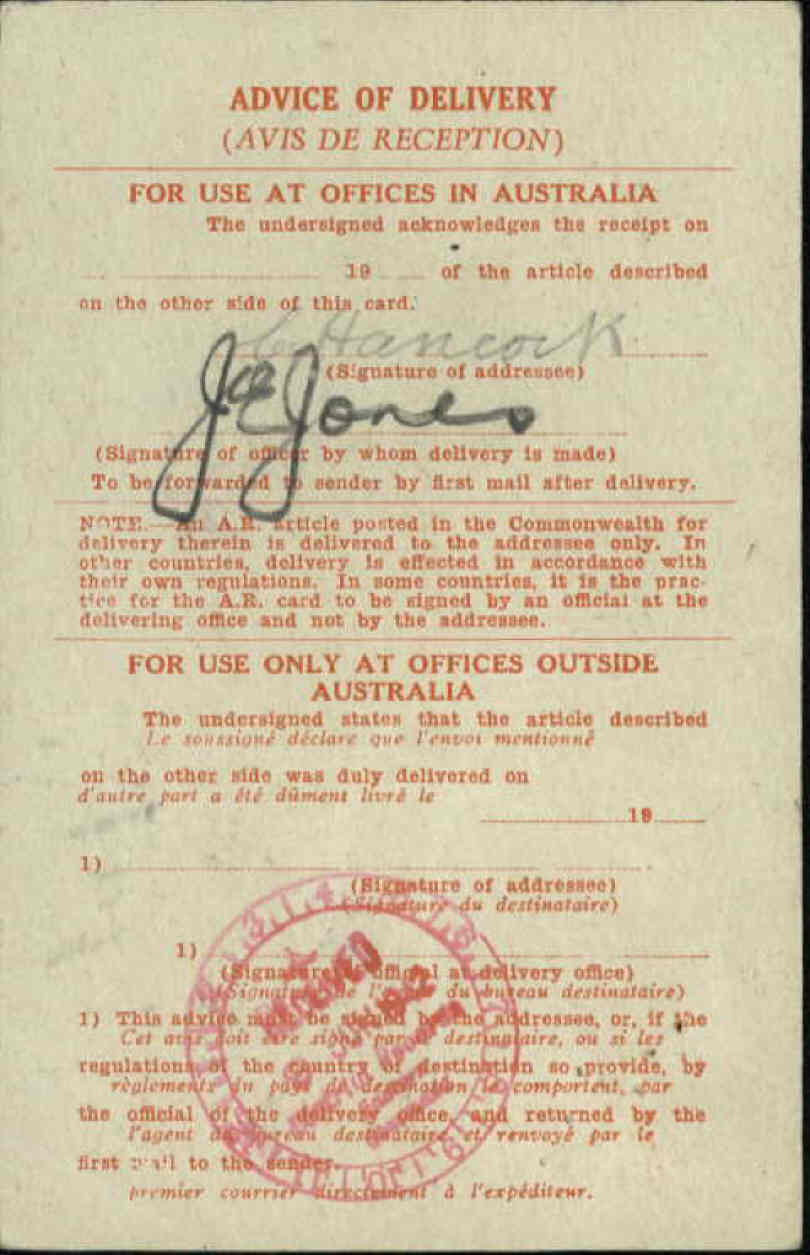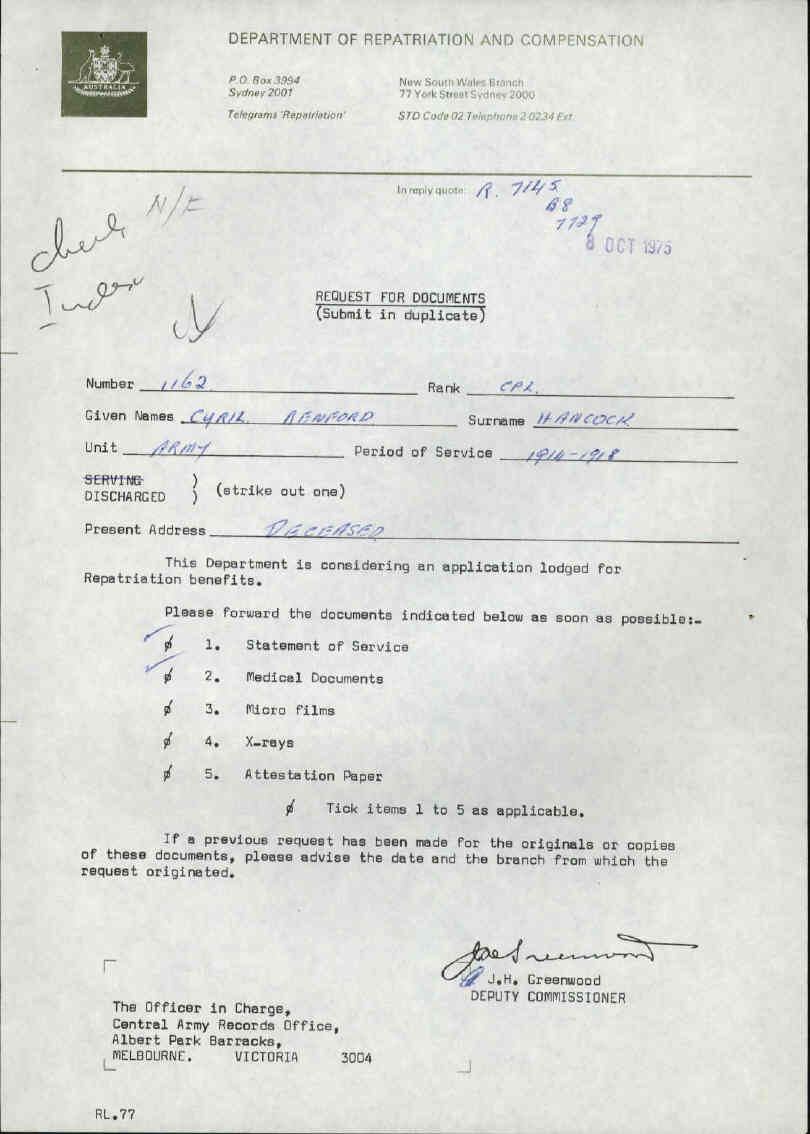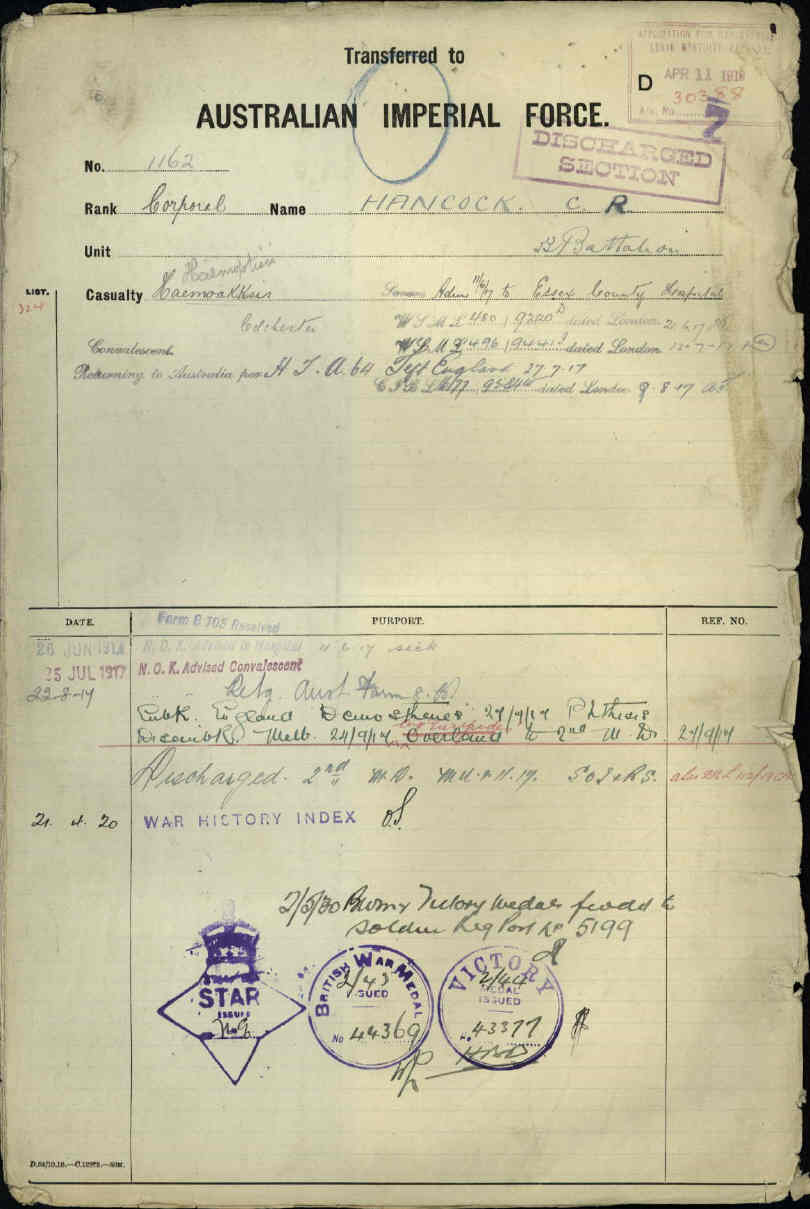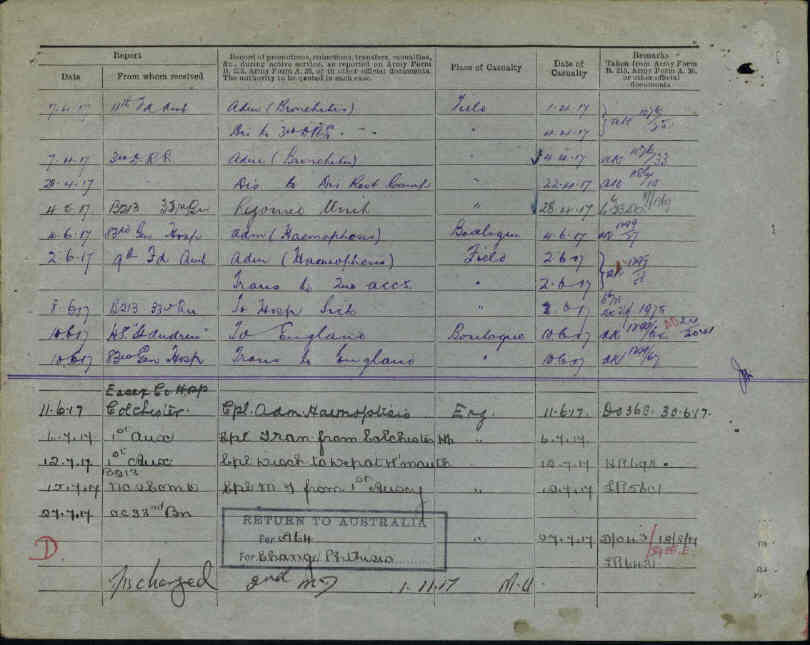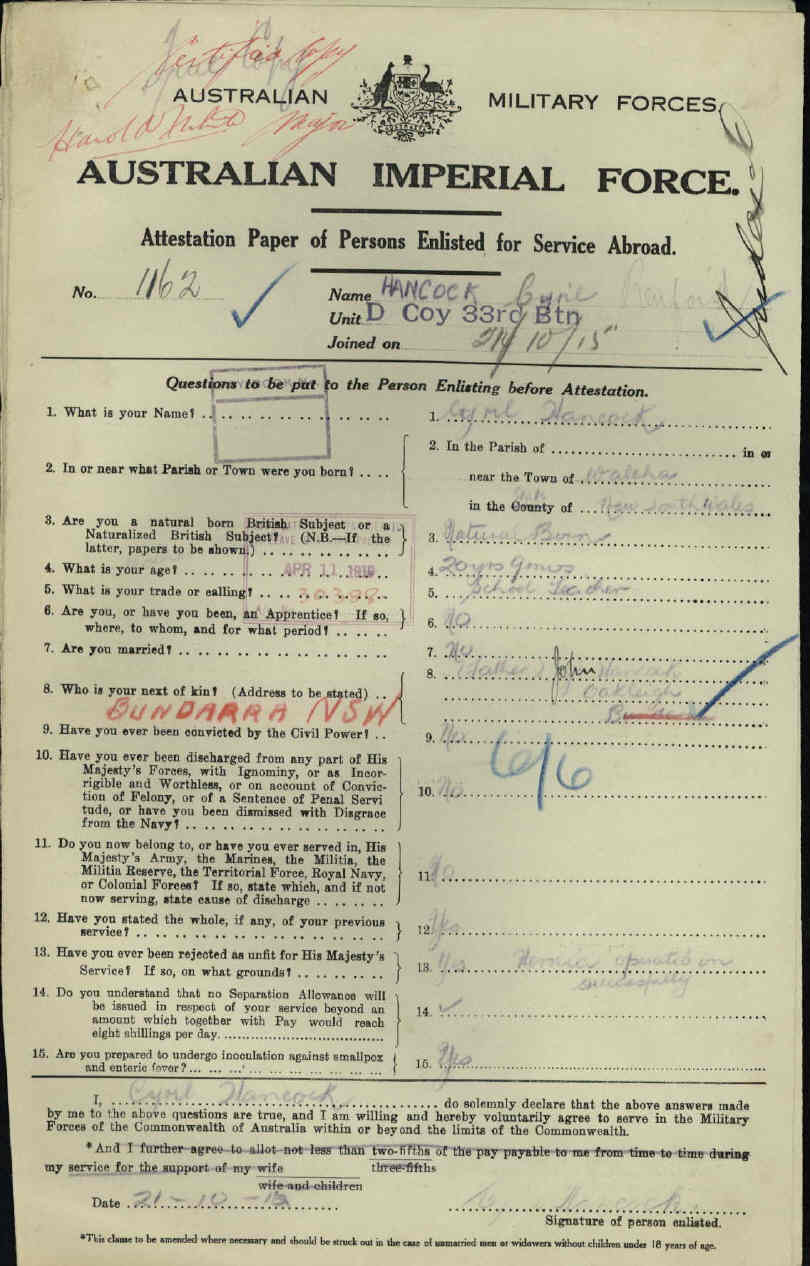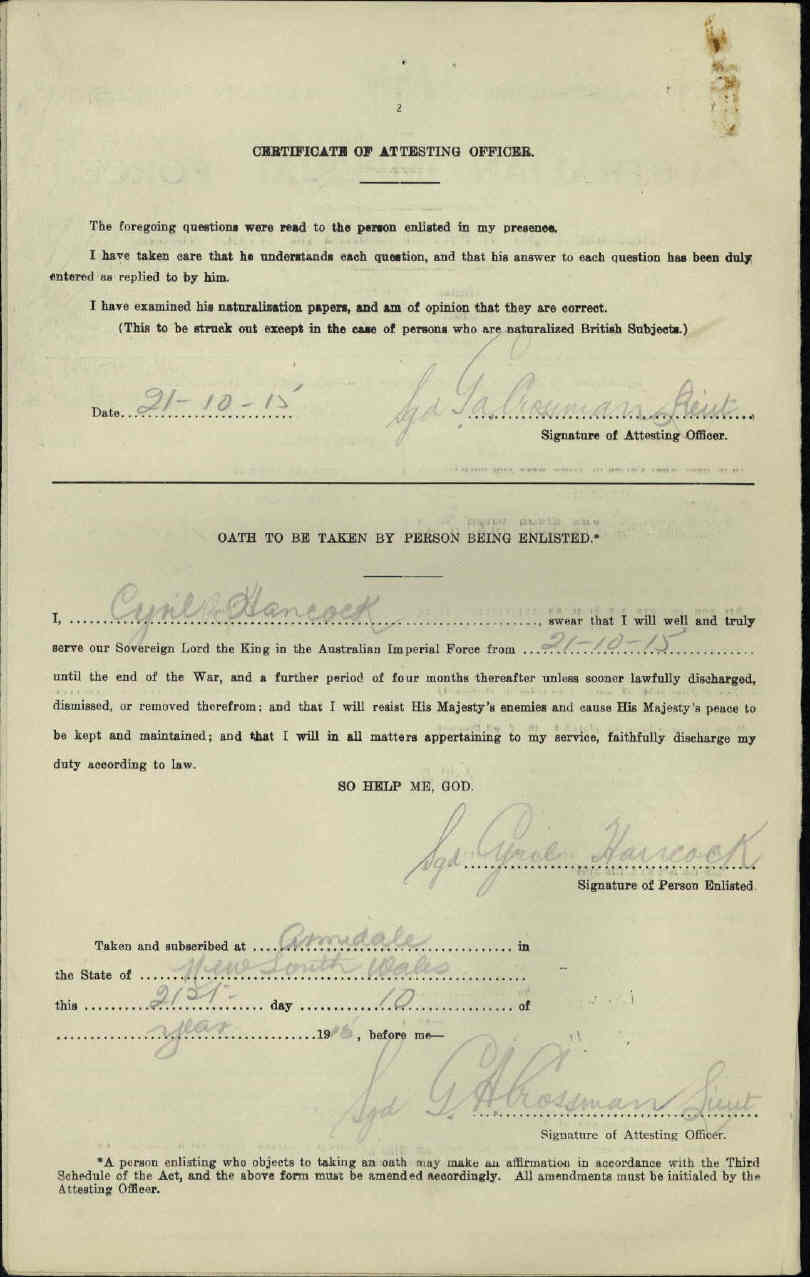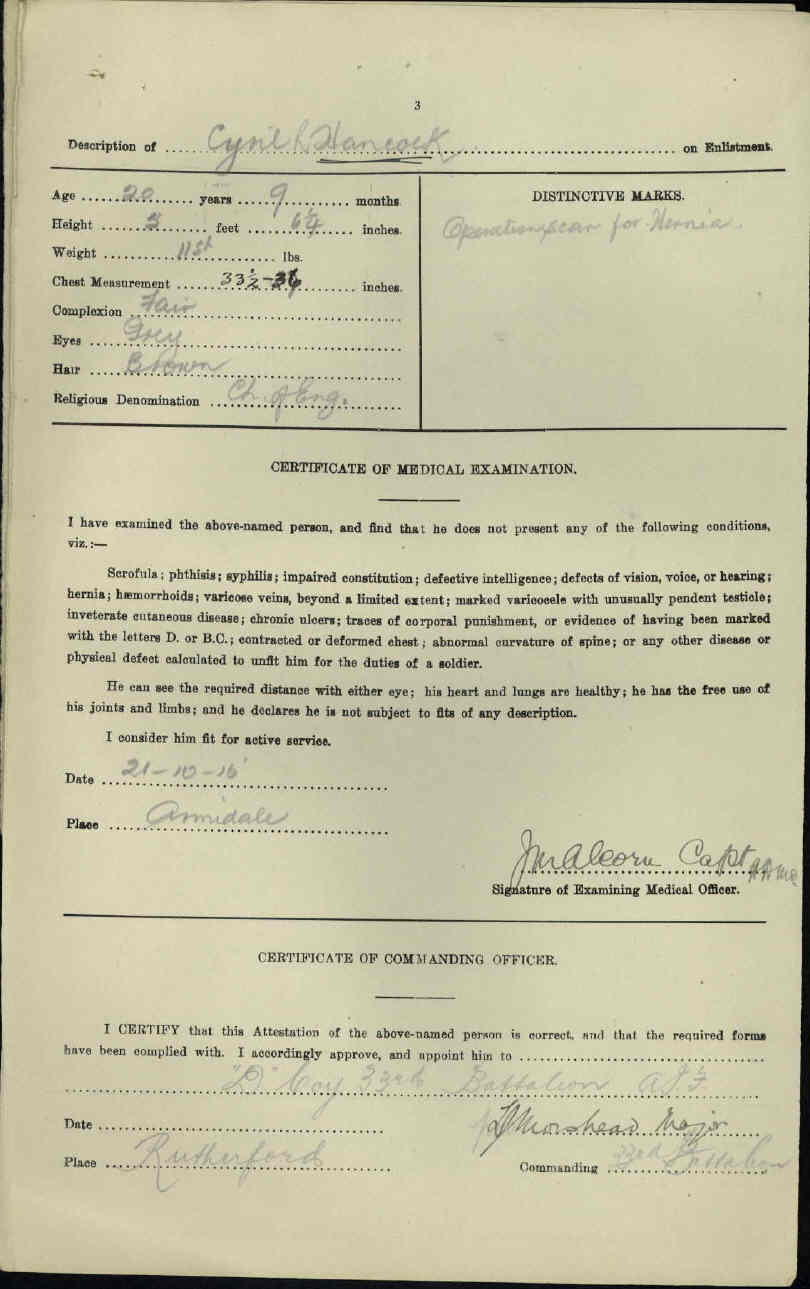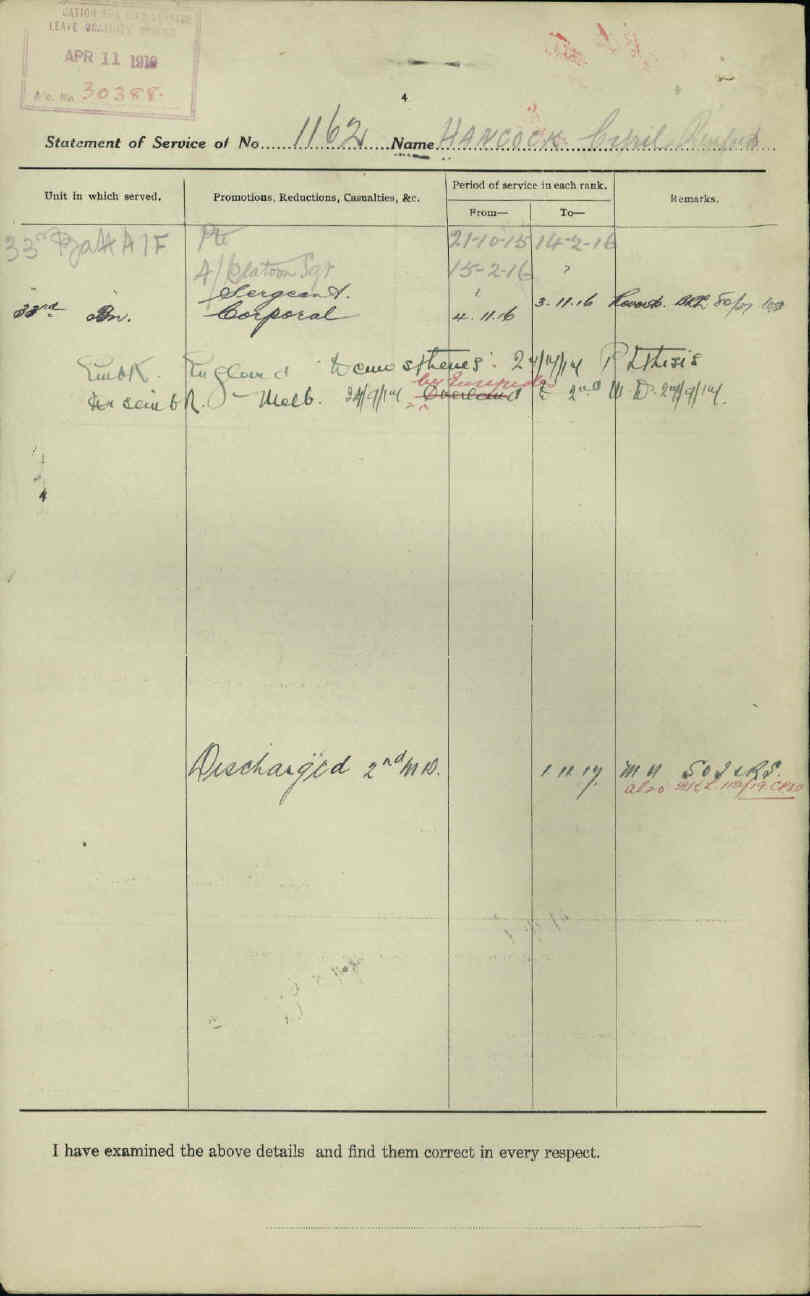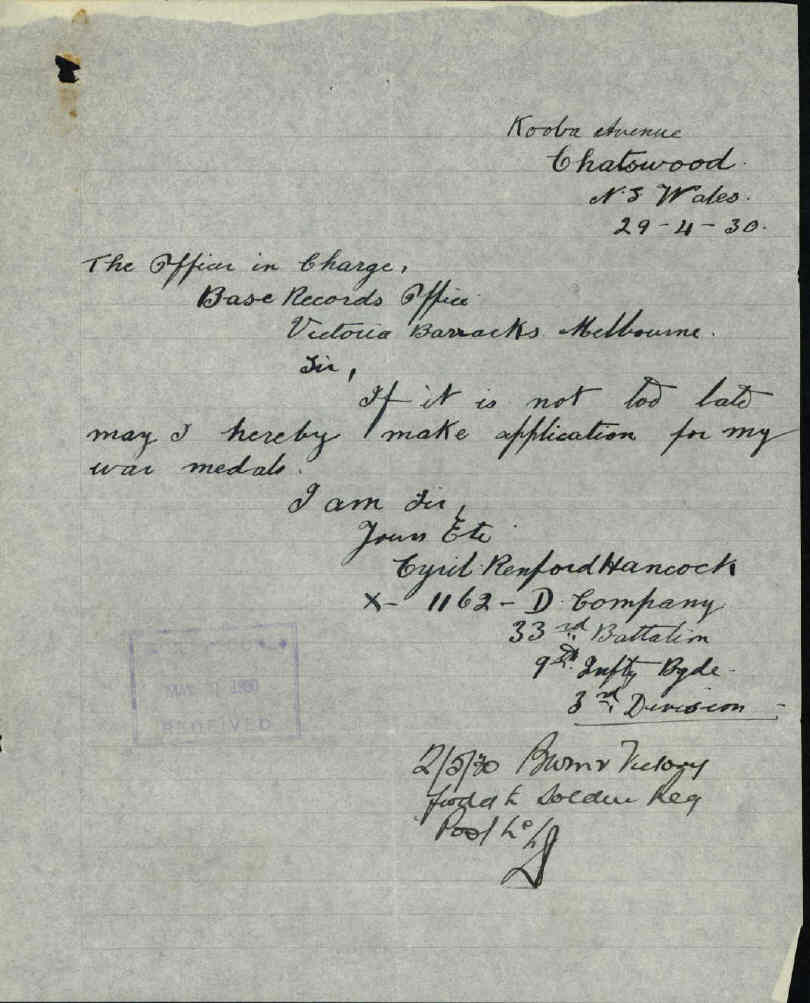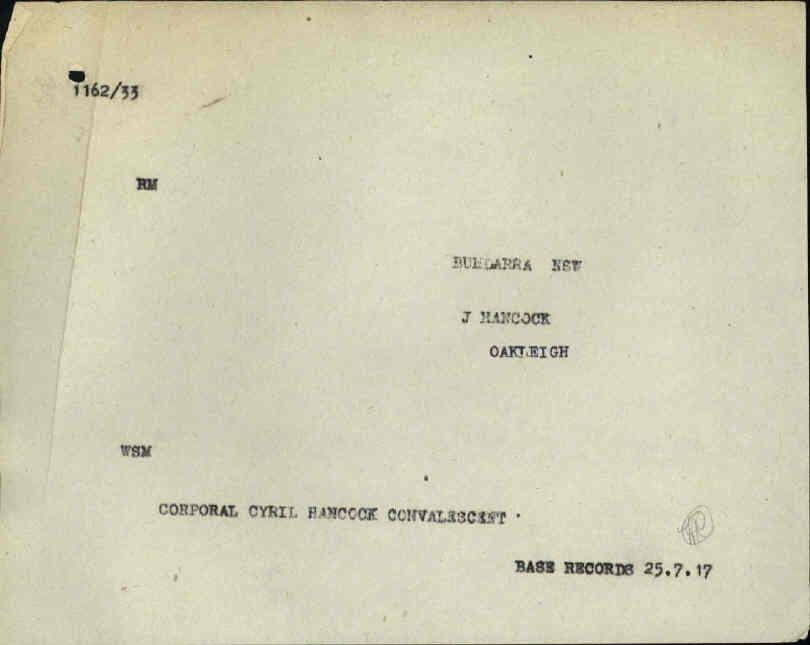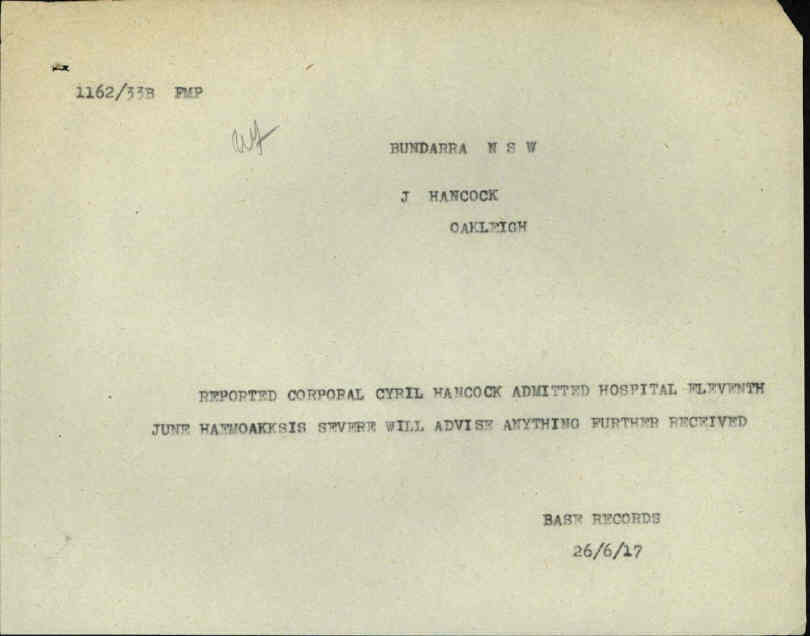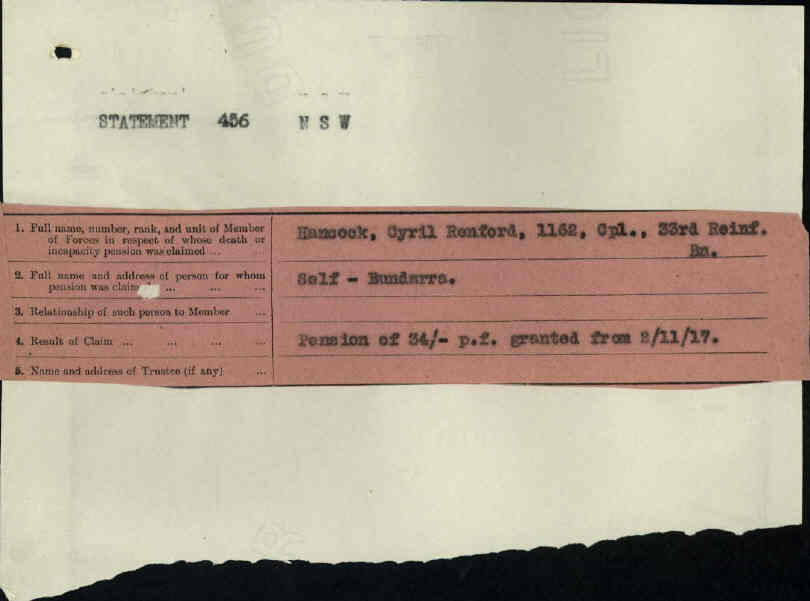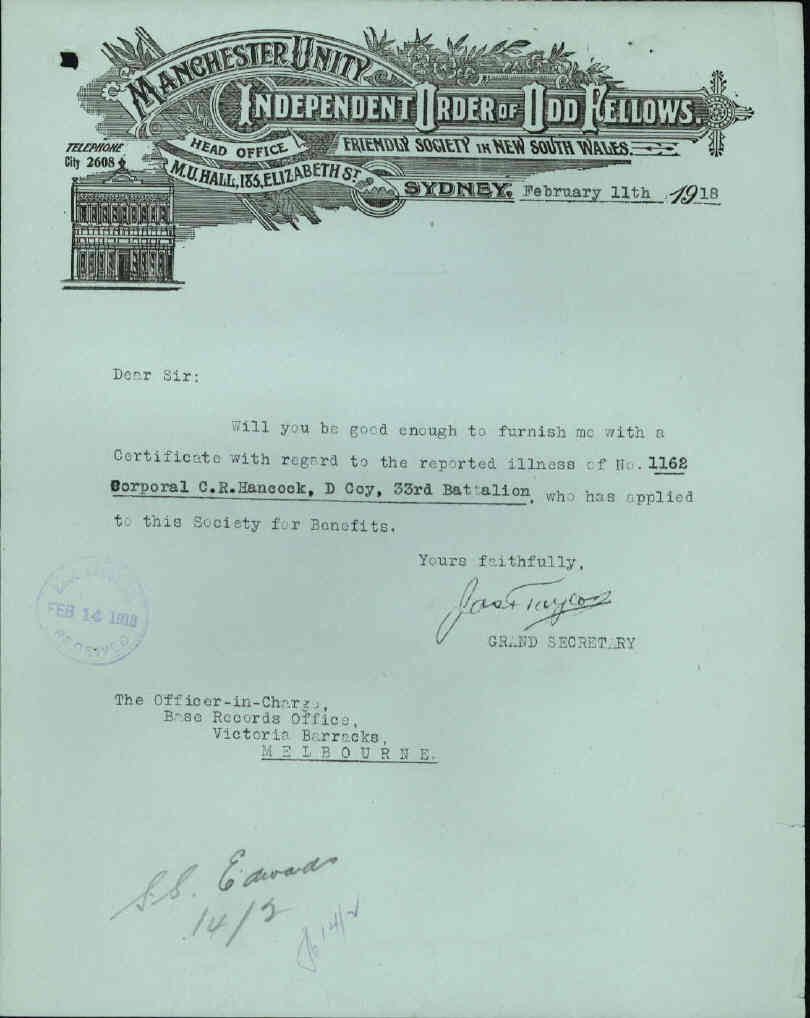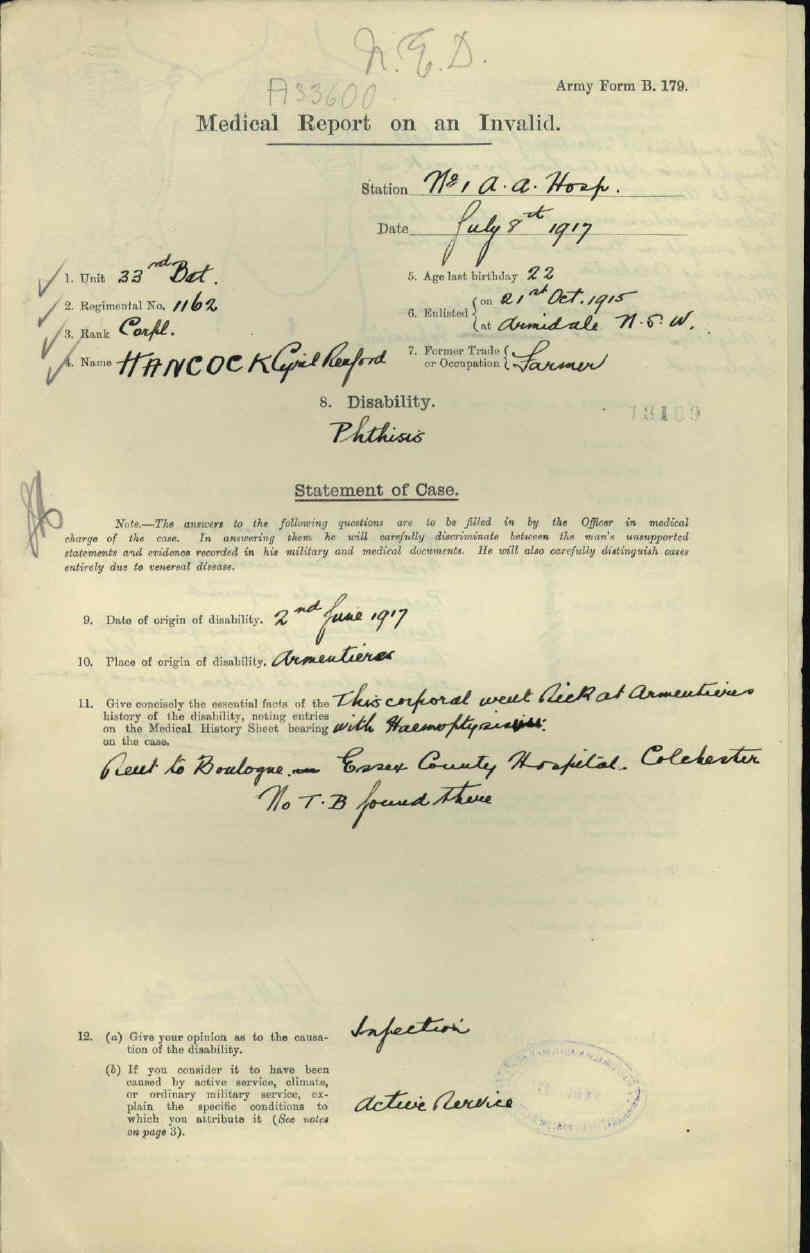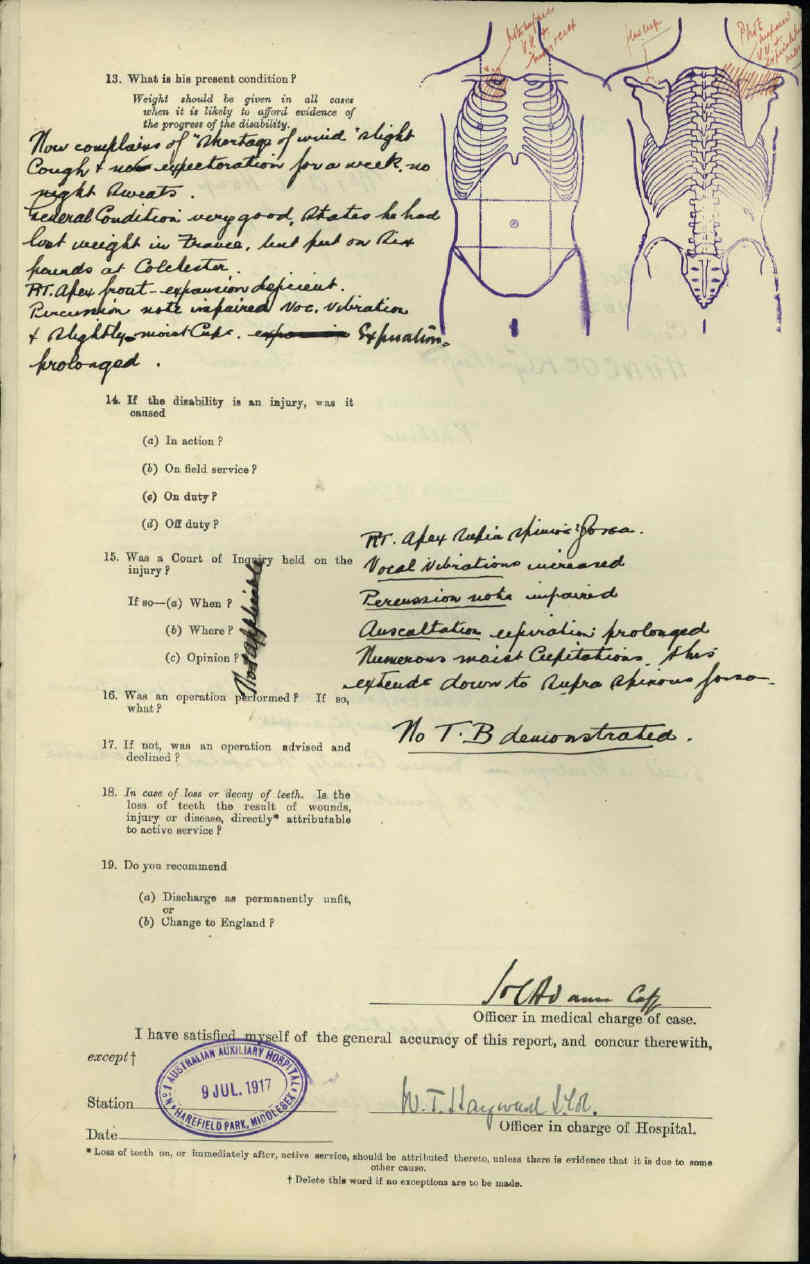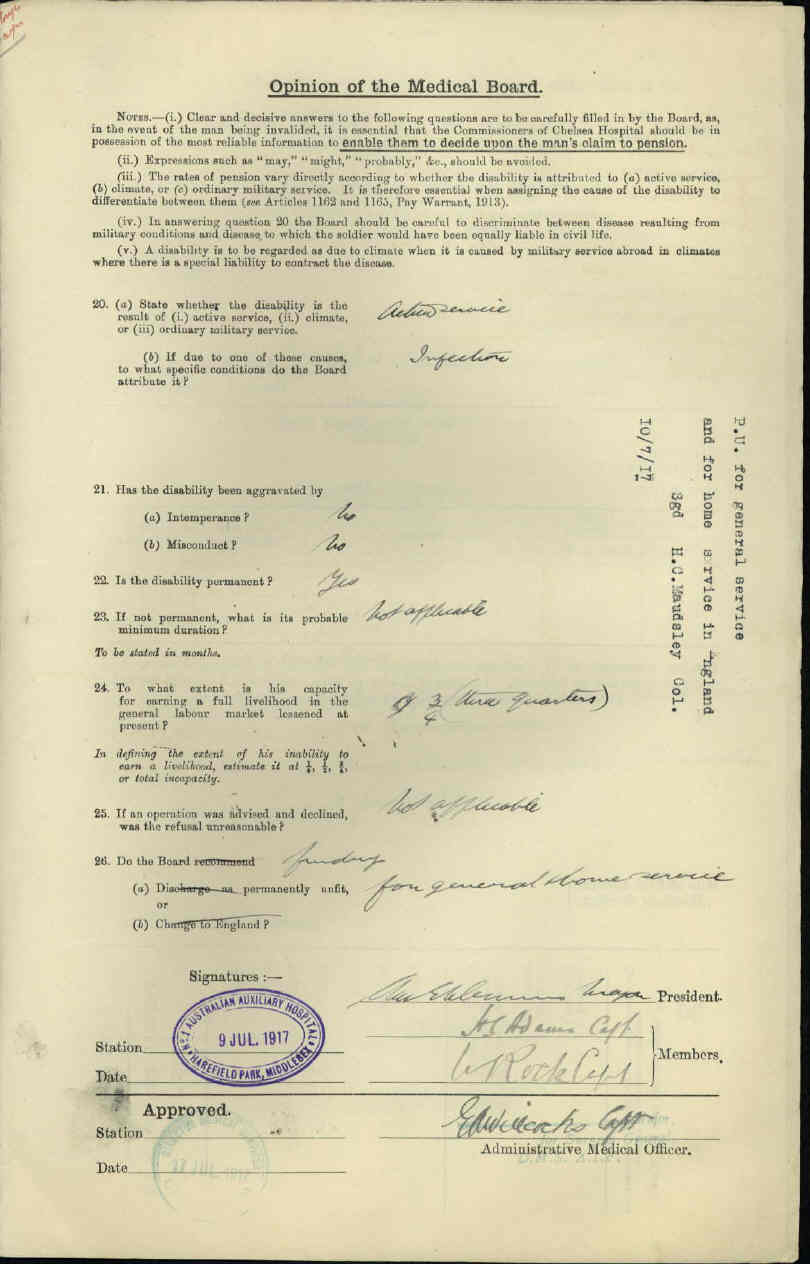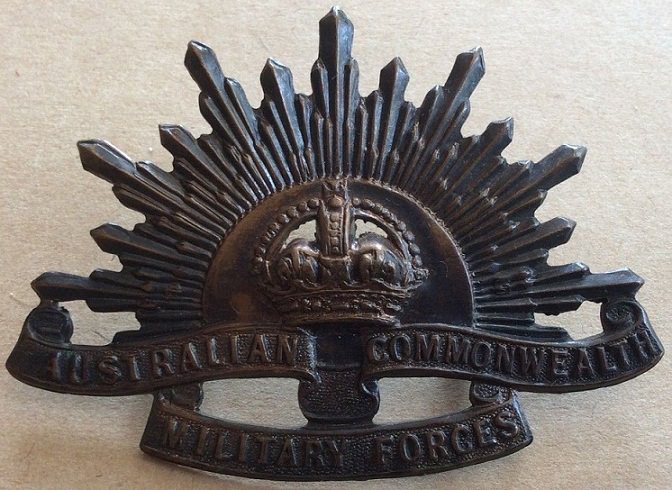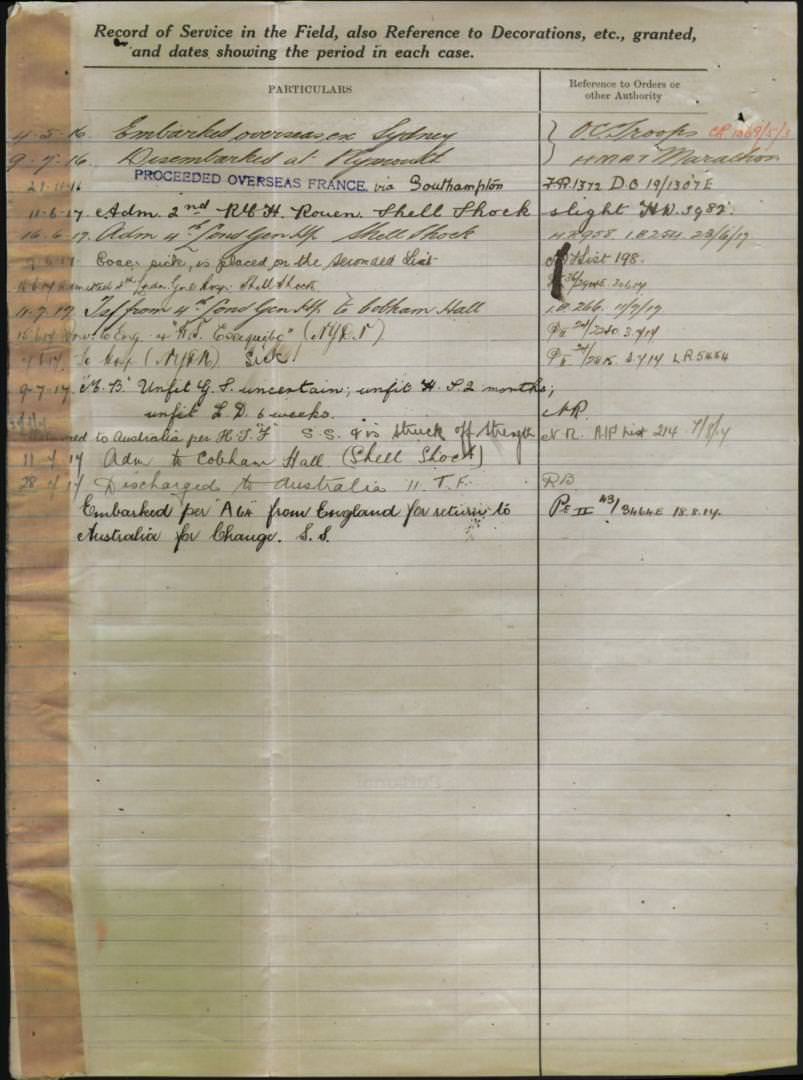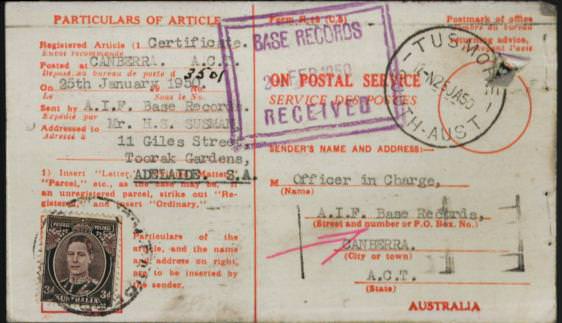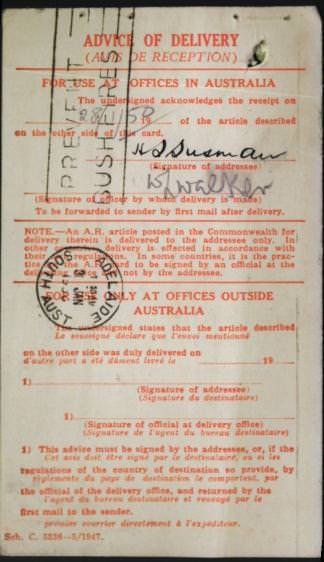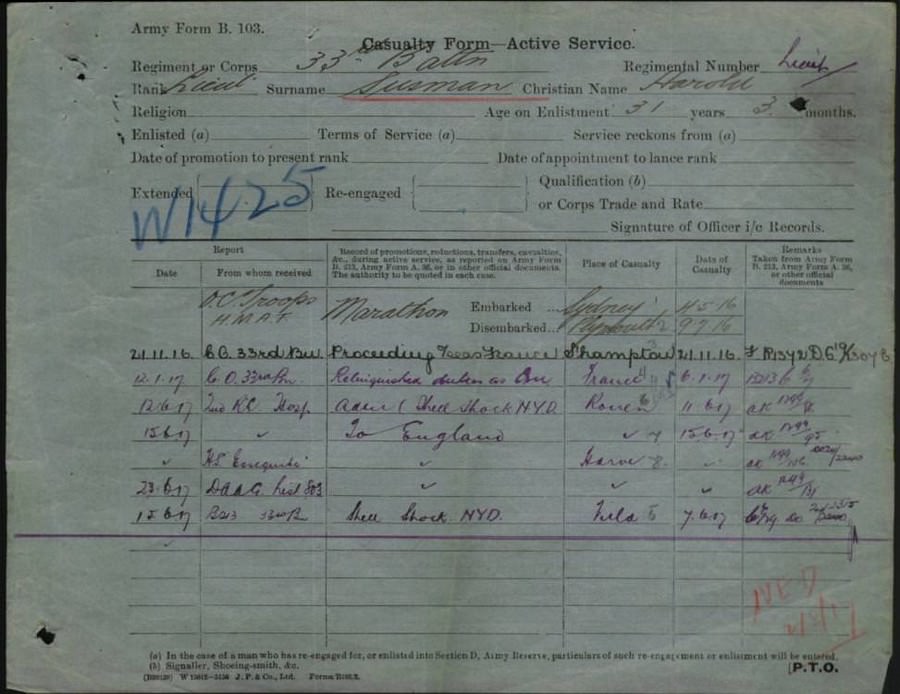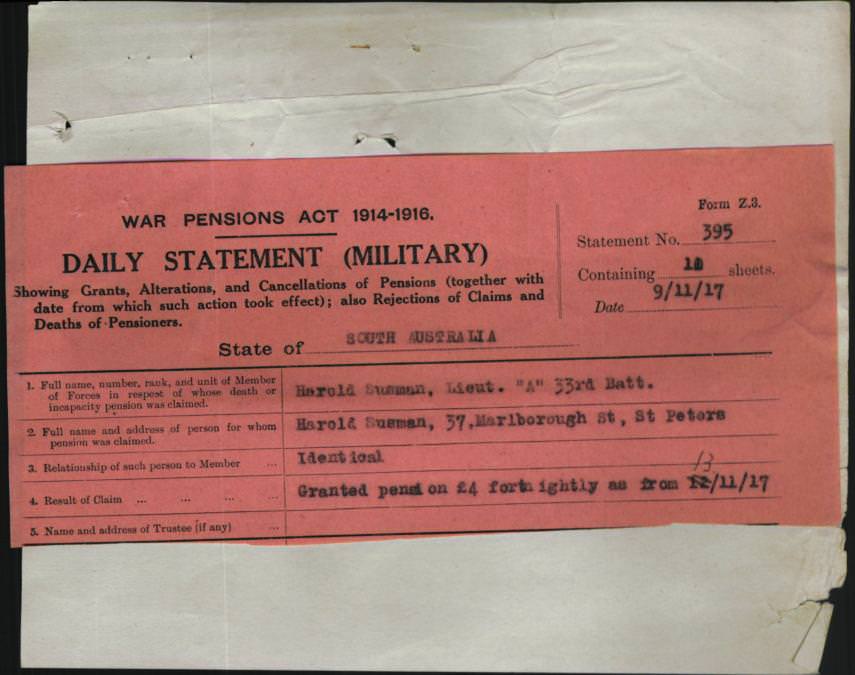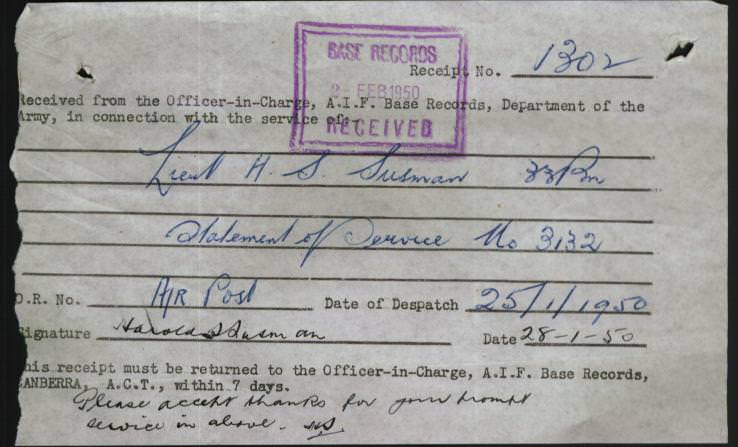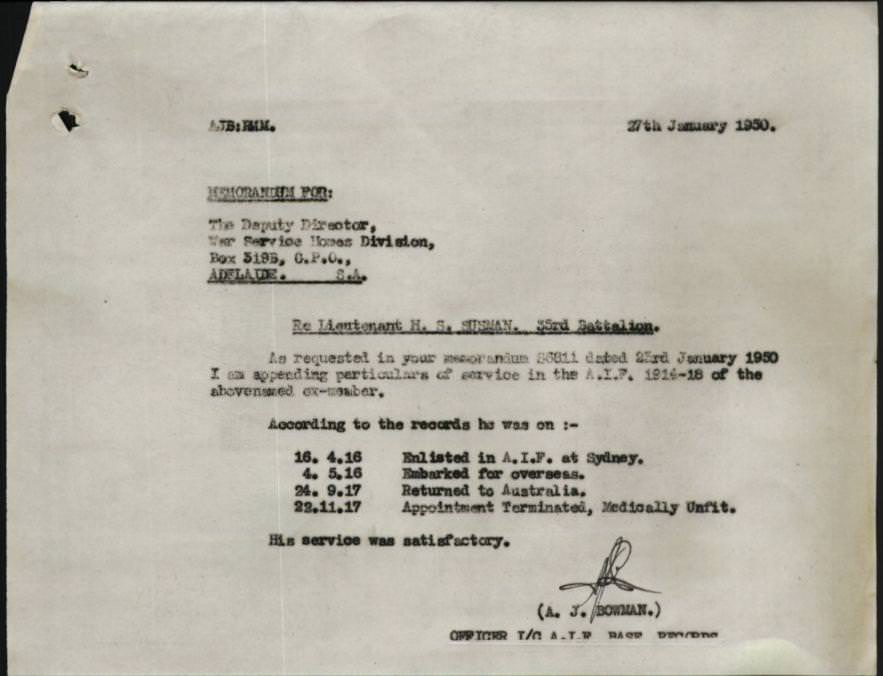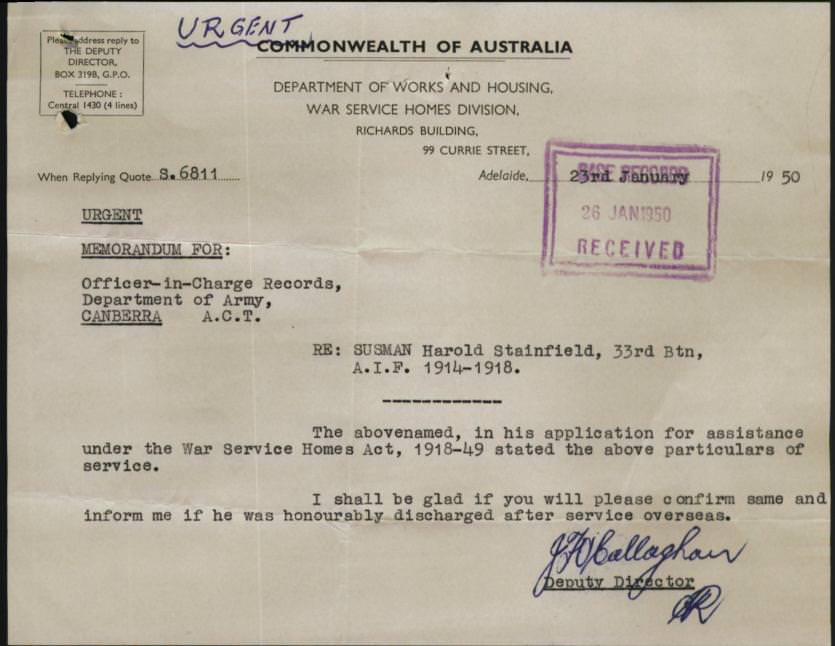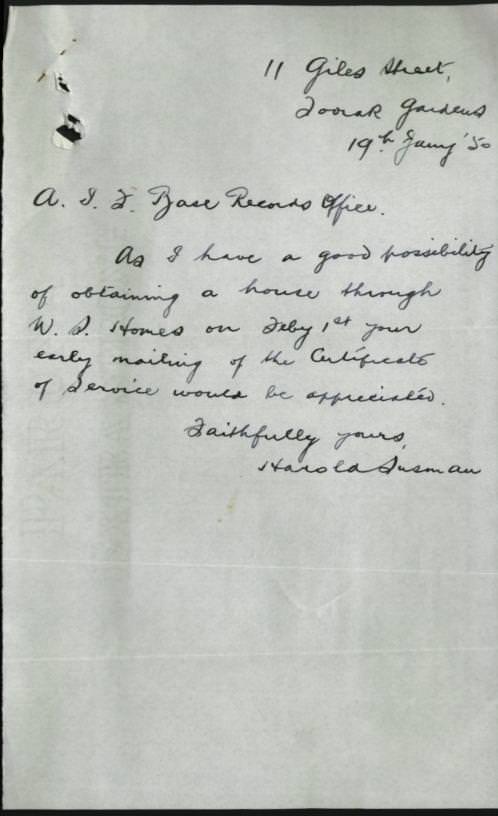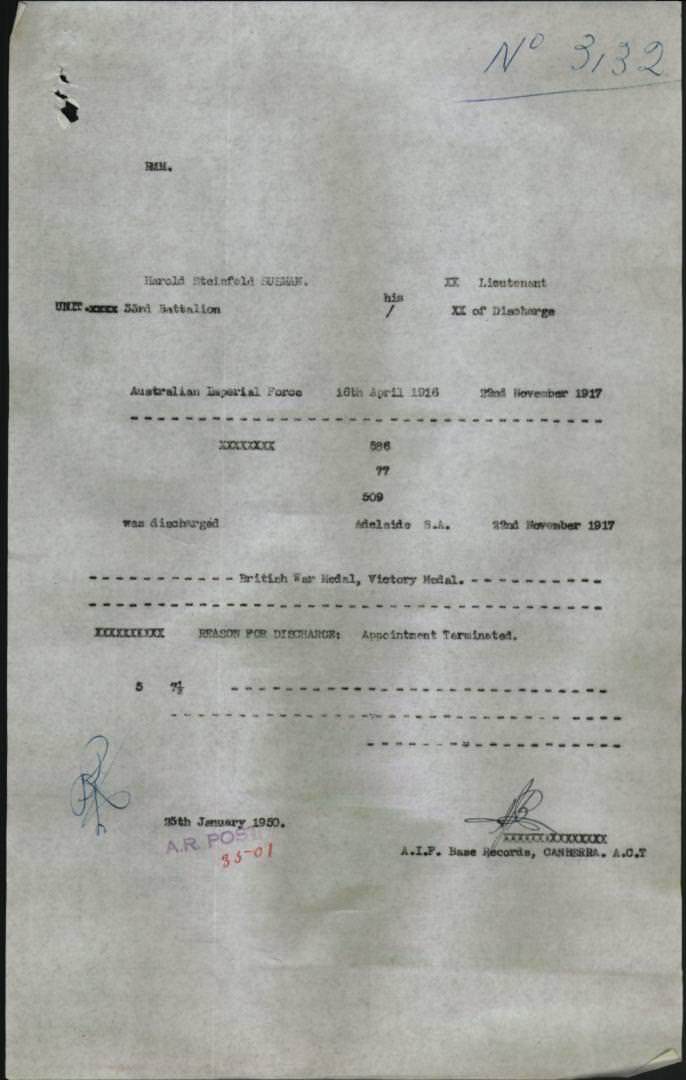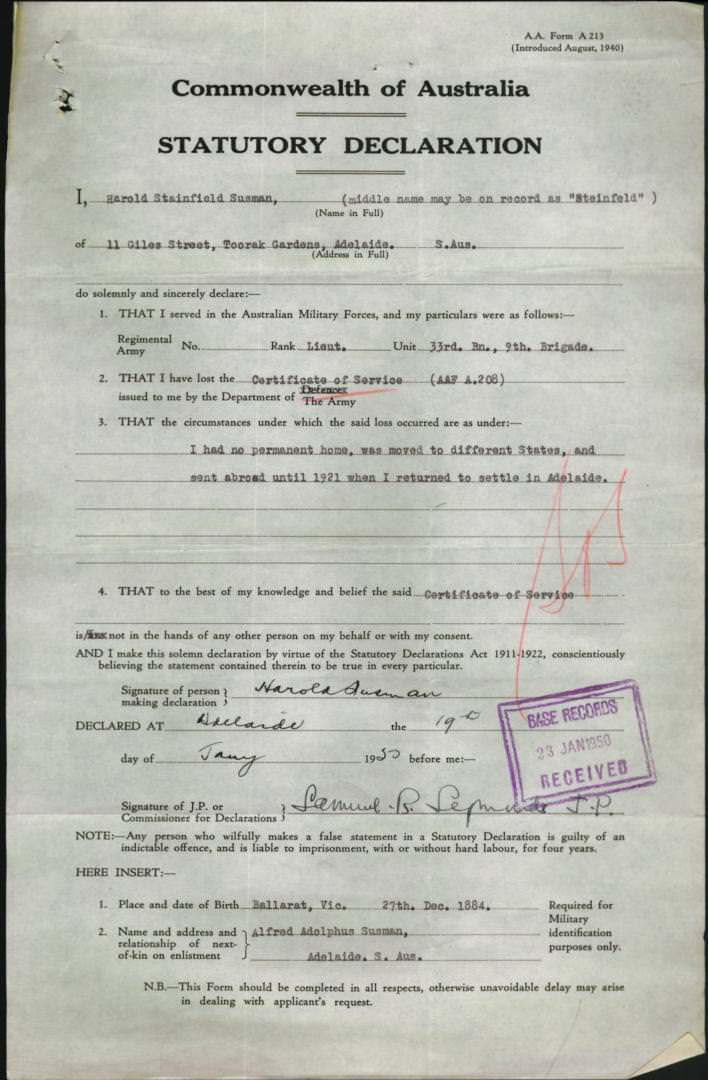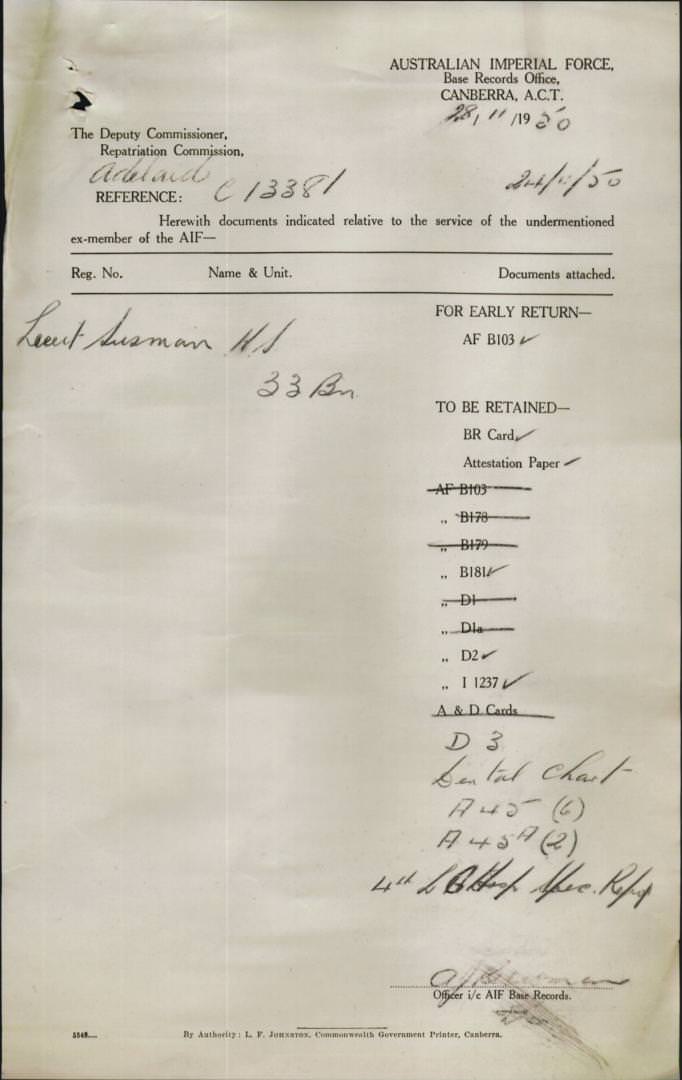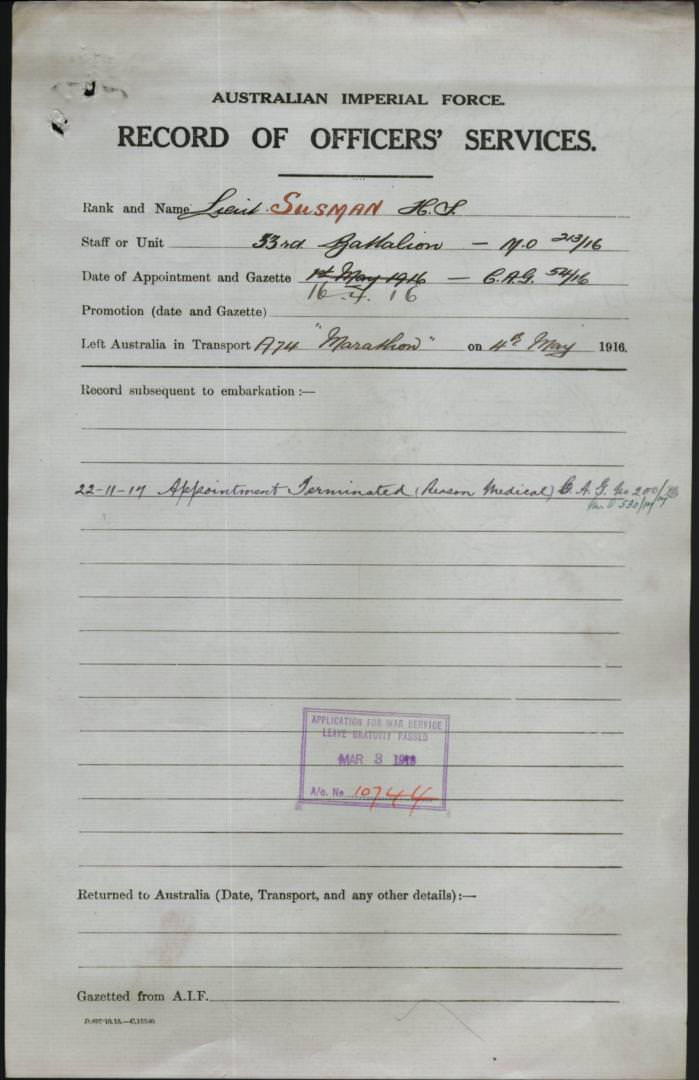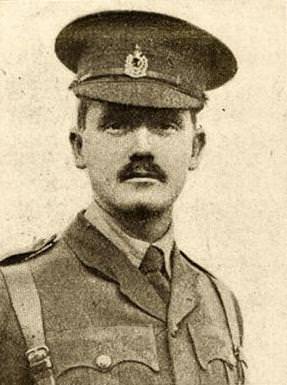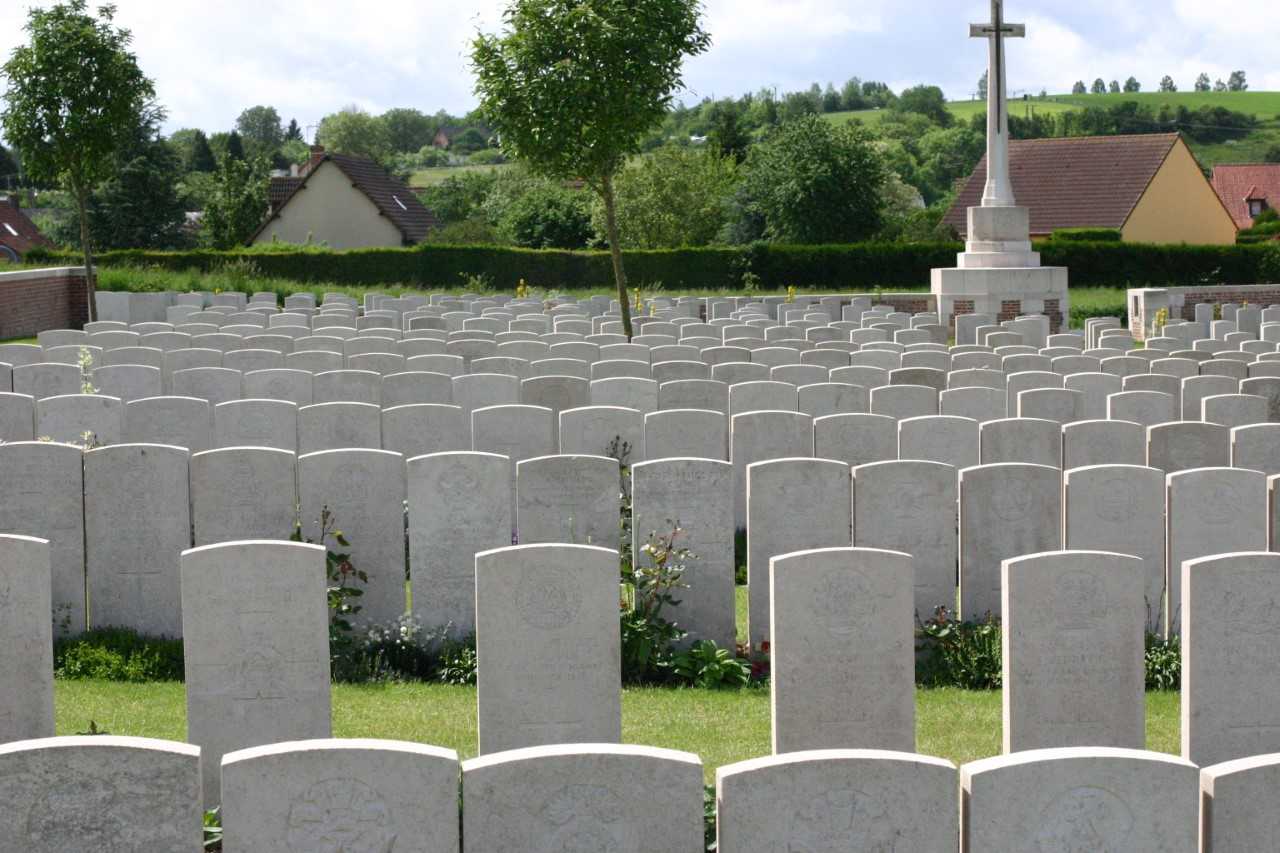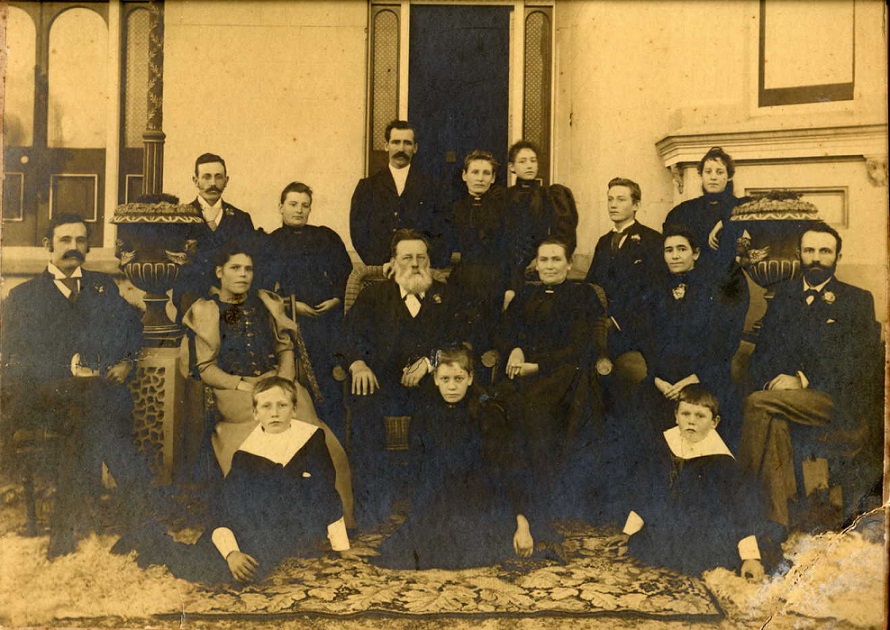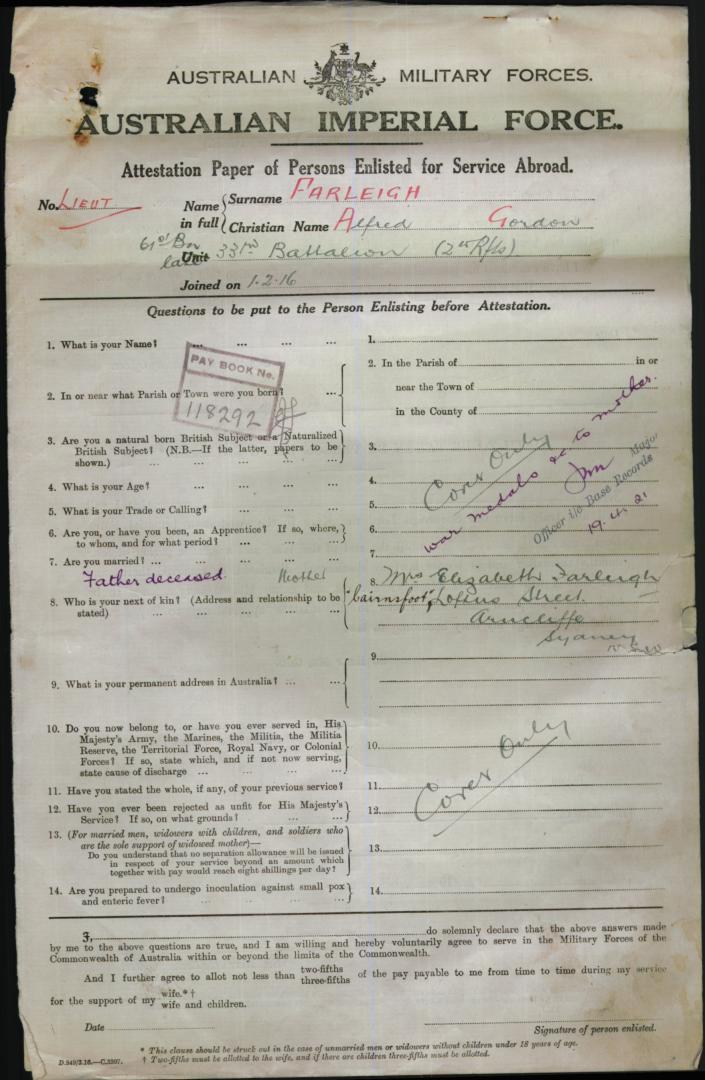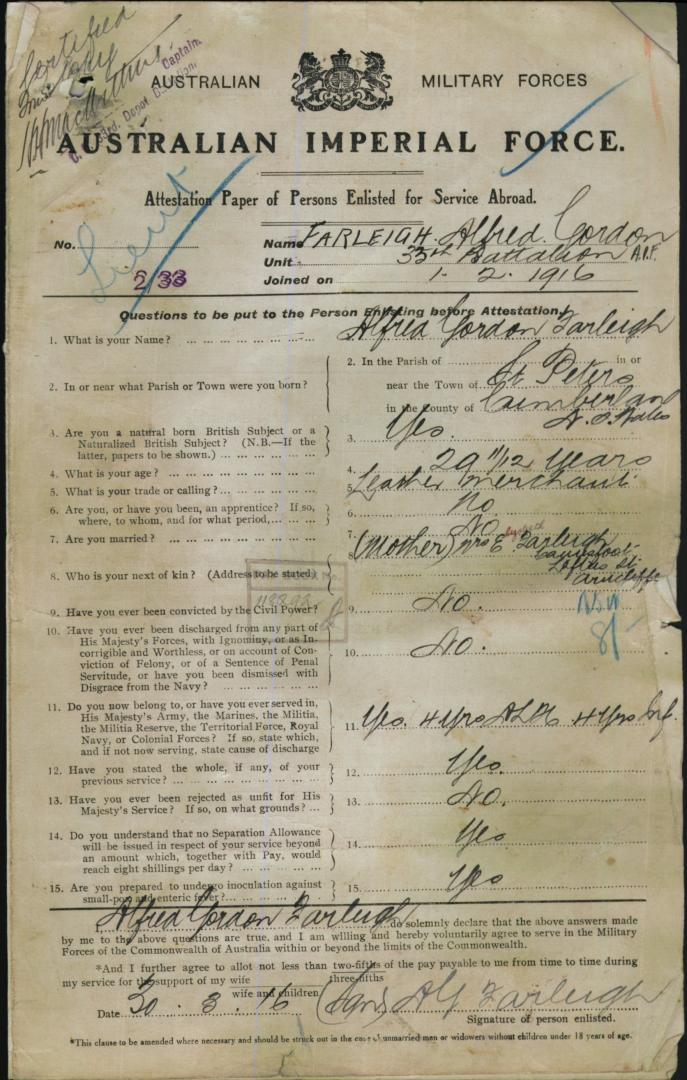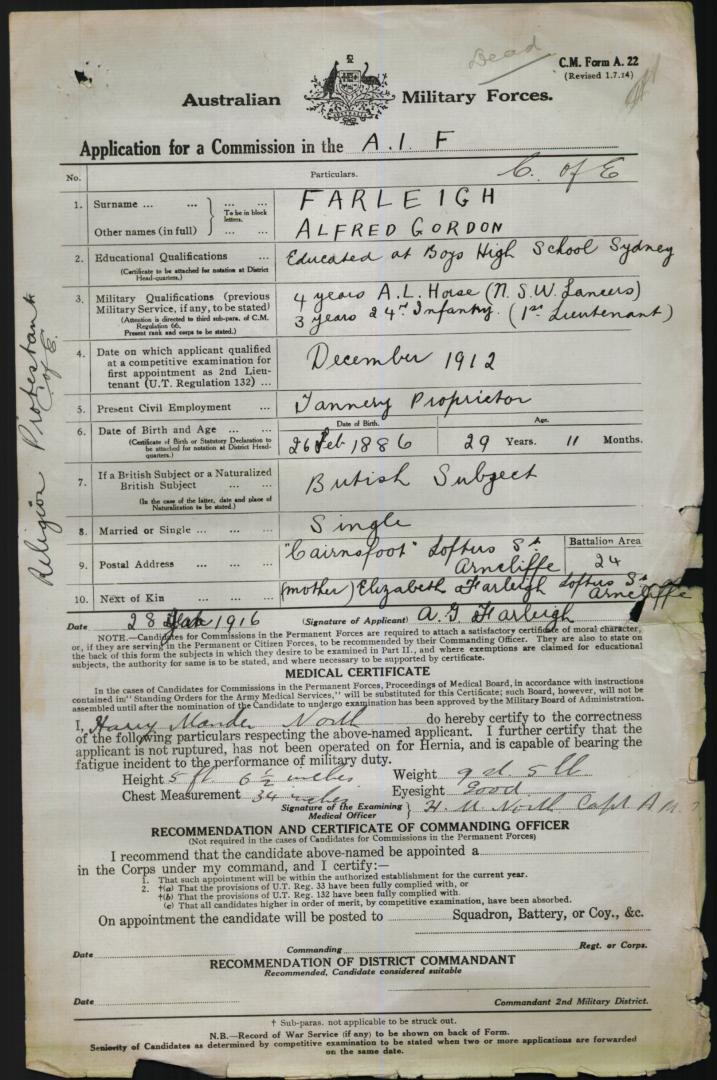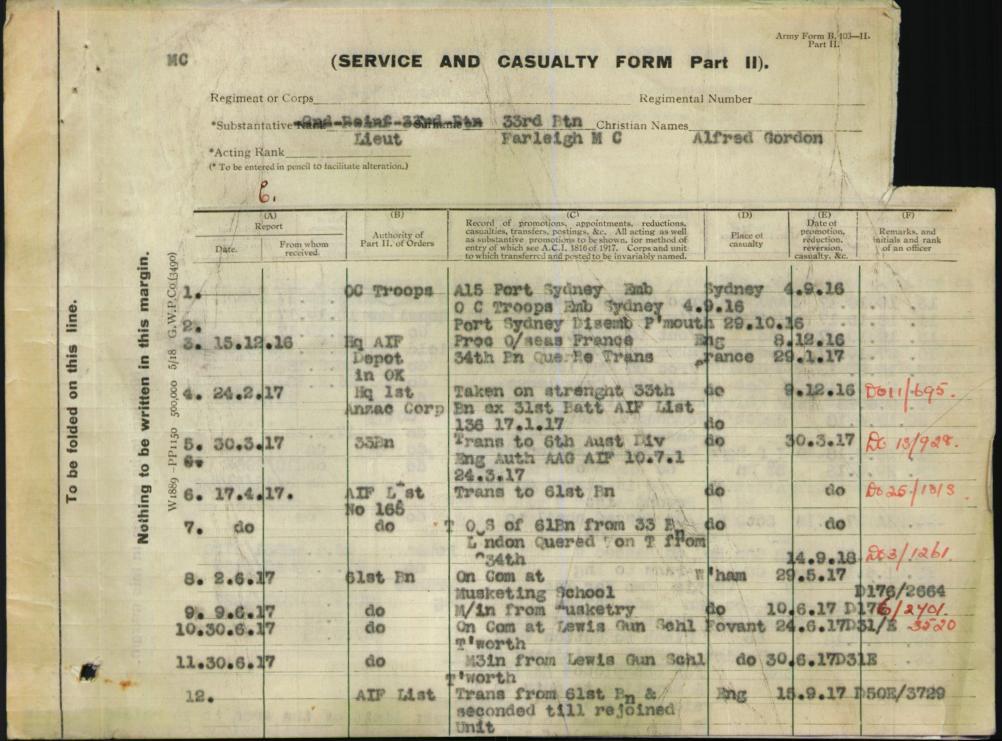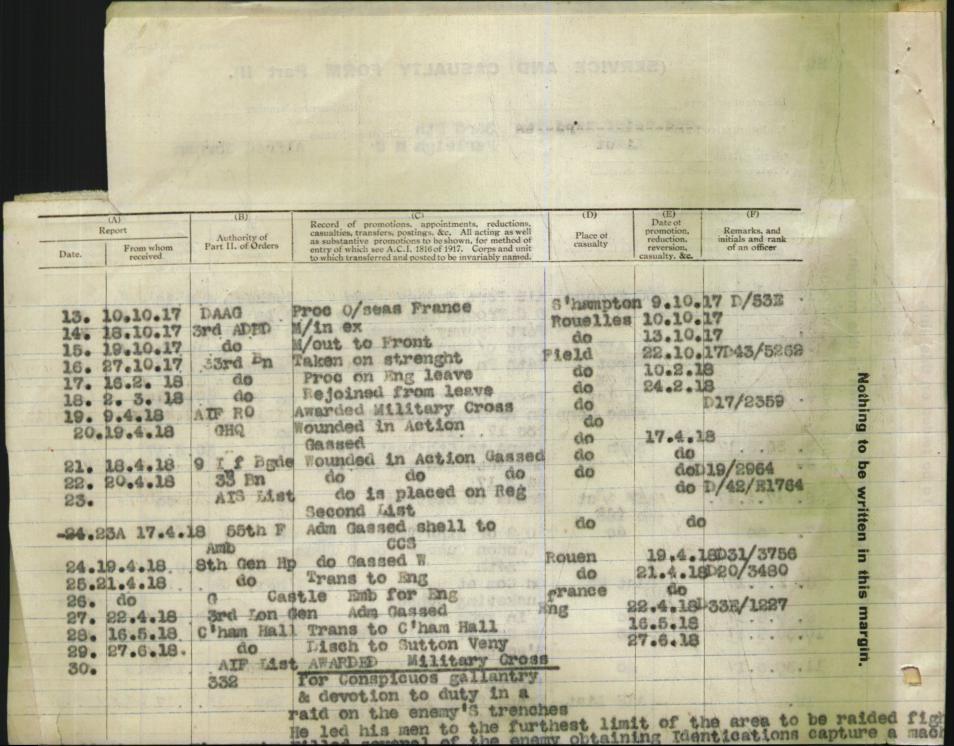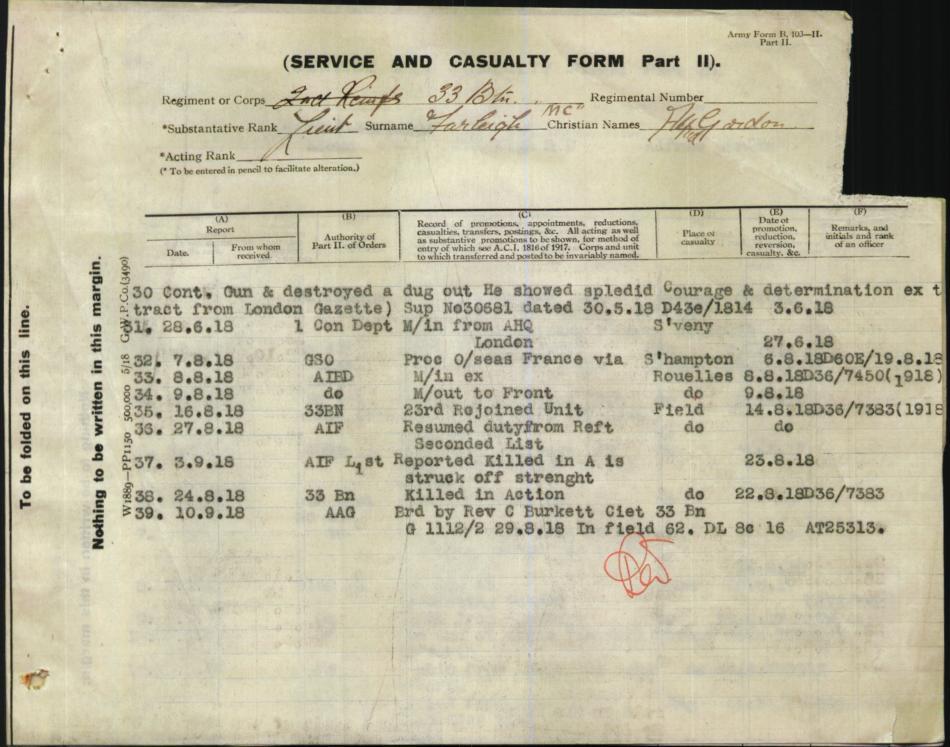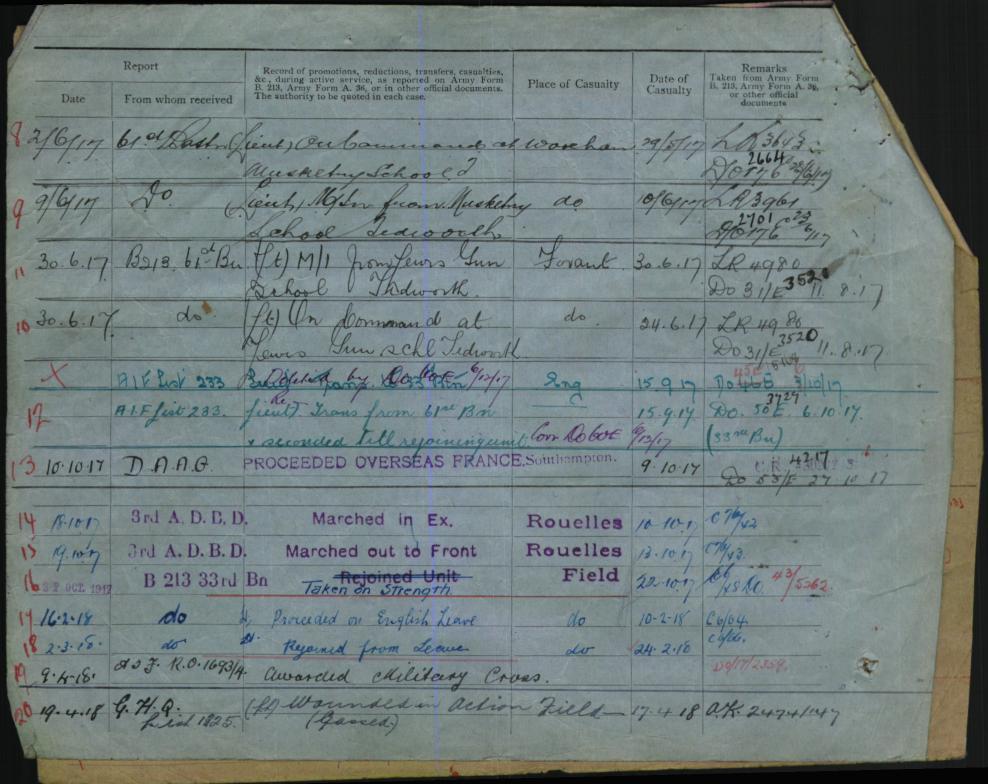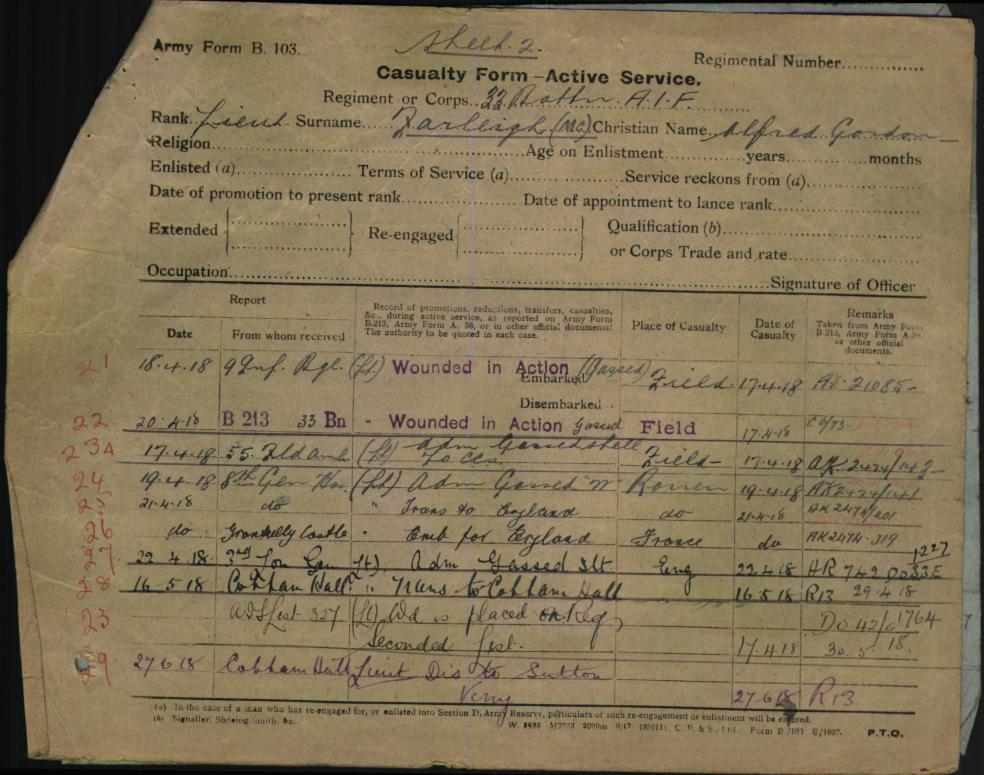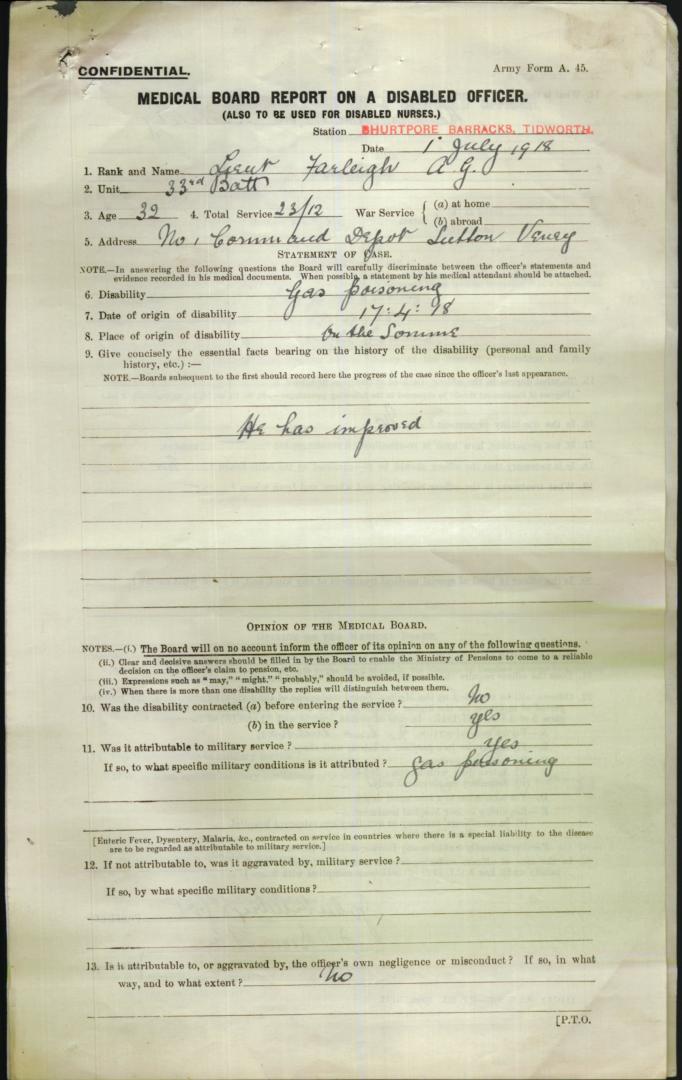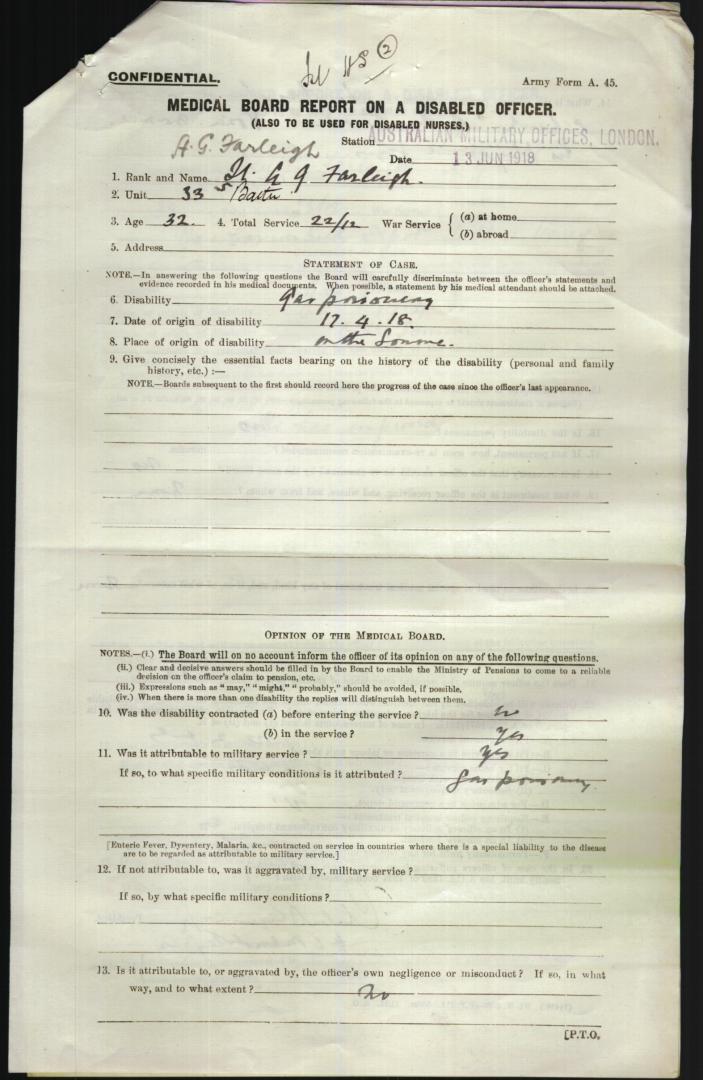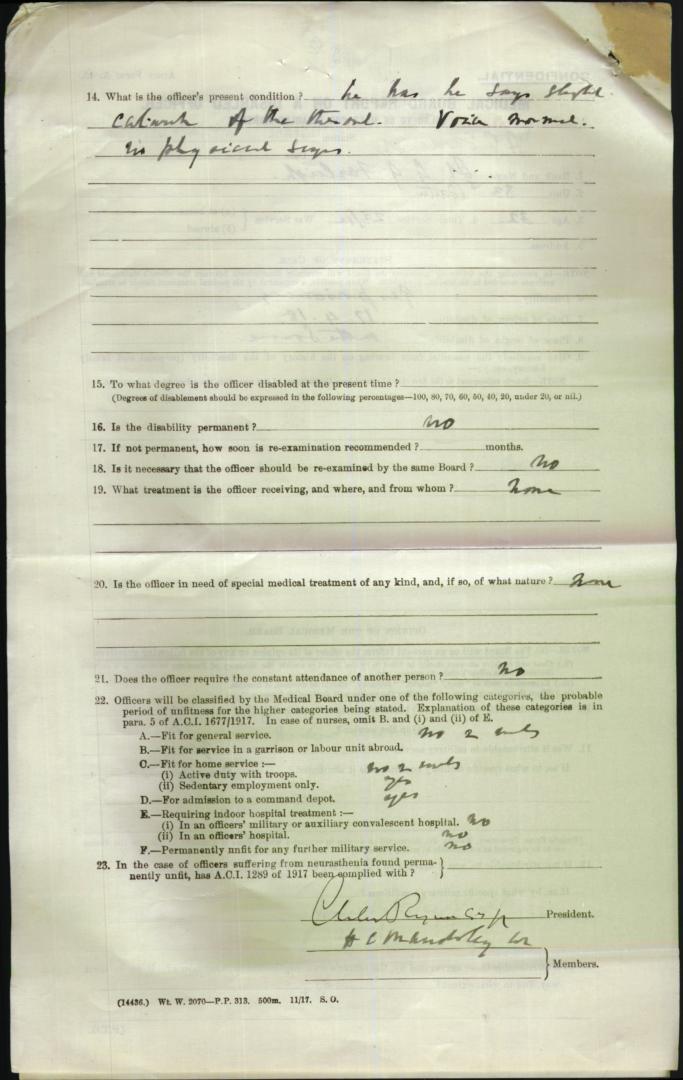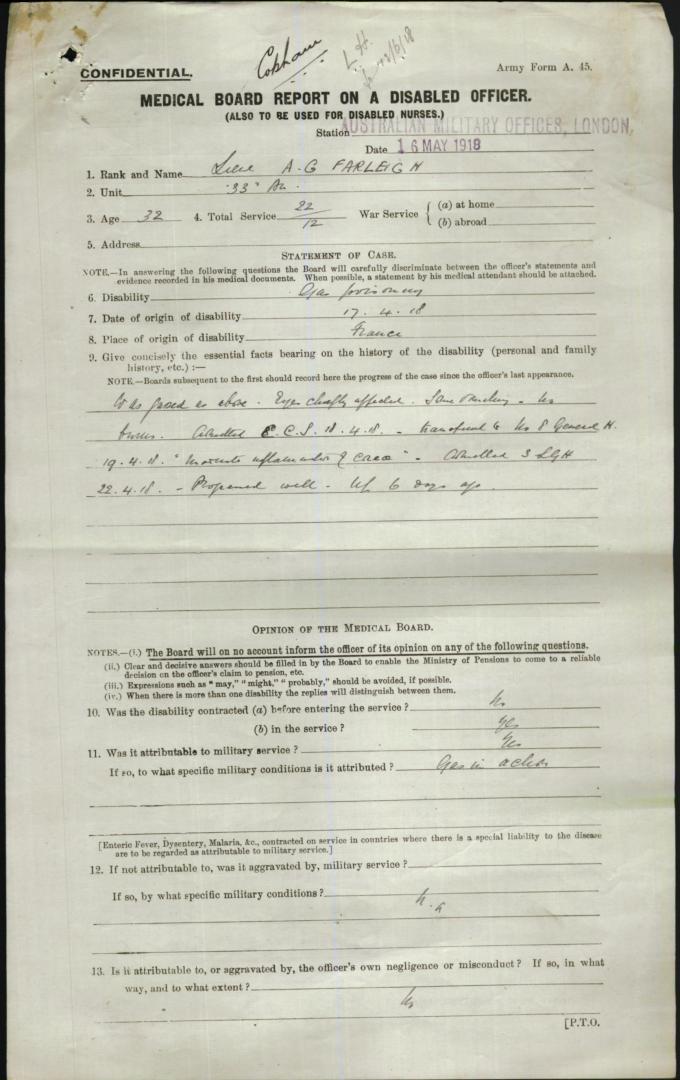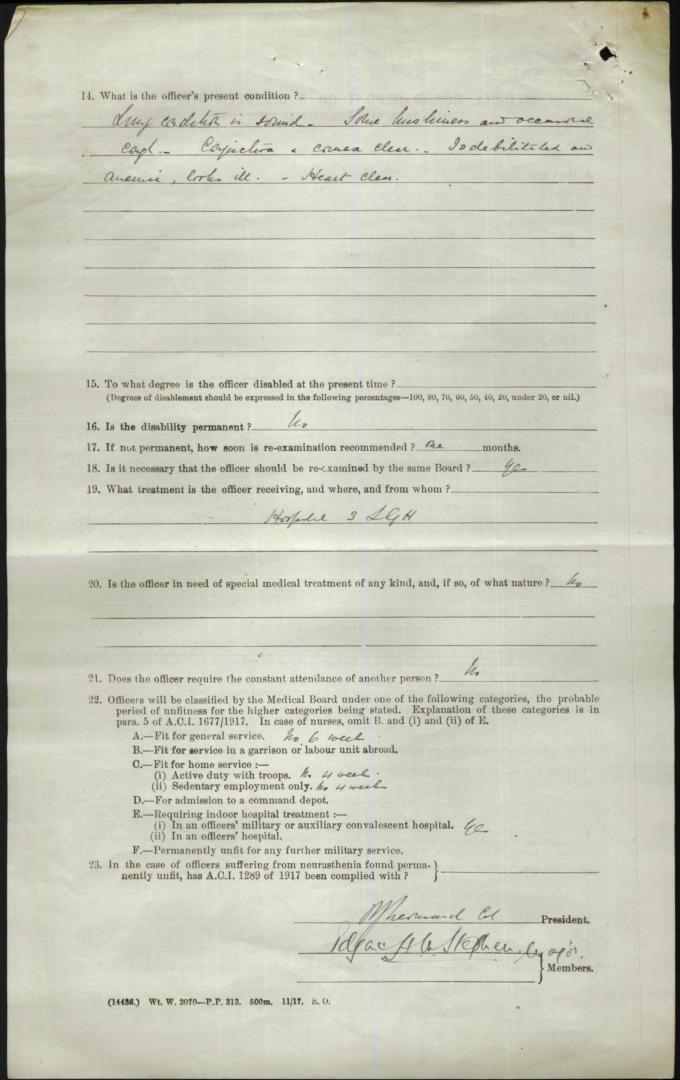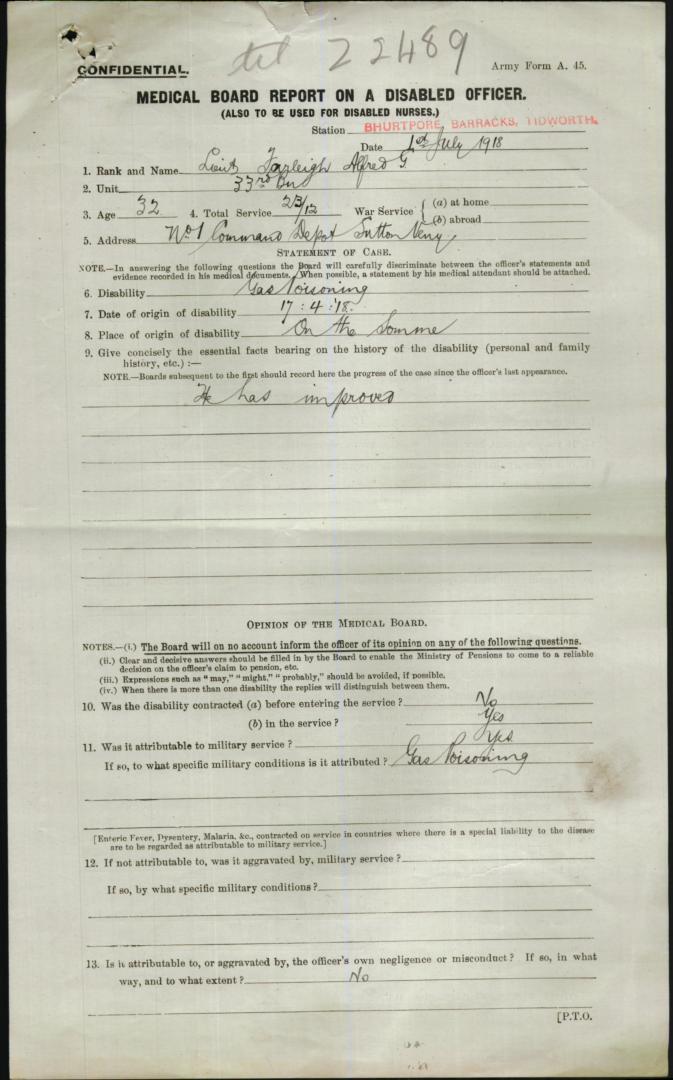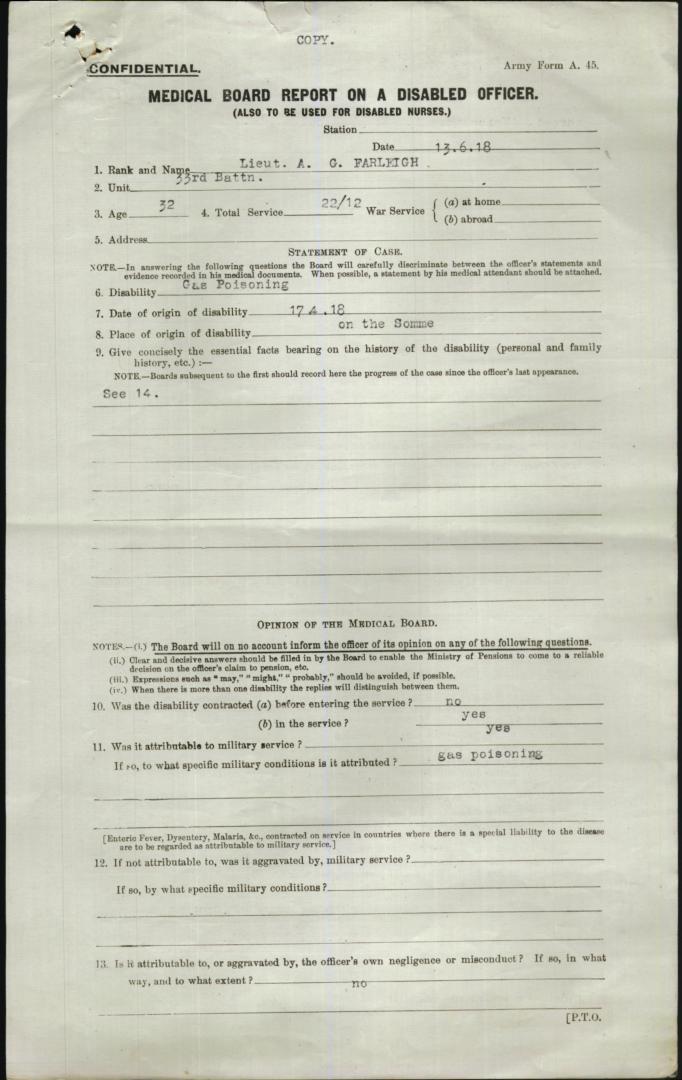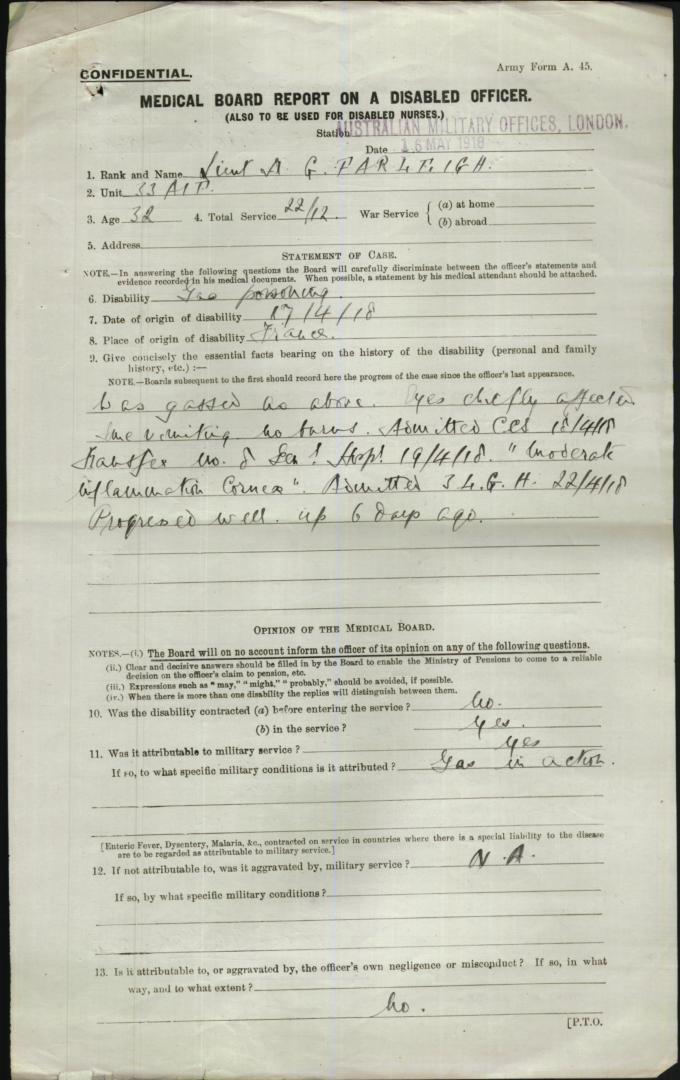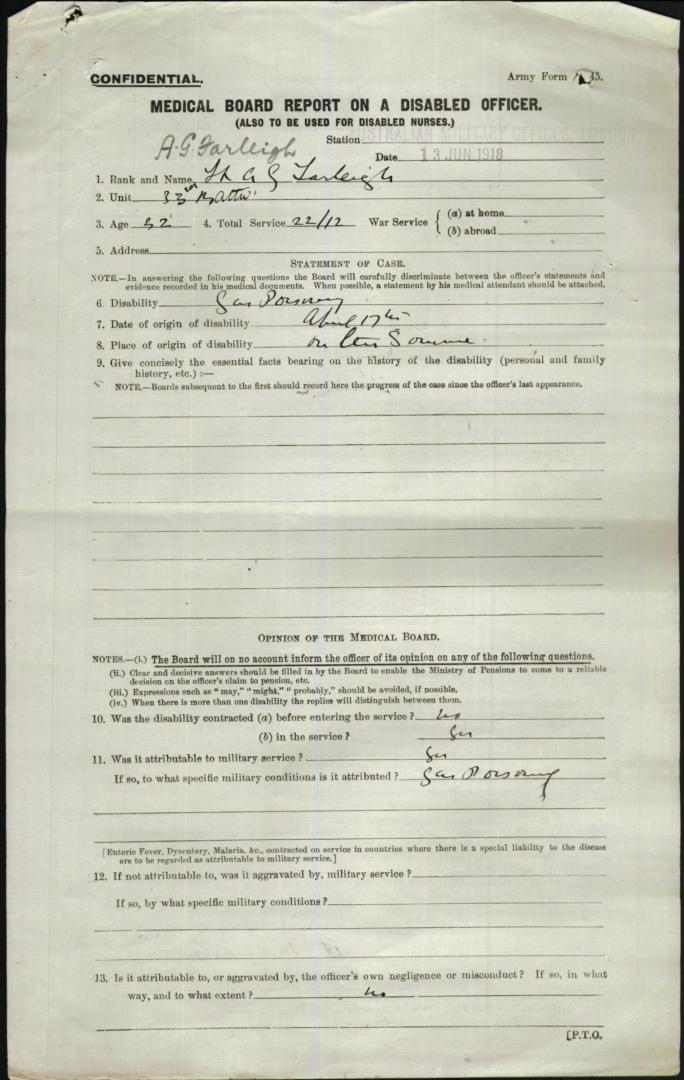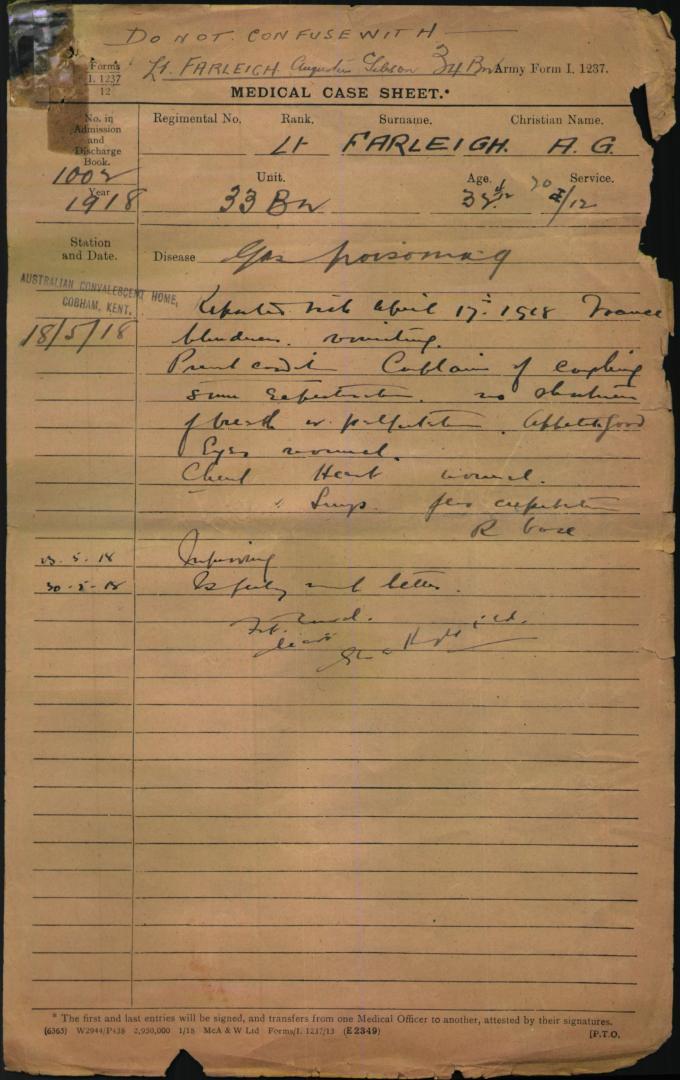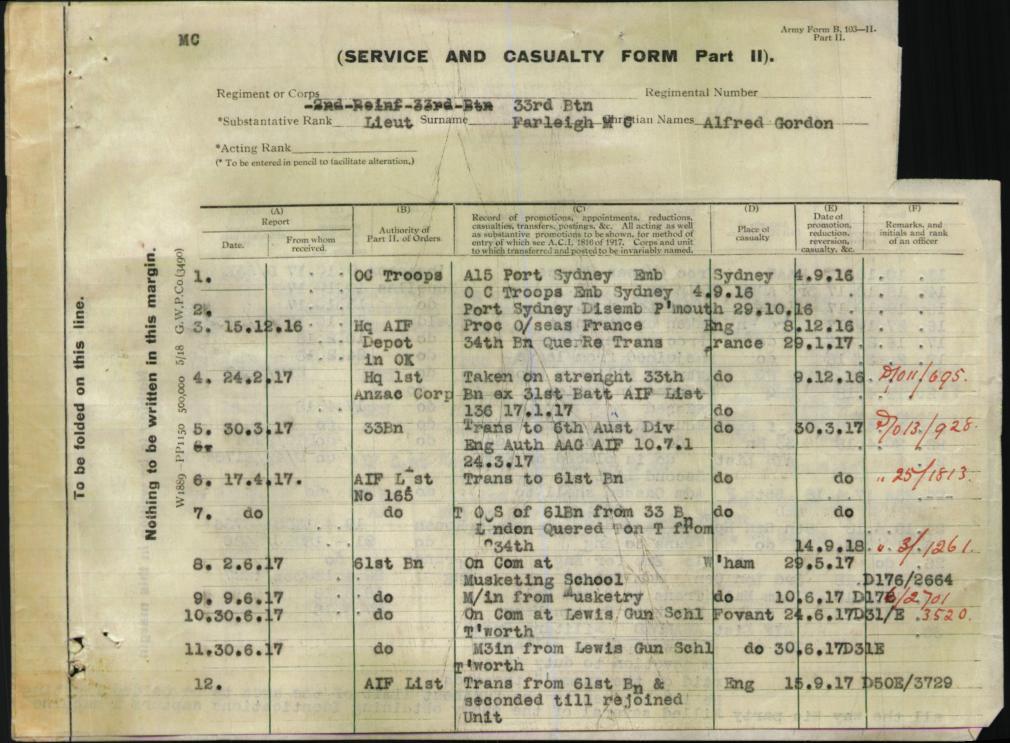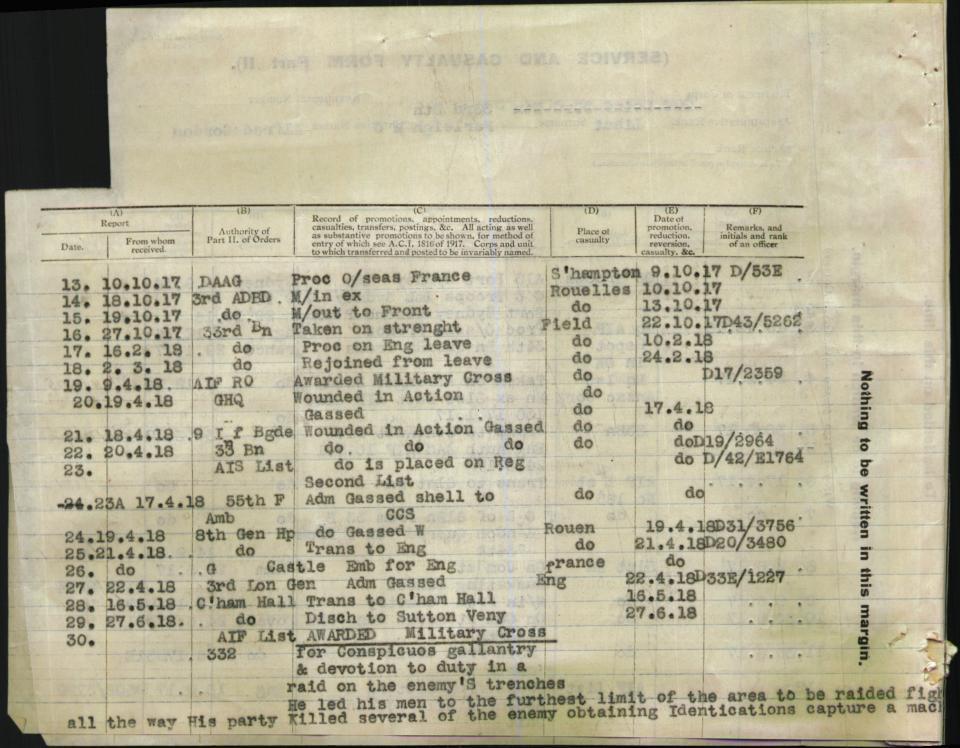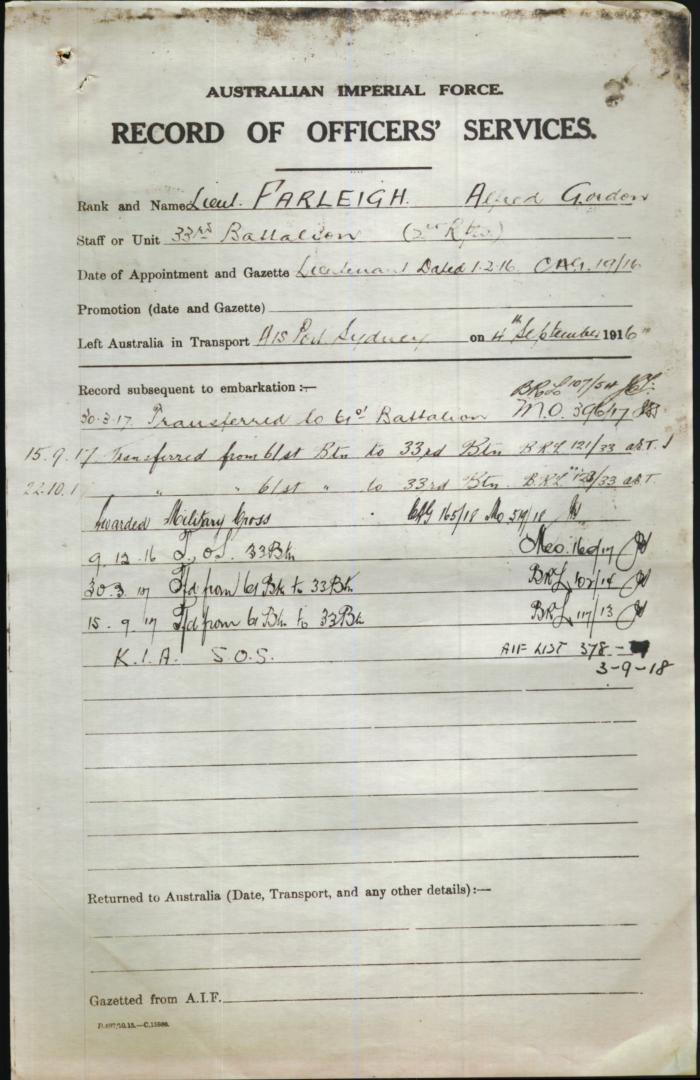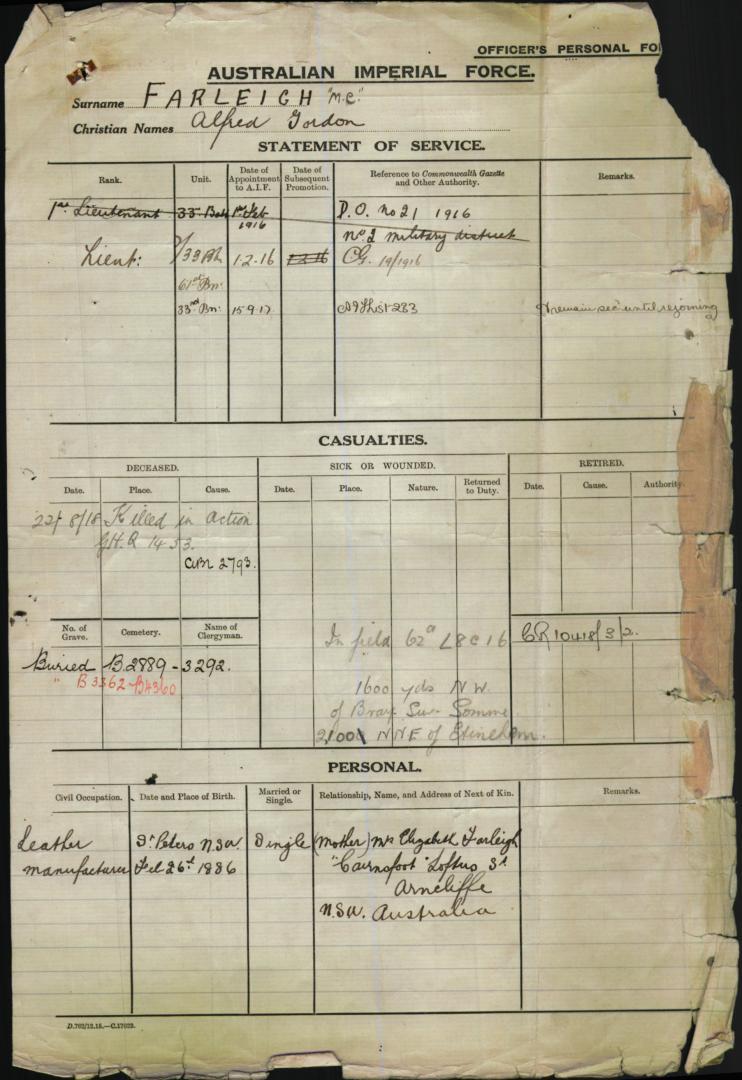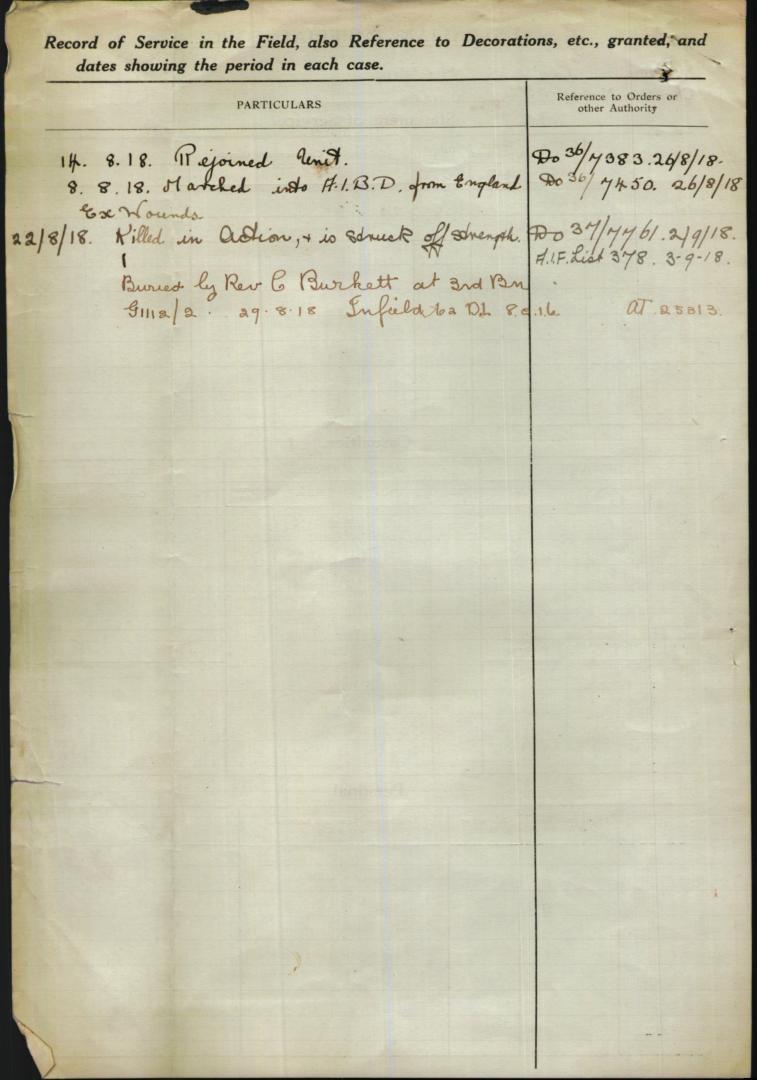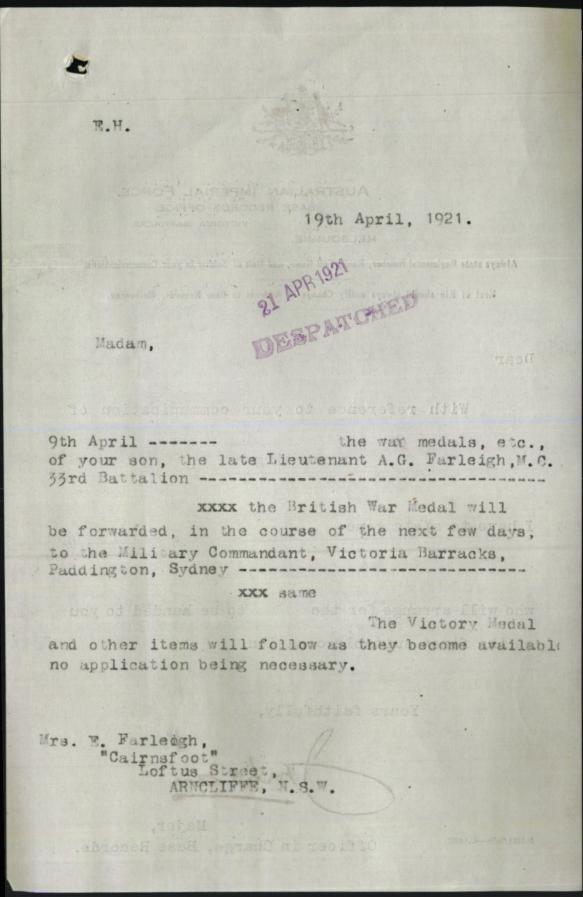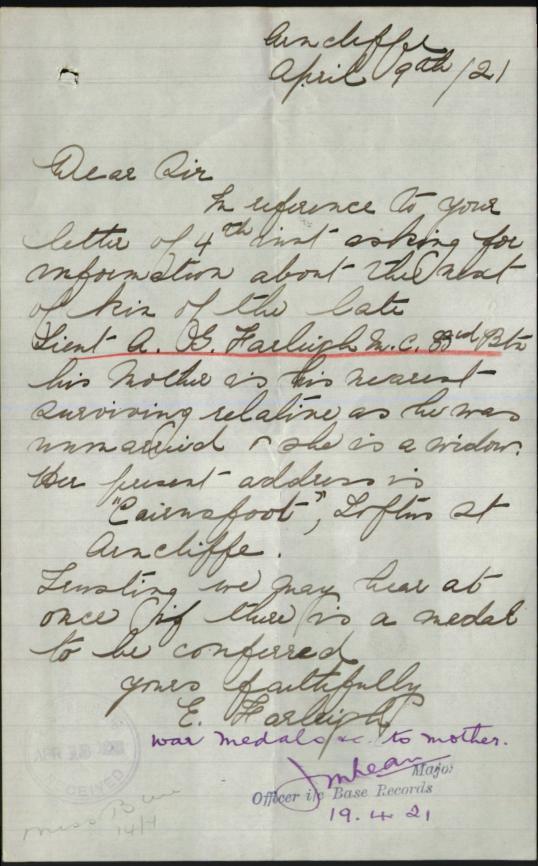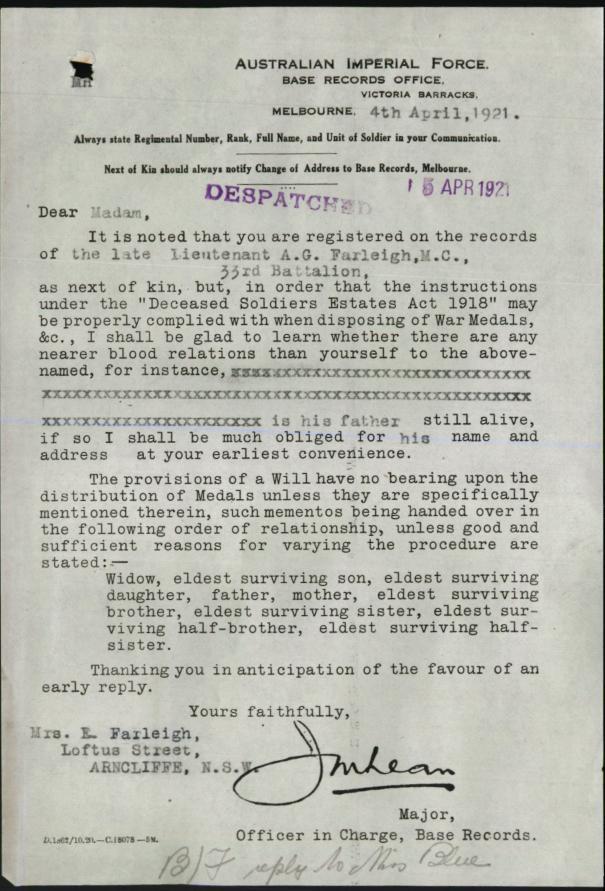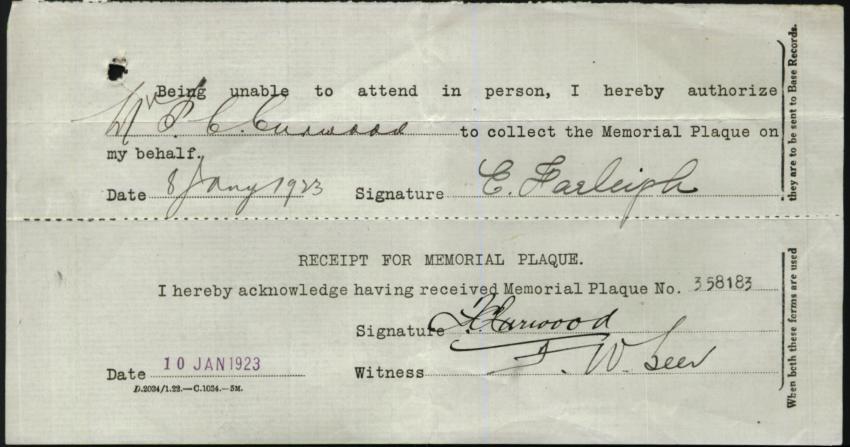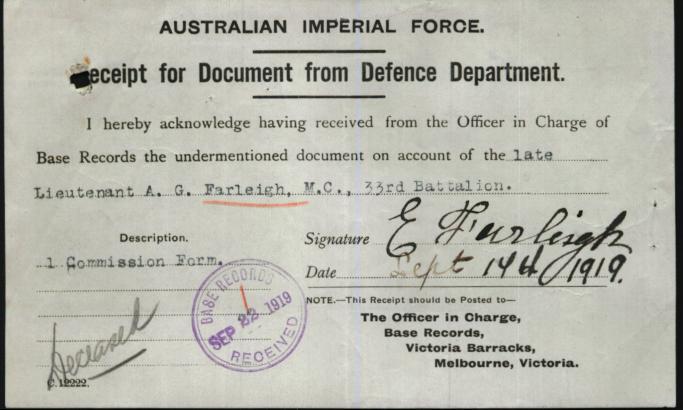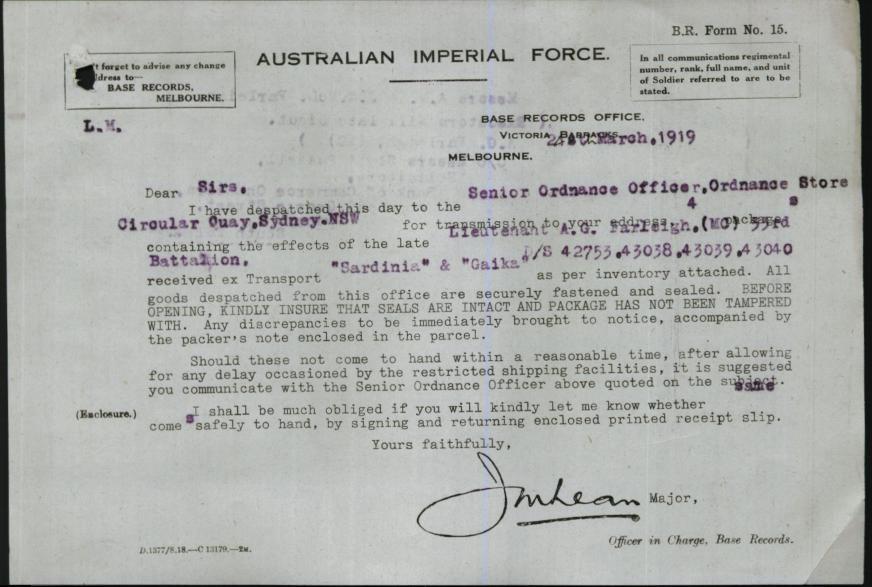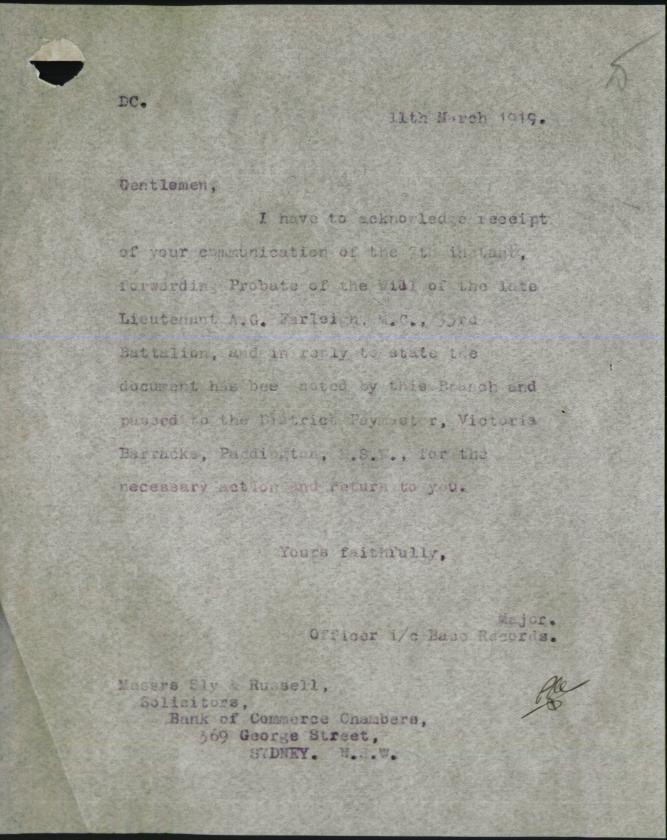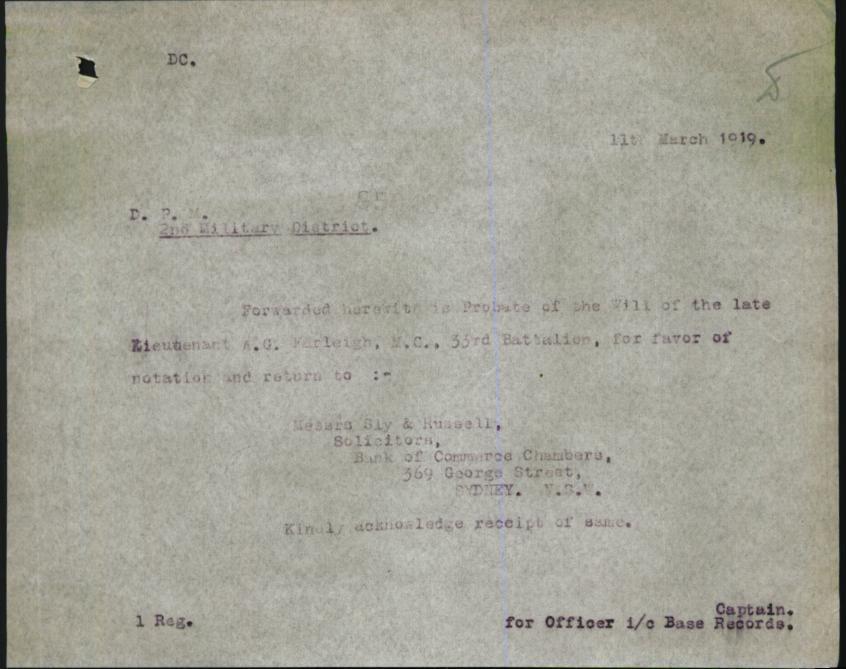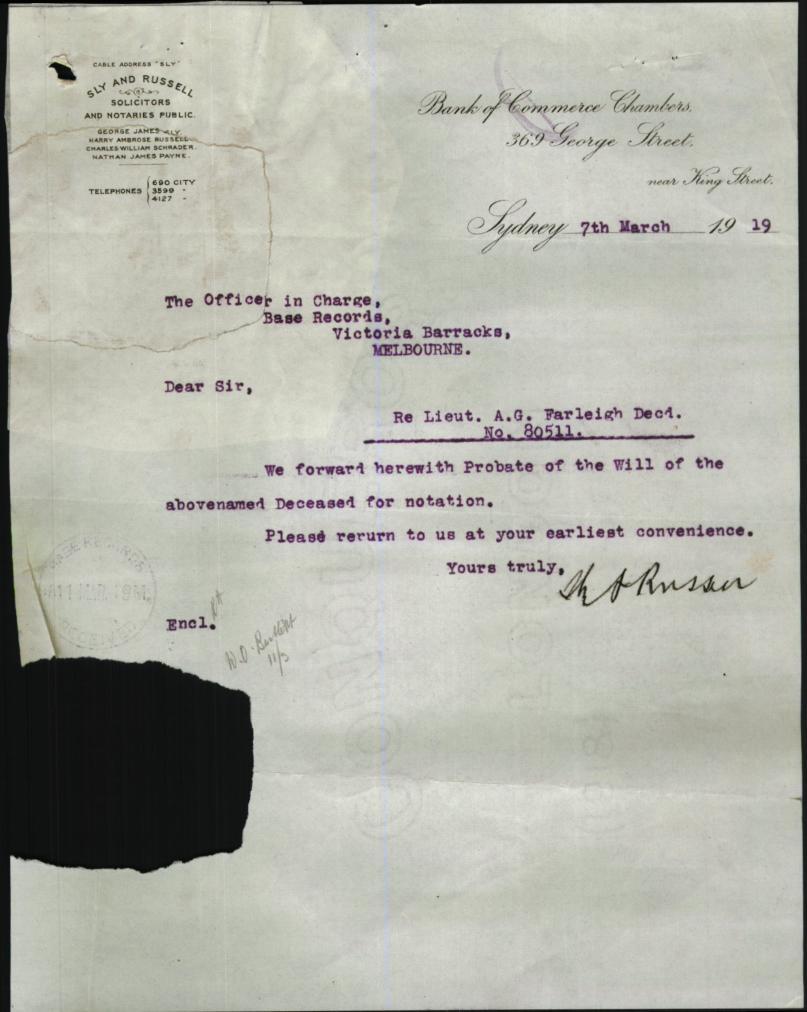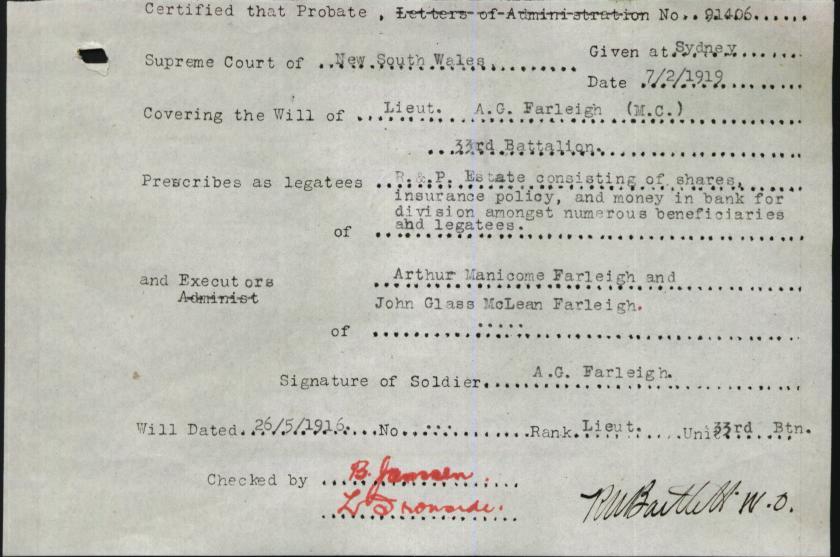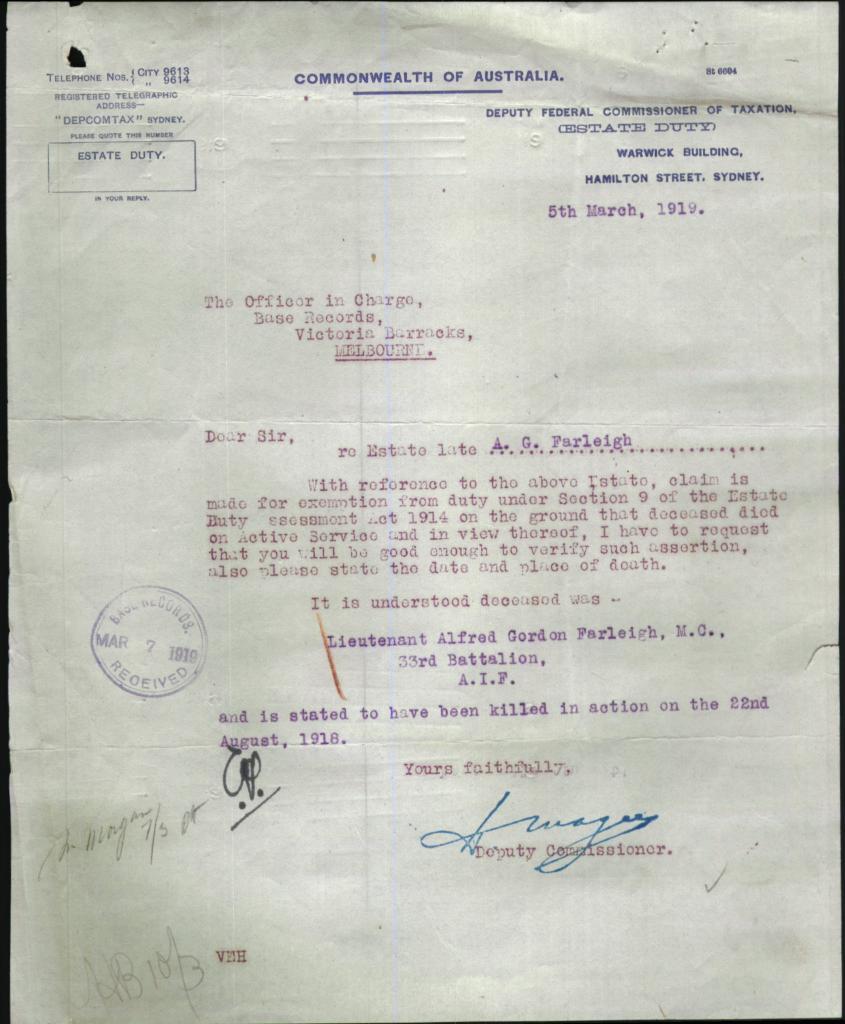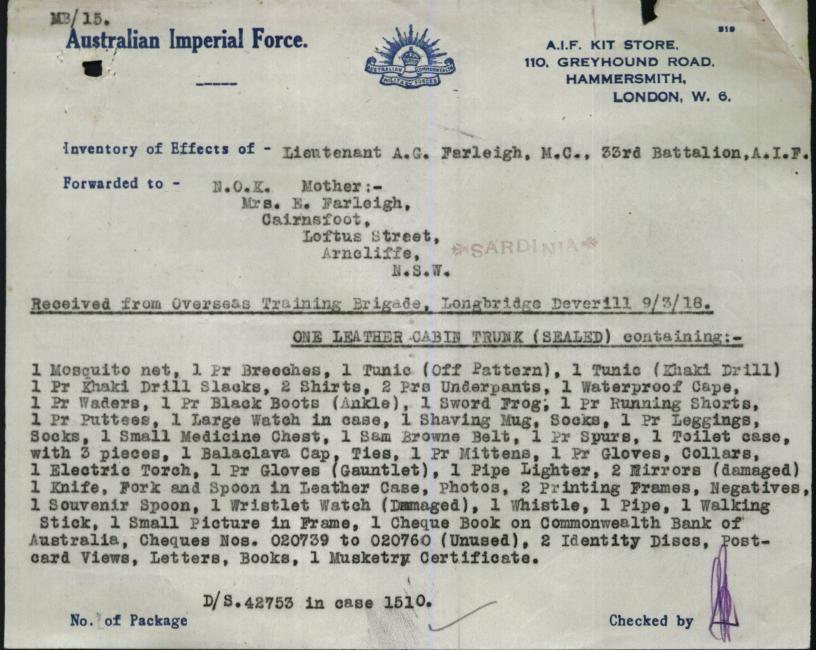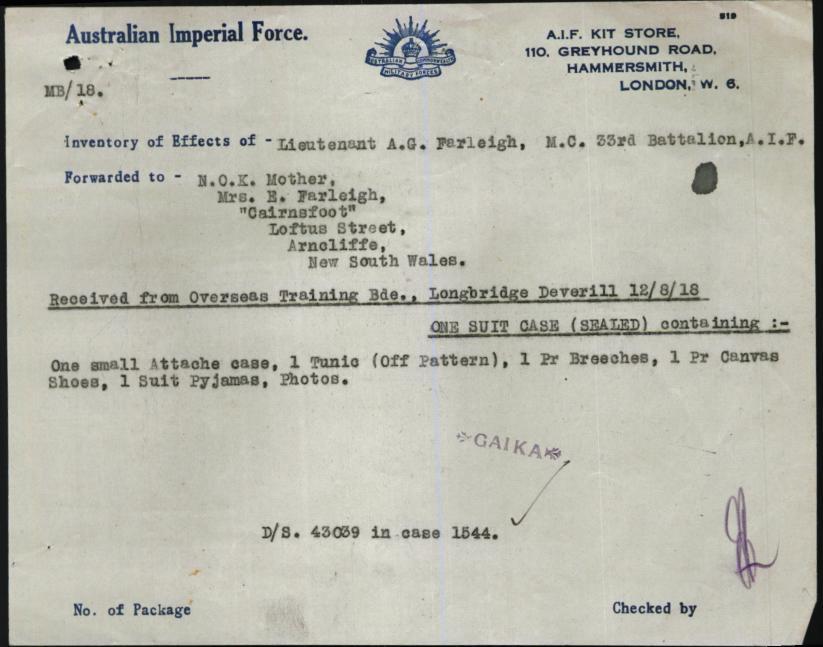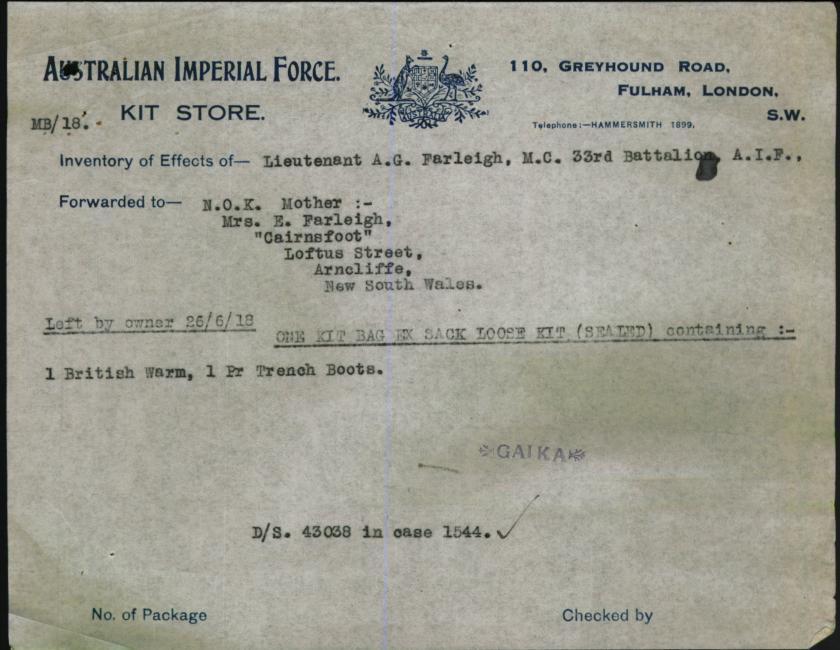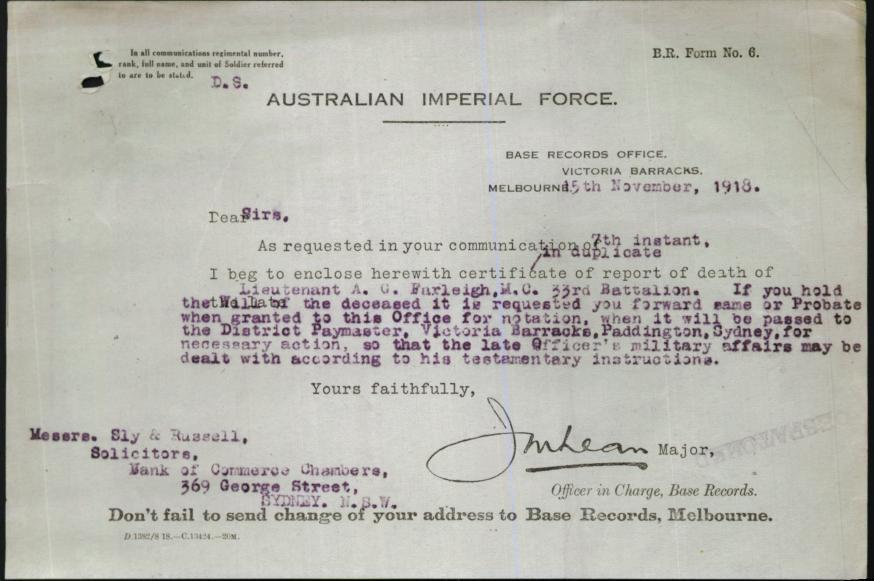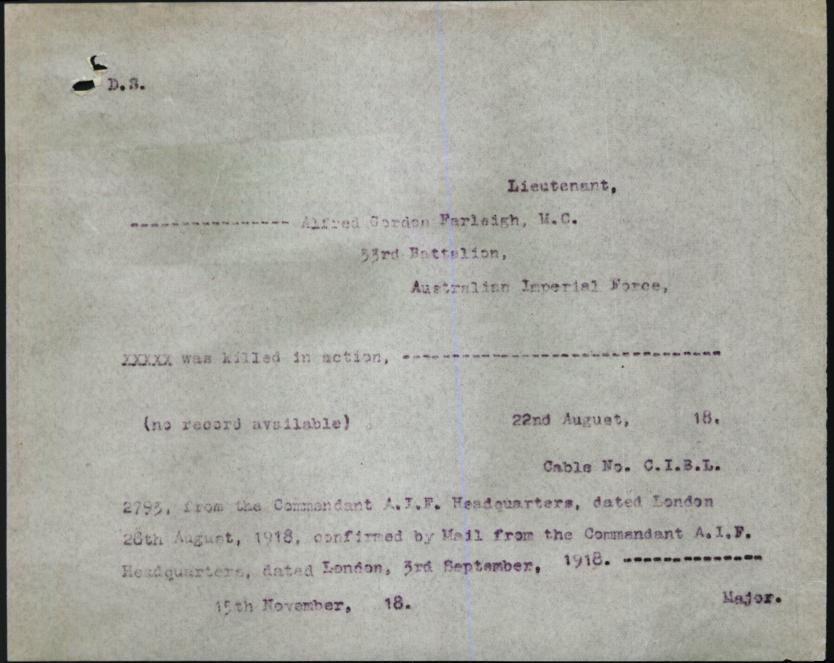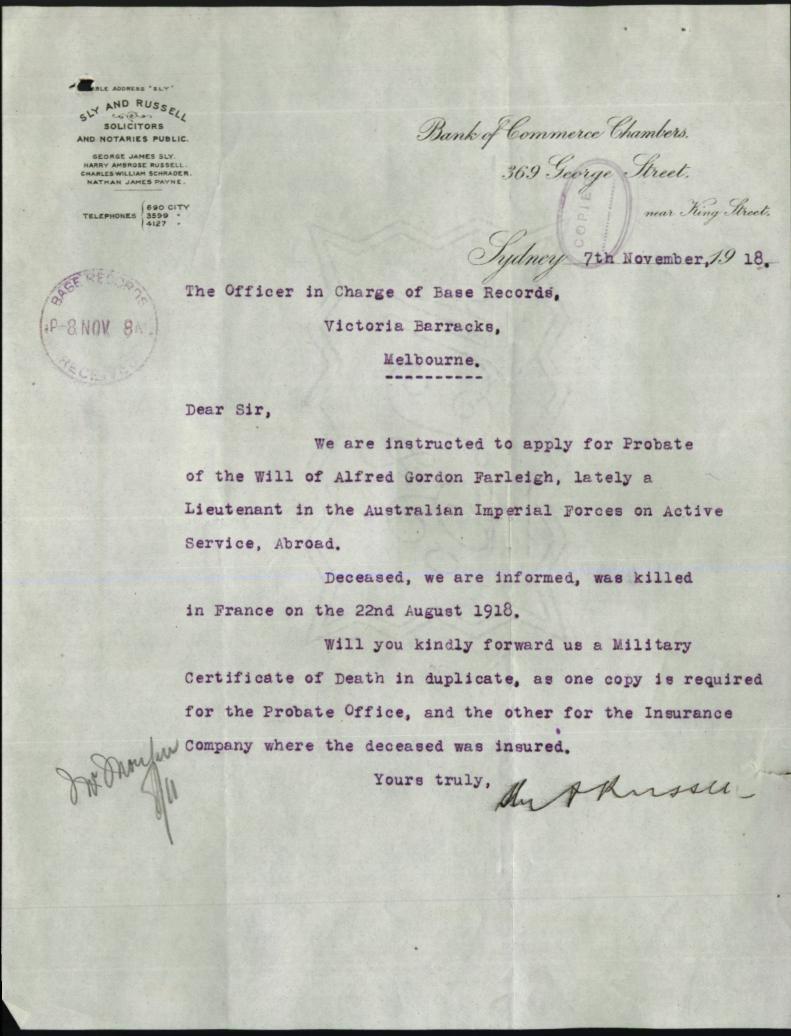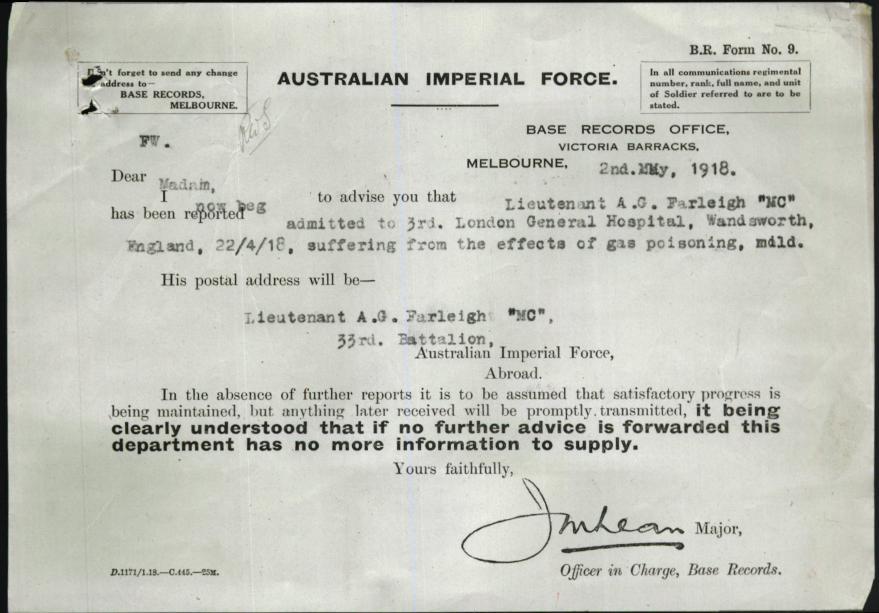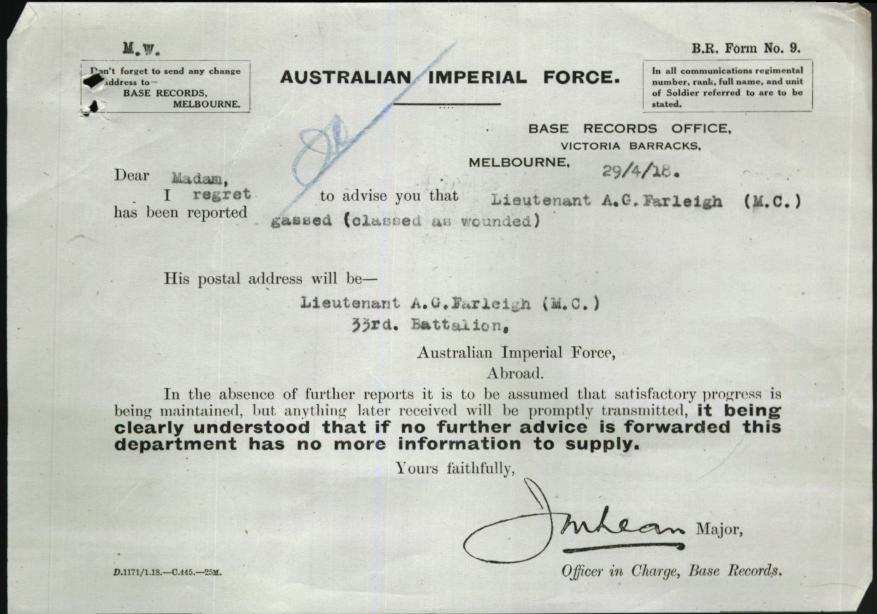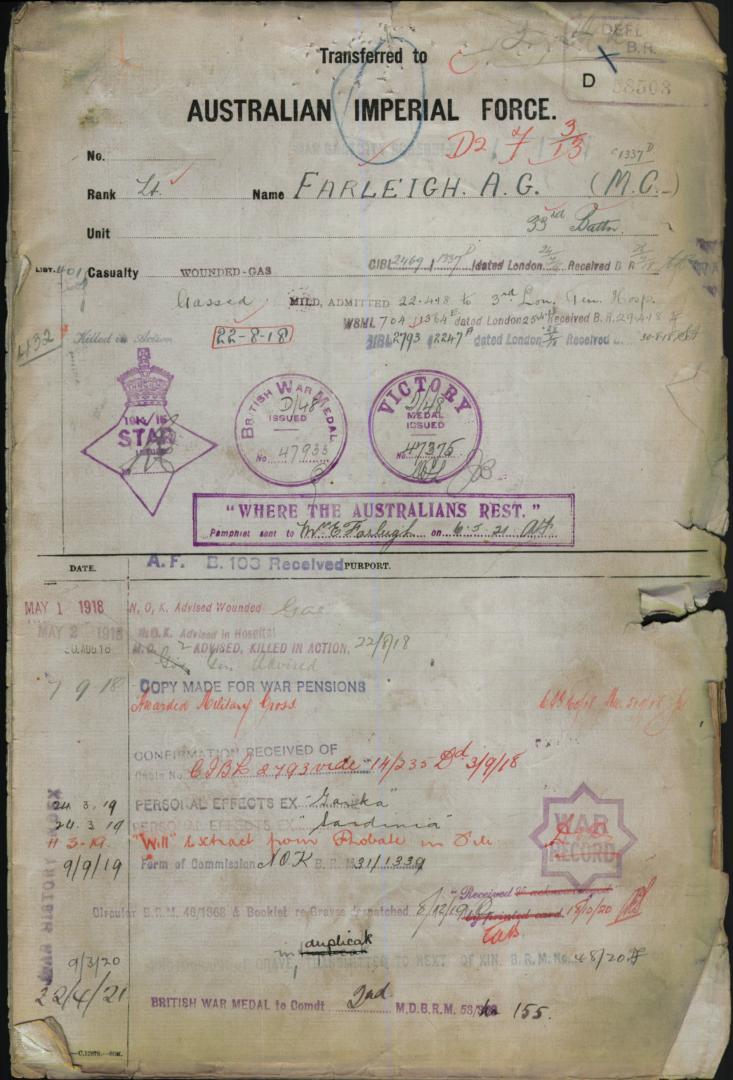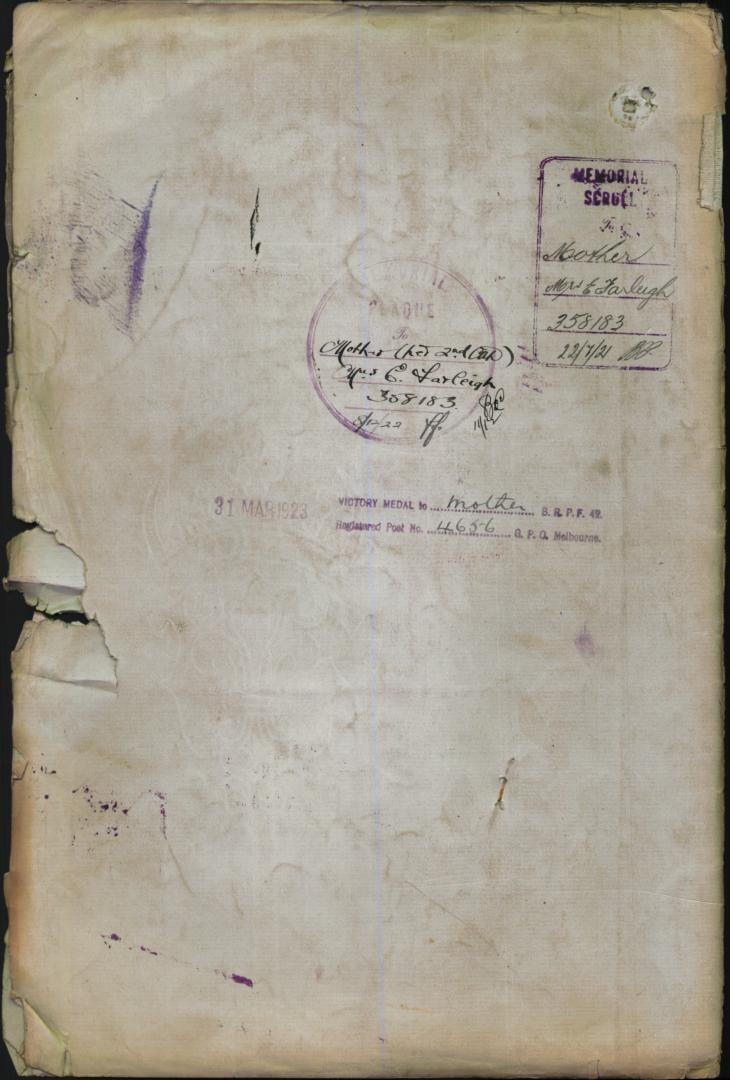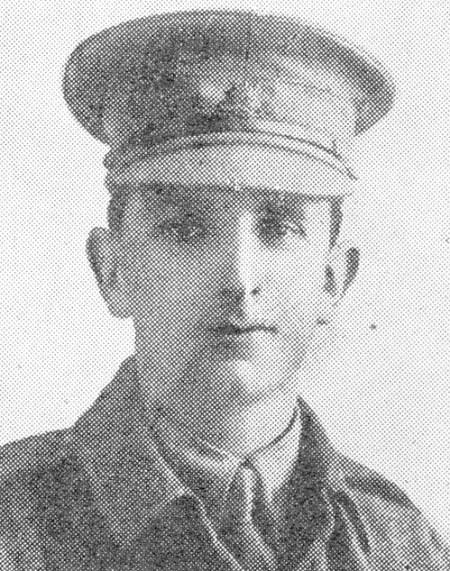
34th BATTALION A.I.F.
Captain: 717 Benjamin Greenup BRODIE.
Born: 4th May 1885. Parramatta, New South Wales, Australia. Birth Cert:17975/1885.
Married: 1911. Sydney, New South Wales, Australia. Marriage Cert:7973/1911.
Wife: Mary Anastasia Brodie. nee: Russell. (1879-1947)
Died: 5th March 1918. Killed in Action France.
Father: William Alfred Brodie. (1854-1937)
Mother: Georgina Sophia Louise Brodie. nee: Winchombe. (1858-1906)
INFORMATION
Benjamin Greenup Brodie enlisted on the 18th of July 1915 and was transferred to the C Company, 34th Battalion with the rank of Sergeant and was an original member. On 1st May 1916, the Battalion left by Train from Farley Station for the Showground in Sydney, equipped with kit bags and necessary clothing, and was reviewed in Moore Park by General: Gustave Mario RAMACCOTTI. On the following morning, 2nd May 1916 the men embarked on the transport HMAT A20 "HORORATA" and sailed at 4:00 pm".
(1) The voyage to England was without any unusual incidents and a good passage throughout. The first port of call was Albany, where three days were spent. Columbo was reached on Empire Day, 24th May. Here two days were taken up coaling and taking on provisions, etc. During the stay the Battalion carried out a route march through the town. Suez was reached on 8th June, where a party of Light Horse and some details were disembarked. Arriving at Port Said on 9th, the ship coaled and proceeded to Alexandria which was reached on 11th June 1916.
Here the Battalion transferred to S.S."Aragon", E867. Some Australian Details were on board, also a number of Tommie's going to England on Furlough. Devonport was reached on the 23rd June, the Battalion disembarked at Plymouth at 1:00 pm and en trained during the afternoon for Amesbury, arriving at midnight and marching to hutments at No: 1 Camp, Larkhill. Here the Battalion settled down to hard training, which included Route Marching, Trench Digging, Bomb Practice, Musketry and general Camp Routine. Later the Battalion moved to the No: 25 Camp and finished off their training, which included six days' battle practice and field work at the Bustard Trenches.
Four days' disembarkation leave was given from 6th to 10th July and Benjamin was promoted to 2nd Lieutenant on the 12th August. and again granted King's Leave from November 5th to 9th. Whilst here the Official Colours were issued. Purple over Green (Oval), these replacing the Colours presented to the Battalion (Old Gold on Shoulder Straps) by the Ladies of West Maitland. A Signal Section was formed at Larkhill under Lieutenant: Harold Henry McMINN. The weather in England was mostly fine until the latter part of training, when a good deal of rain and snow caused inconvenience. In October the 34th Battalion was reviewed at a Divisional Parade by His Majesty King George V at Bulford.
The 34th Battalion left Larkhill on the 21st November and en trained at Amesbury for Southampton, embarking on the S.S "Arundel". The transport section left by S.S. "Princess Victoria". The Battalion arrived at Le Harve, France on the 22nd November 1916. Disembarkation commenced at 8:00 am and the Battalion marched to No;1 camp on the Hill, arriving at 2:00 pm. The men carried heavy loads, in some cases amounting to miniature Q.M.' Stores. The march over cobblestones was very tiring, notwithstanding the many route marches which had been carried out at Larkhill. However, after bathing their feet and receiving treatment, as well partaking of a good meal, some spent a comfortable night.
The following morning the Battalion moved to Le Harve Railway Station, leaving D Company behind. On arrival at the Station en training commenced at 8:00 am and the train left at 11:15 am. The journey was slow and occupied until 4:30 pm on the 24th. On arrival at Bailleul the men de trained and marched to Outtersteene. D Company arrived at 4:00 pm the following day. The Battalion rested here in billets for two days previous to taking over garrison duties in the Line at Armenties. The Commanding Officer Lieutenant Colonel. Malcolm St John LAMB. with the Adjutant, Company commanders, N.C.O's and Specialists went into the Line to inspect Trenches, Stores, Plans and to arrange for the taking over this Section of the line on the following day.
Benjamin was promoted to Lieutenant on the 11th February 1917. On the 17th May 1917 the Germans tried to raid the 34th Battalion at Le Touquet. The enemy this time employed the British method of a very short, though heavy, preliminary bombardment. The preliminary registration however had been observed and the Australian counter-barrage came down within 10 seconds of the S.O.S signal fired by Lieutenant: 4559 Frederick Murchison WAUGH. M.C. 34th Battalion. A party of Bavarians attempted to enter by a gap in the front line. One climbed the parapet and said "Hands Oop!" He was at once shot, and fell dead into the trench. Lewis Guns, in particular that of Private: 1416 Joseph Edward KIRK. M.M 34th Battalion, drove the enemy off.
On the 18th of May the previous night's attempt against the 34th Battalion was repeated after a short heave bombardment. On the S.O.S. being fired by Lieutenant: 1118 William Wright EDMONDS. M.C. 34th Battalion, the protecting barrage again came down instantly, but the enemy entered a gap near a sector in which cylinders had been installed for an impending release of gas. Working alone the line, they bombed a Lewis Gun Team, wounding three. The remaining men, Lance Corporal: 1530 James HAM D.C.M. 34th Battalion and Private 1248 Bertram Guy Taylor M.M. 34th Battalion, continued to fire, and killed all five intruders.
(3) Lieutenant: Benjamin Greenup BRODIE and the scouts afterwards went out, driving back the German covering party and stretcher-bearers, brought in a wounded Baverian Pioneer, and evidence and identification from 11 Germans who had been killed.
1st June 1917.
PLOEGSTEERT WOOD 2:30 am. Small silent Raid with a strength of 2 Officers, 2 NCO's and 22 men was put over from "B" Coy's Sector against the enemy's front line. Object to gain identification Kill Bosches and destroy dugouts. The Raiders were divided into two parties. Lieutenant: Ernest SHANNON with 12 men to enter the enemy trench from the right Lieutenant: 717 Benjamin Greenup BRODIE. and 12 men to enter from the left. Both parties to work towards the center. The enterprise was entirely successful and was only marred by the death of Lieutenant: SHANNON a very gallant and efficient Officer.
The Right party entered enemy's trench without opposition but after bombing the first dugout, were attacked by a number of the enemy who issued from the rear of a second dugout. Lieutenant: Ernest SHANNON was killed by a bomb thrown by one of his own party. Our men immediately attacked the enemy and forced them back to the dugout, where they destroyed them by throwing in bombs.
The left party Lieutenant BRODIES met considerable opposition in passing through the enemy wire, but succeeded in entering the trench and destroying two dugouts and the enemy who occupied them. As it was now broad daylight and the enemy opposition increased, the parties withdrew to our own front line. The men of Lieutenant: SHANNON's party displayed great determination and bravery in bringing back his body in broad daylight under heavy fire from the enemy trenches. The original time set down for this enterprise was 1:30 am but by order of higher authority it was postponed to 2:30 am to coincide with other enterprises which were supported by artillery fire on our right flank.
As our own enterprise was a silent one, and it was in broad daylight at 3:00 am this only allowed 30 minutes for the crossing of "No Mans Land". The negotiation of the enemy's wire and the cleaning up of his trenches. This restriction of time was a great handicap to the enterprise. Enemy artillery active battery work on our batteries in rear of Ploegsteert Wood. 5:00 pm Headquarters partially destroyed by enemy artillery fire. Lieutenant: SHANNON buried in Military Cemetery in rear of the wood.
(34th Battalion War Diary)
6th June 1917.
BATTLE OF MESSINES
(1) At 10 pm on the 6th June 1917, the Battalion left its billets fully equipped for the assembly Trenches. The order of march being "D", "A", "C" and "B" Companies. All went well until just before reaching Gunners Farm, where the enemy was putting a number of Gas Shells over and Masks had to be put on. Ploegsteert Wood and the back area were receiving particular attention. All Companies were greatly delayed of the amount of Gas in the Wood, which resulted in a number of men being gassed on the way up and many others were completely exhausted. A number of men lost there way in the darkness and smoke. Many could not see at all and had to be led back by there comrades. I many cases it was the blind leading the blind. After a grueling March, the first arrivals reached the Assembly Points 30 minutes before Zero Hour, while the last company arrived only 10 minutes before Zero.
On the 7th June, seven seconds before Zero Hour, which was 3.10 am, four Miles on our front were fired. There was a violent swaying as if an earthquake had taken place and the men in many instances were thrown together. The sky was brilliantly illuminated by the explosives and terrific Artillery fire, the sound of which could not be heard over the intense Machine Gun Barrage. The men left the Trenches immediately and there were a number of casualties on the parapet owing to the heavy enemy Barrage. The supports were also being shelled and the Reserve Company ("D") suffered considerable losses. The weather was hot and sultry and every one felt the trying march.
The Battalion passed through the 35th Battalion in the vicinity of the enemy's original Front Line, near Ulsters Switch. The enemy fire had been very severe up to this point and many men were lying here. A halt in our Barrage gave the Company Commanders an opportunity of Checking their Compass Bearings, defining their limits, and getting into position for the next advance. At the left of the Barrage a fine assault in complete waves was made. The men gained their objective in fine style behind a perfect Barrage and commenced consolidating their position. The mopping up of the Trench System was soon accomplished and many of the enemy were killed in their Dugouts. By 5.30 am fair cover had been obtained on the Consolidation Line. At 6.30 am Enemy Machine Guns were located in a re-bout in "Uncertain Trench" and heavy Artillery was brought to bear on them with good results. By 7.30 am the Black Line was down to two thirds of its depth and linking up by Companies and Platoons were in progress. The enemy was seen moving along "Uncertain Trench" and also reports were received from the 33rd Battalion that the enemy was massing 1,000 yards in front. Reports of enemy movement continued throughout the early part of the morning, but Artillery co-operation helped to disperse the tendency and during the day no organised counter attack was attempted.
At 8.30 am the Line was well dug along the Front and affording excellent protection for the men. By 9.30 am only one gap remained between "A" and "B" Companies in the full length of the consolidation of the "Black Line" to the River La Douve. The Trenches being now well down, widening and sandbagging were now in progress and at 11.30 am showed very plainly in an Arial Photo as a good defensive Trench. There were repeated inquiries for water from the Front Line. Carrying Parties were suffering heavy casualties and were completely knocked up with the long distance.
At 1.40 pm Captain: Arthur Sidney WHITLOCK with "D" Company advanced to the Green Line, without Artillery support, owing to an alteration in the Zero Hour not reaching him. At 2.45 pm he reported by Runner that, having waited 30 minutes and no Artillery Barrage as arranged have been put down, he had advanced to the Green Line and was consolidating. by 7.30 pm all Companies reported that their positions were well consolidated. Just before midnight Captain: Arthur Sidney WHITLOCK was killed between the Green and Black Lines, and Captain: Robert Joseph STEWART took command of "D" Company. Patrols under the Scout Officers were sent out during the night and encountered enemy Patrols which were dispersed. A number of enemy patrols were also killed by our Machine Gun and Lewis Gun fire earlier in the night. At 5.00 am on the 8th June an enemy Plane over, flying low and inspecting our new position.
Our casualties to date had been 8 Officers and 236 other ranks. Captain: Arthur Sidney WHITLOCK and Lieutenant: 584 Leslie William Roy WARNER K.I.A. Lieutenant's Lieutenant: William Walter MATTHEWS Lieutenant: Hector Reginald McLEOD, Lieutenant: Bruce Gray McKENZIE, Lieutenant: Benjamin Greenup BRODIE, Lieutenant: Thomas Clifton PITTAWAY, and Lieutenant: Frederick Winn WALKER wounded.
Benjamin was Wounded in Action during this action, where he received a Gun Shot Wound to the foot and was evacuated to the Casualty Clearing Station before proceeding overseas for England where he was admitted to the Southern General Hospital on the 11th June.

After being discharged Benjamin was marching in to Tidworth Camp until he proceed overseas for France on the 27th August 1917 and rejoined his unit.
WARNETON
3rd March 1918.
(2) 9:00 am. Weather dull and very cold. Our Artillery fairly active throughout the day, Enemy Artillery quiet. 11:45 am. 9th Infantry Brigade Raiding Party of 300 strong racked enemy trenches opposite 33rd Battalion Sector on our right. Raid very successful 1 Officer 11 other ranks being brought back prisoners. 34th Battalion casualties in the raid were 1 other ranks Killed 3 other ranks Wounded. There was no Artillery retaliation on our Sector.
Lance Corporal: 2597 John Henry JOHNSTON.
(1) At 11.45 pm on the 3rd March a combined 9th Brigade Raid took place, which proved most successful. One Officer and 11 Other Ranks were brought back as prisoners. Our casualties were 3 wounded. The following night the brigade Raiders again entered the enemy Trenches and succeeded in killing 40 of the enemy.
Private: 7533 Walter Godfrey SMITH. 34th Bn AIF. Killed in Action 05/03/1918 France.
This Raid however was not so successful as the previous night. The Battalion losing one of its efficient Officers Captain: 717 Benjamin Greenup BRODIE. These Raids were well organised and the men, who had been especially trained, were well equipped. On the second night 100 men of the Battalion took part. The object of the Raid was to blow up Dug Outs and Tunnels. The Assembly Point was in the front of the 33rd Battalion Outpost near No: 7 Post in the front of the Sugar Refinery. Our men were in "C"Company of the Raiders, with Captain: 717 Benjamin Greenup BRODIE in charge. Lieutenant Colonel John Alexander MILNE, 36th Battalion was in charge of the Brigade Raid. Each man carried three of four Bombs. Some were Rifle Grenades, others Lewis Gunners, some Bombers and also Bayonet Men. Most were dressed in Tommy Uniforms. The Demolition Party carried special charges and detonators. It rained heavily during march to the Assembly Point and the men enjoyed the hot Cocoa and Coffee supplied by the Y.M.C.A on the way up.
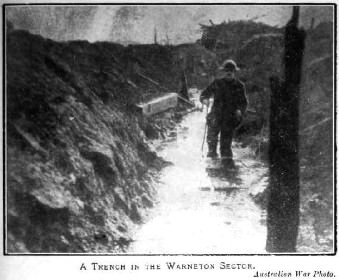
The Barrage opened at 12:50 am 1 Officer and 4 Other Ranks went forward to lay the tape for direction. Seven minutes later the Covering Party went out and laid in the enemy wire, 45 yards from his Trenches. This Party was armed with Lewis Guns, Bombs and grenades and was in charge of Sergeant: 841 William Samuel MUDFORD. The Main Raiding Party followed the tape and passing through the gaps cut the wire, entering the Trenches. Some strong opposition was encountered from the enemy, with Grenades and Machine Gun fire. Captain: 717 Benjamin Greenup BRODIE while standing on the parapet, directing operations, was hit in the chest and side by Machine Gun Bullets. Lieutenant: 64 Alfred James FELL. and his Party proceeded up the Communication Trench, while Sergeant: 145 Charles Henry NUNN worked along the Front Line to the left. Much opposition was met, as the enemy was apparently waiting in strong force. After six minutes they withdrew, bringing Captain: 717 Benjamin Greenup BRODIE out, who died on the way back. Lieutenant: 12944 Mervyn REES who was in charge of another Party, also returned after doing good work. Shortly afterwards the Covering Party under Sergeant: 841 William Samuel MUDFORD. returned and the 33rd Battalion again took over the Post. Later the enemy retaliated with heavy Shell Fire.

During the afternoon enemy Planes were very active and a squadron flew over. One of the Planes released a paper balloon carrying pamphlets. These were collected and sent to Divisional Headquarters. At 2.40 pm on 6th March Warneton Tower was brought down by the 5th shot of a 15 inch Gun, much to the delight of the Troops who heartily cheered its downfall. On 7th March the Battalion, on being relieved by the 24th Battalion marched to Hyde Park Corner and were conveyed by light railway to Romarin Camp. The following day the men marched to Steenwereck and entrained for Desures. Having de trained, the Battalion marched to Billets at Le Wast, arriving at 11.00 pm on 9th March. The Billets were comfortable but somewhat scattered. The weather was fine and mild.
The Transport traveled by road from Romarin Camp, arriving in grand condition and were complimented on their smartness. Training was carried out in the mornings, while the afternoons were devoted to sports. The men were given leave to Boulogne and St Omer. A Brigade School was formed under Major: Walter Arnold LeRoy FRY. and Major: Harry Lambert Edward Dixon WHEELER. became Commanding Officer of the Battalion. On 22nd March the Battalion left Le Mast and after marching to Lottinghem, entrained for Abeele, where it arrived the next day and marched to Waton. That evening Orders were received to be prepared to move and that all surplus baggage, including Officers' valises, was to be dumped. Leaving Waton on 24th March the Battalion marched to near Abeele and em bused for Wallon-Cappel in the Sercus area. On arriving at Hazebrouck the men de bused and marched to Le Belle Hotesse, and were under Orders to be ready to move at any moment.
(1) A Short History of the 34th Battalion, Illawarra Press; 1957.
(2) 34th Battalion War Diary
(3) BEAN, History World war 1 Vol IV

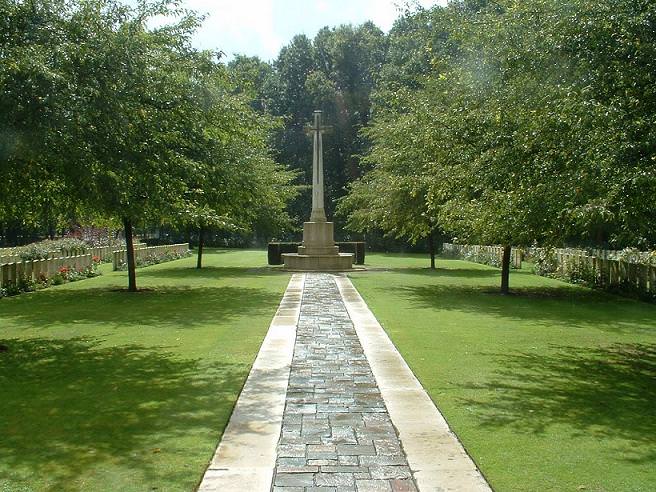
Captain: 717 Benjamin Greenup BRODIE was Killed in Action on the 5th March 1918 at Warneton and is remembered with honour and is commemorated in perpetuity by the Commonwealth War Graves Commission at the Berys Cemetery Extension, France.
(Photo; )
Family Information
Benjamin was a married 30 year old Commercial Traveller from Doncaster Street, Kensington, New South Wales upon enlistment. Ben's parents William and Georgina Brodie were married in 1887 at Paddington, N.S.W. Marriage Cert:1695/1887. Benjamin Greenup Brodie born 1885 at Parramatta, N.S.W. Birth Cert:17975/1885. and was Killed in Action in 1918 in France. Unnamed child born 1887 at Parramatta, N.S.W. Edward Marsh Brodie born 1890 at Granville, N.S.W. Birth Cert:14740/1890 and died 1947 at North Sydney, N.S.W. Death Cert:15833/1947. Robert Denman Philmore Brodie born 1892 at Parramatta, N.S.W. Birth Cert:28702/1892 and died 1938 at Chatswood, N.S.W. Death Cert:7472/1938.
Brother Benjamin Greenup Brodie, Lodge 263 Coolamon
Military Records
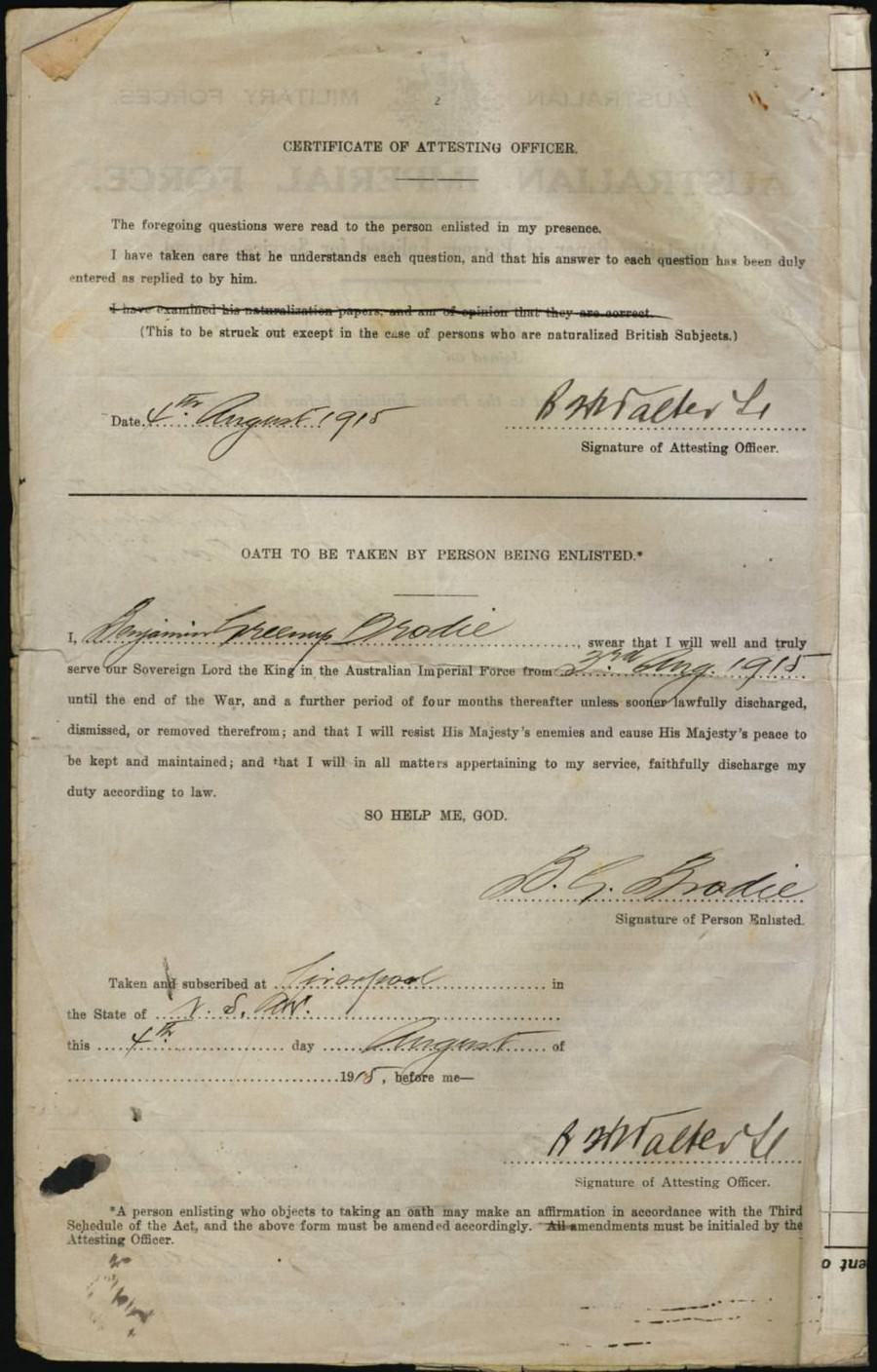
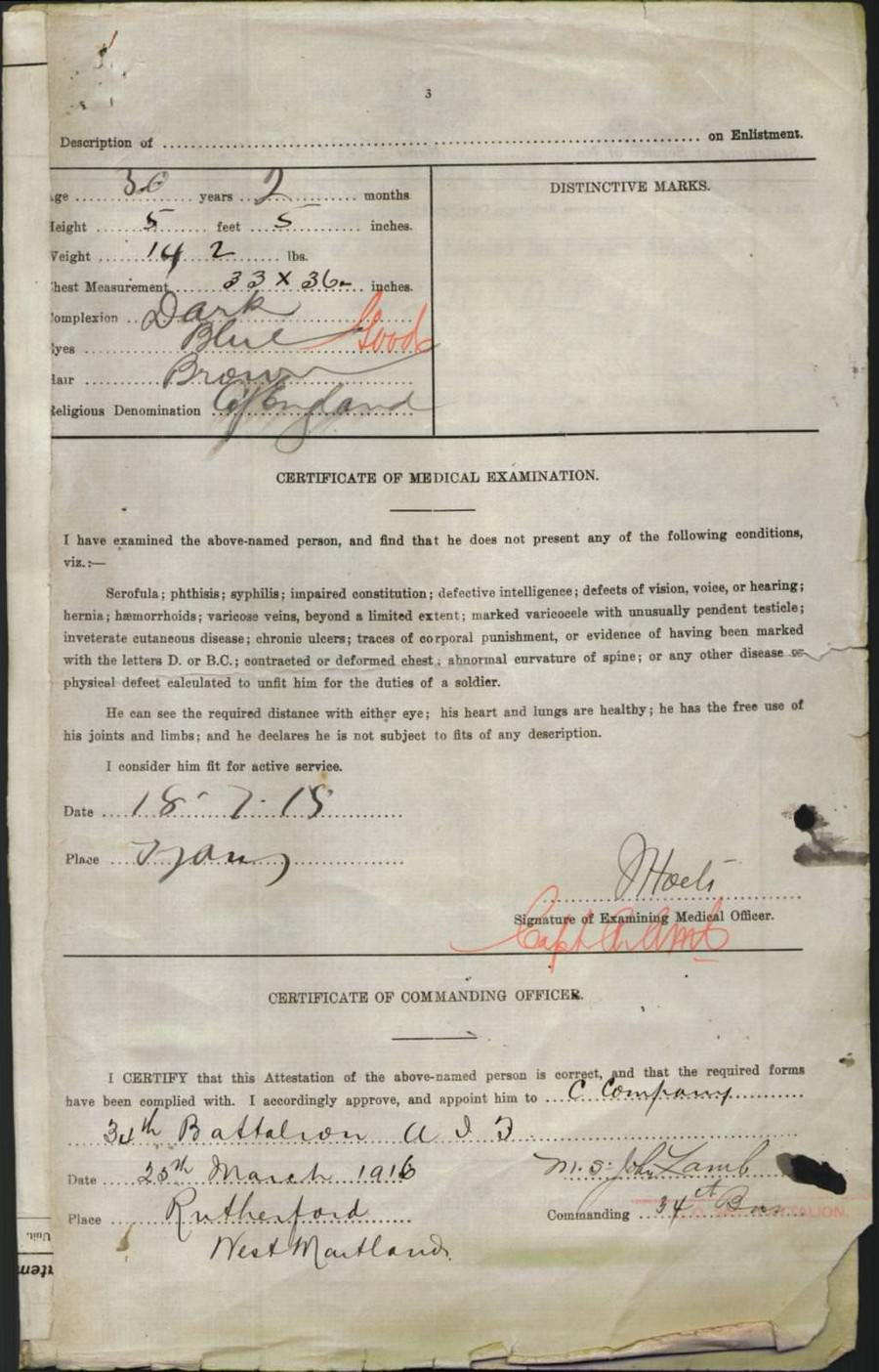

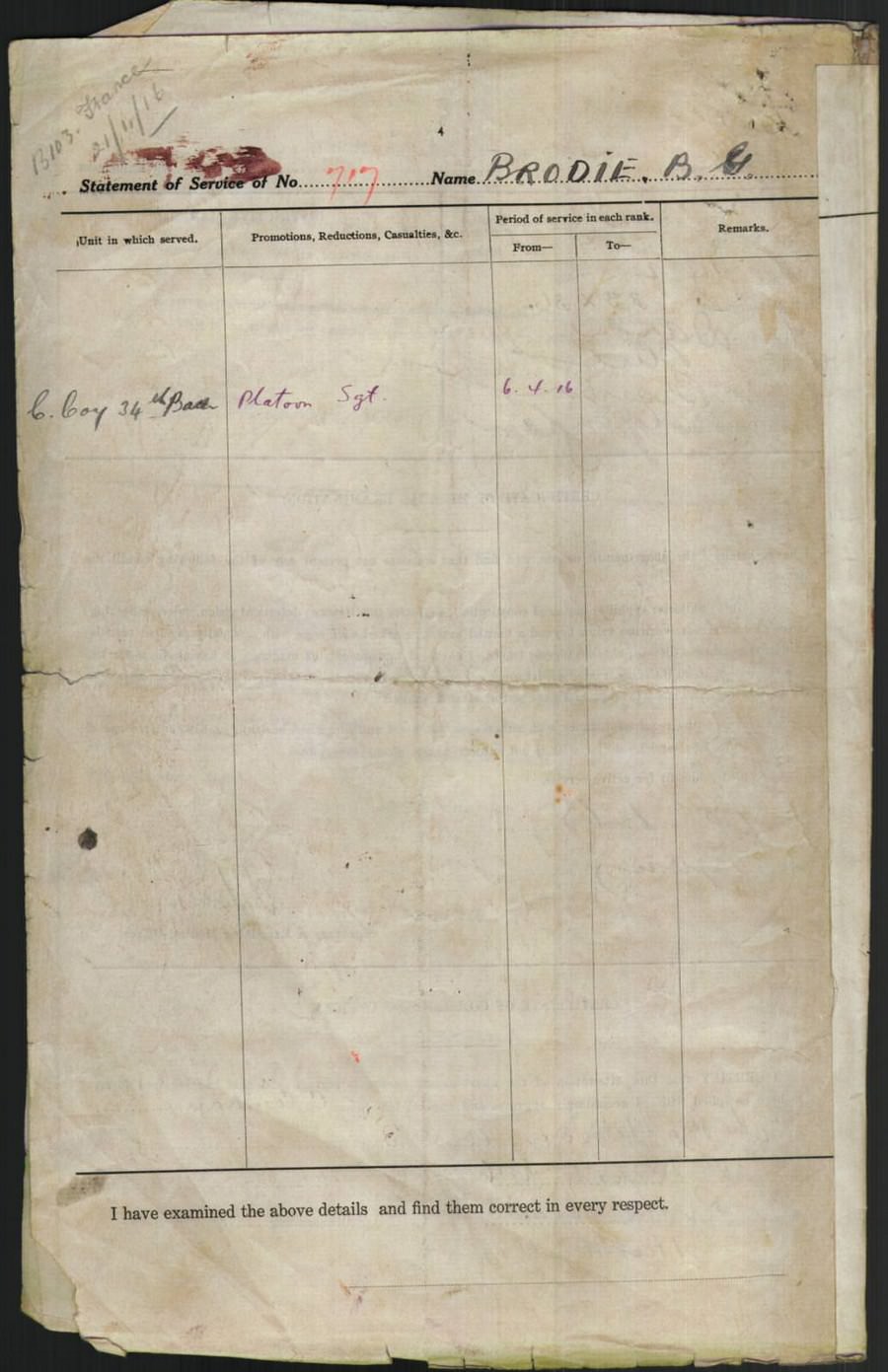
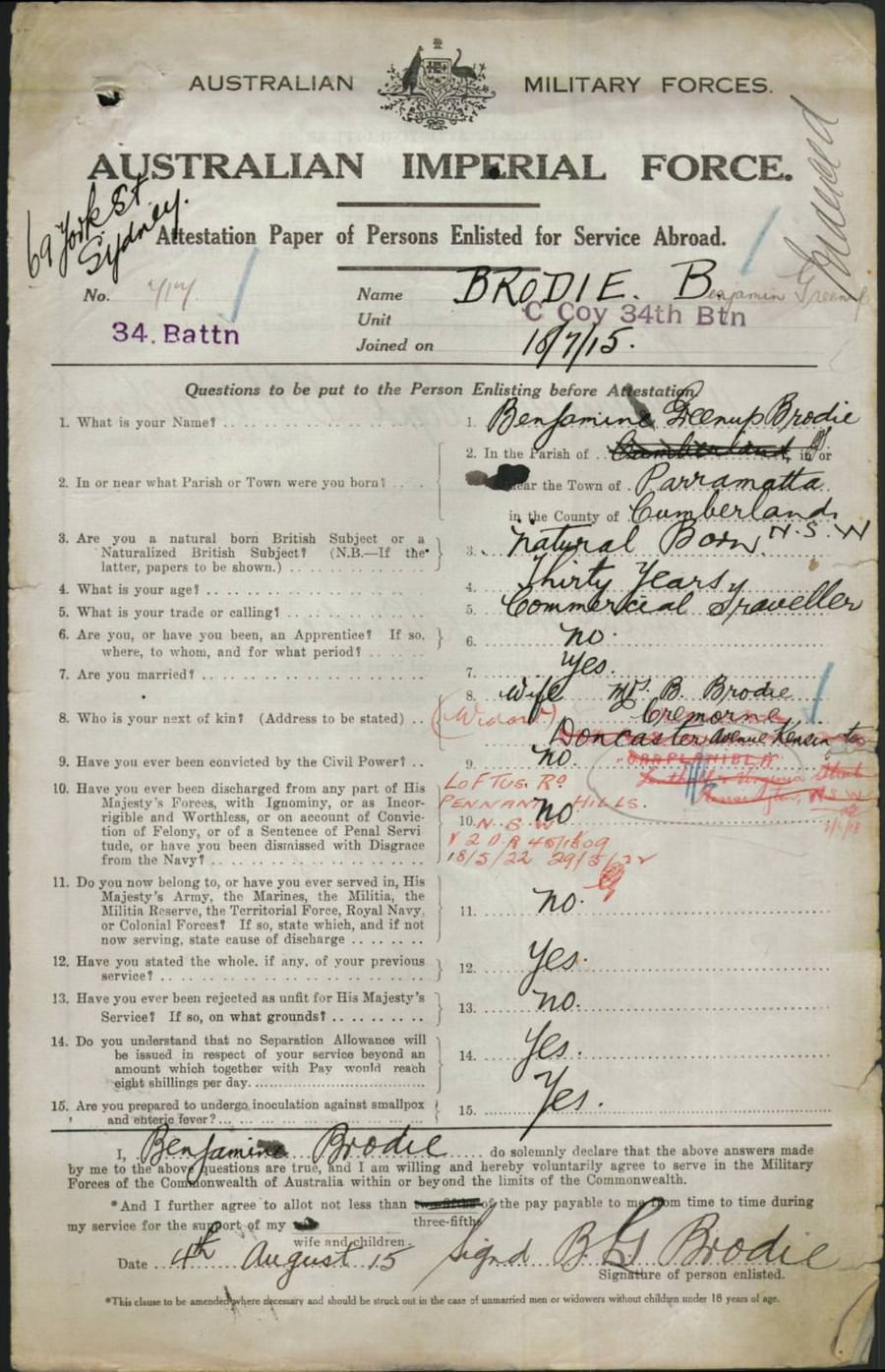
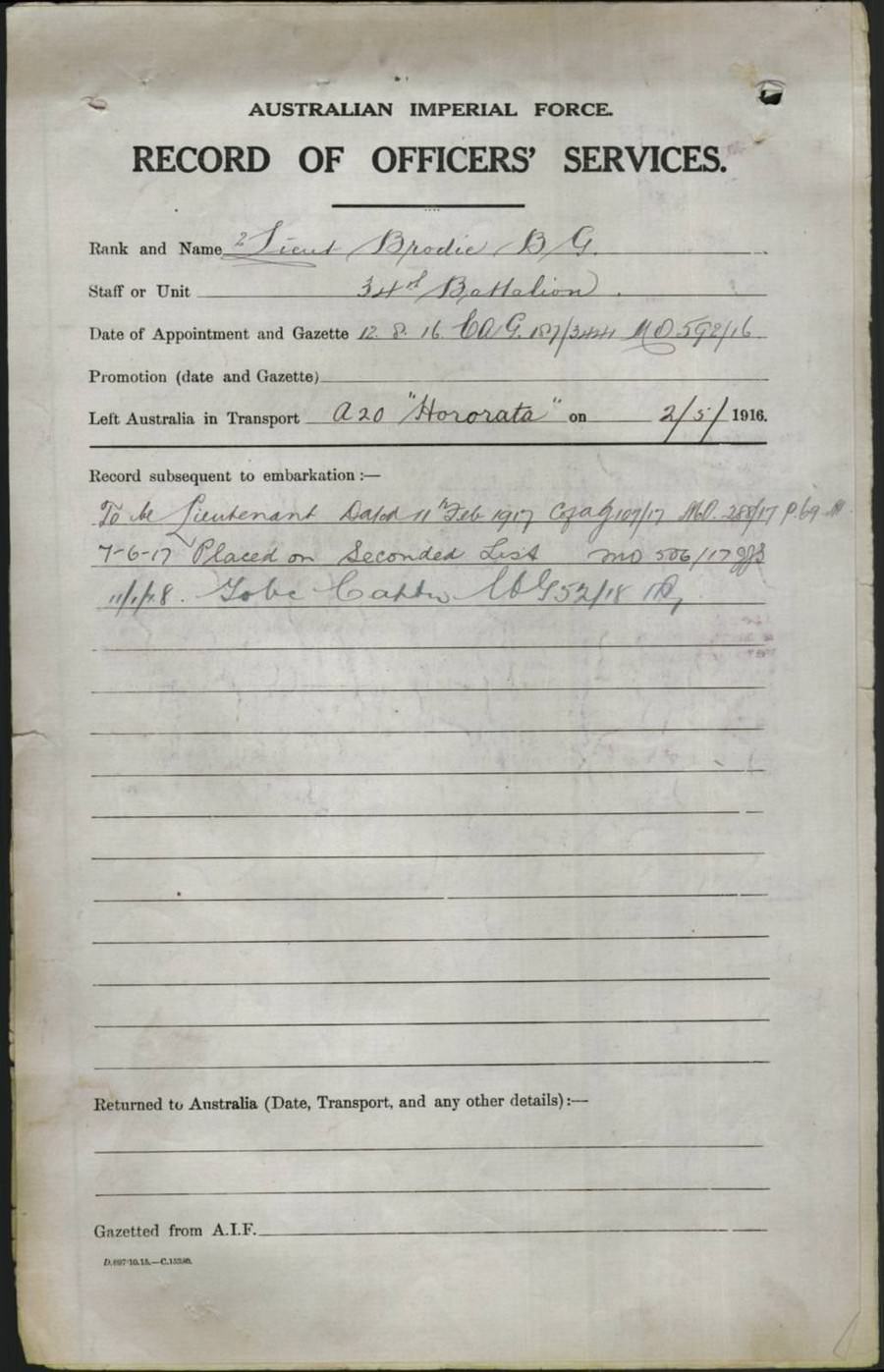

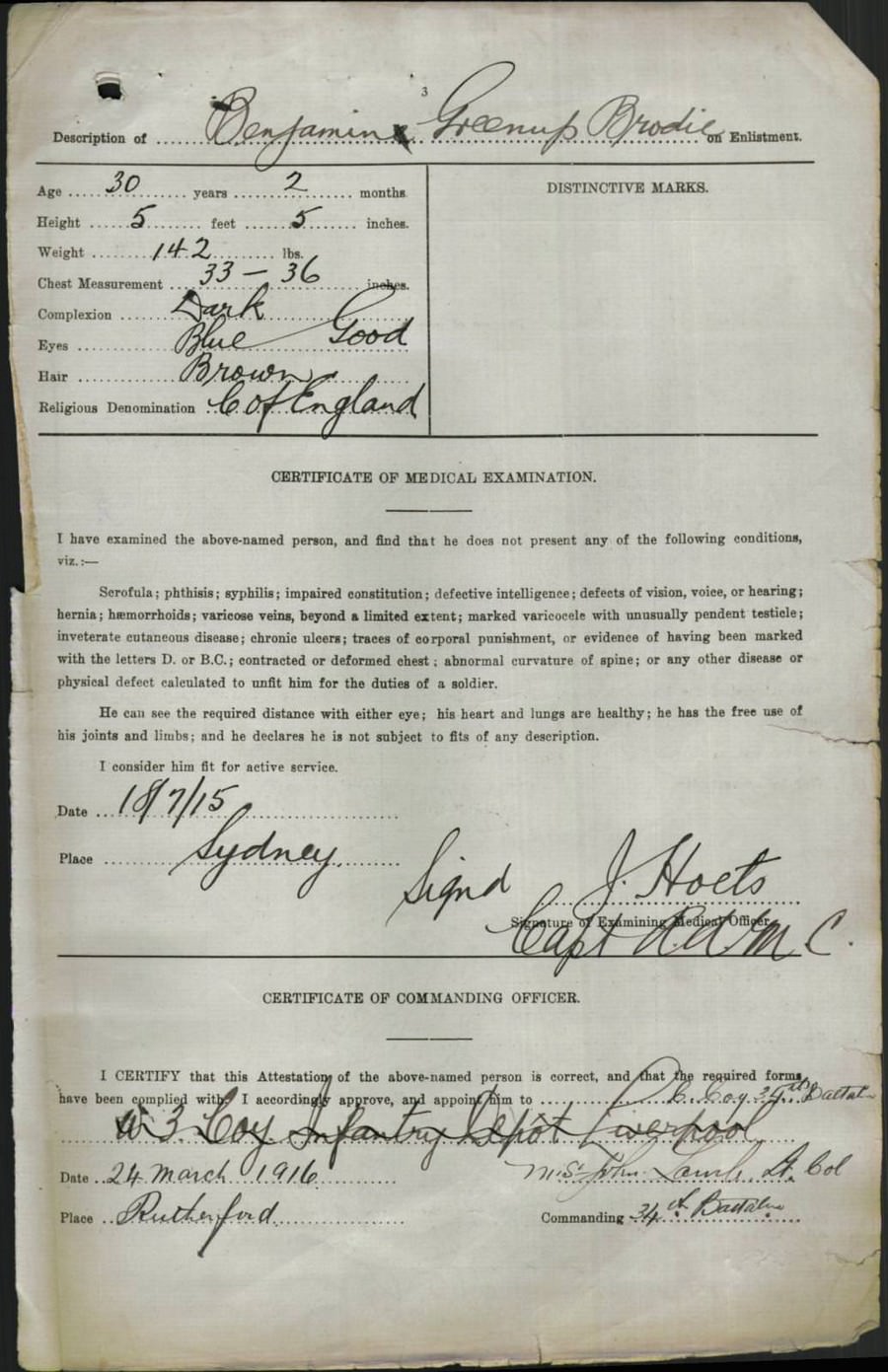


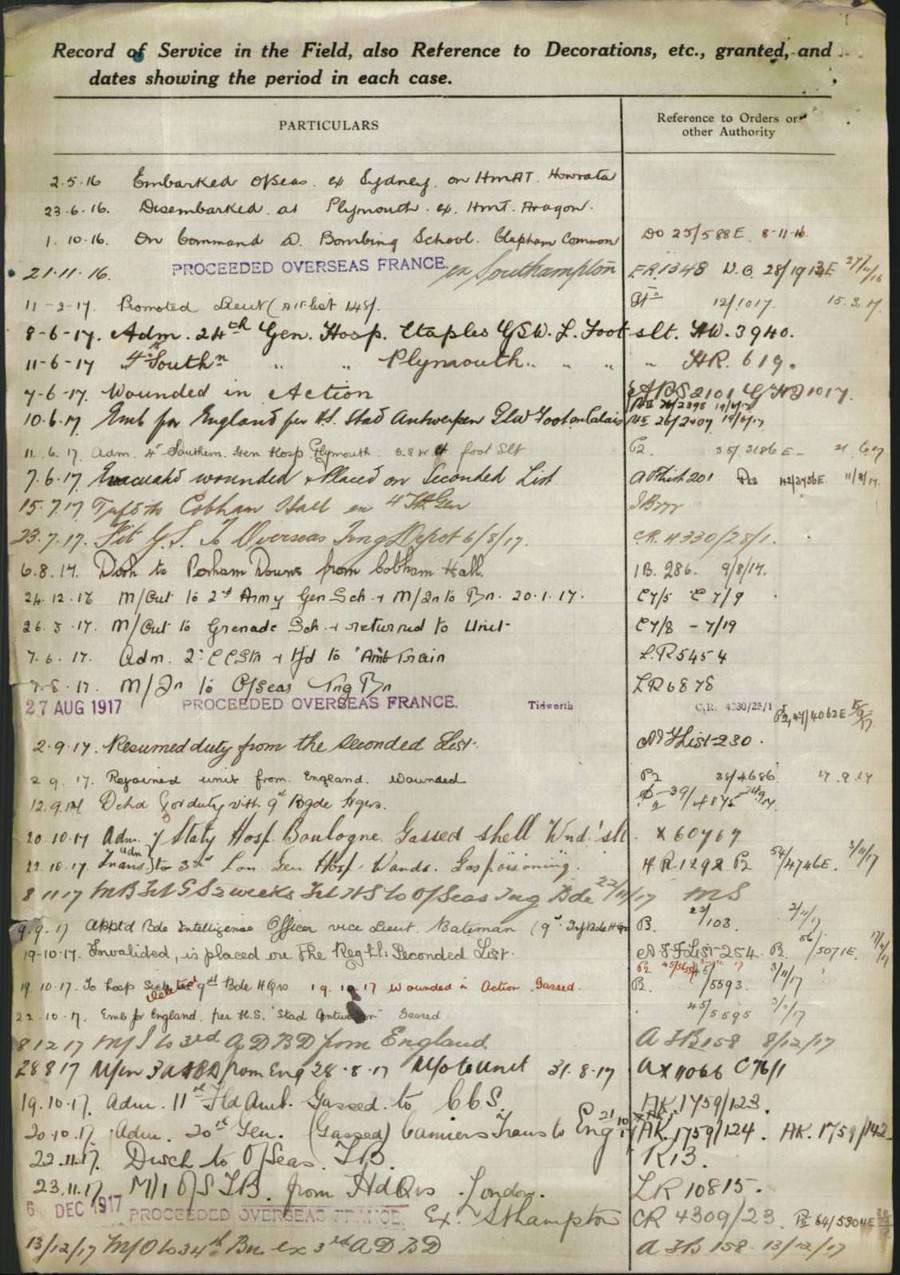
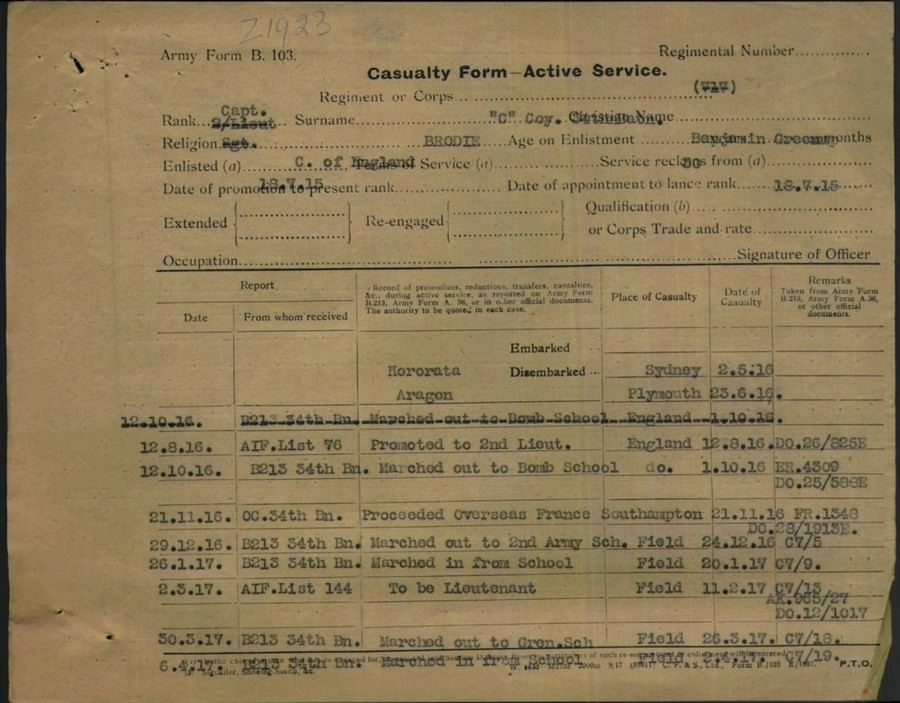
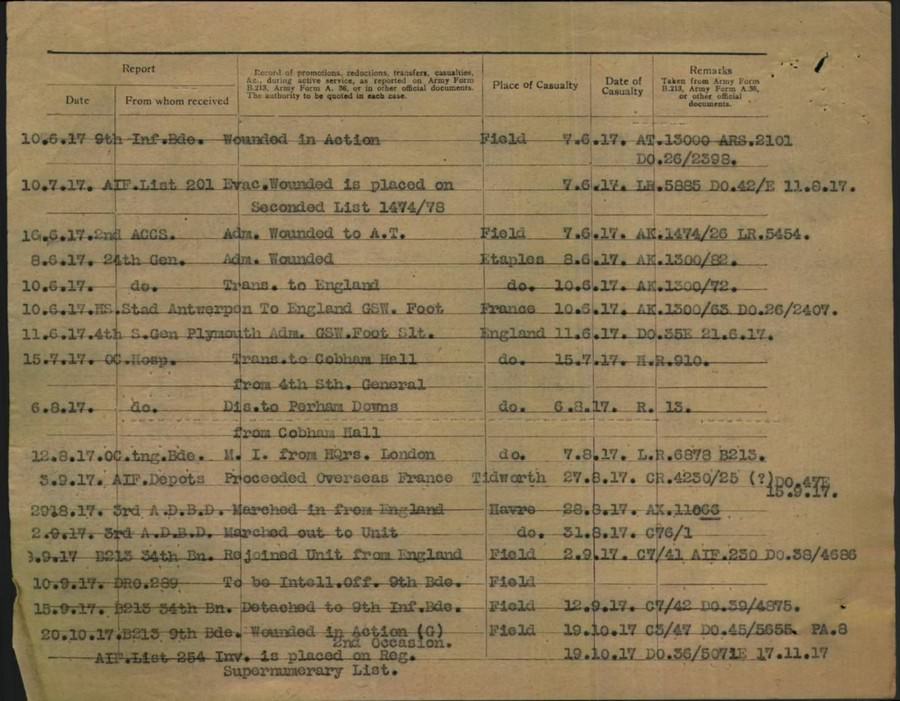
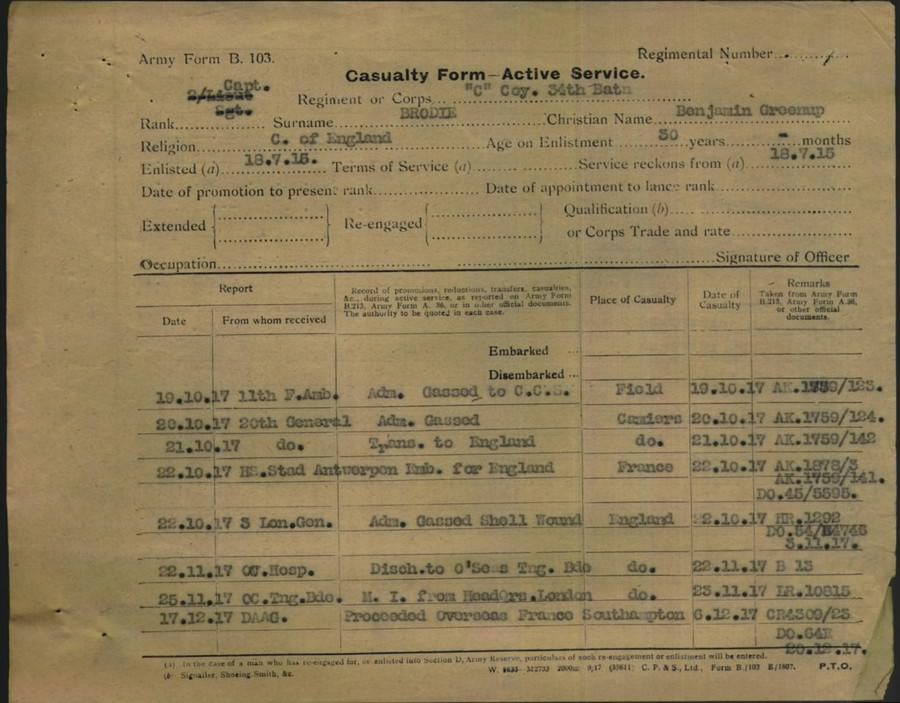
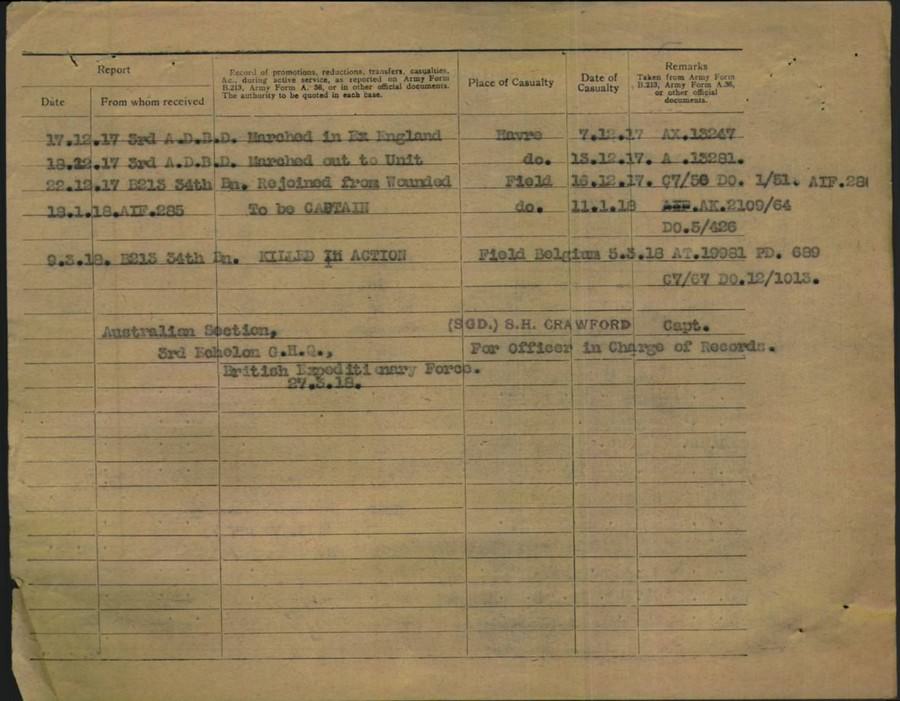
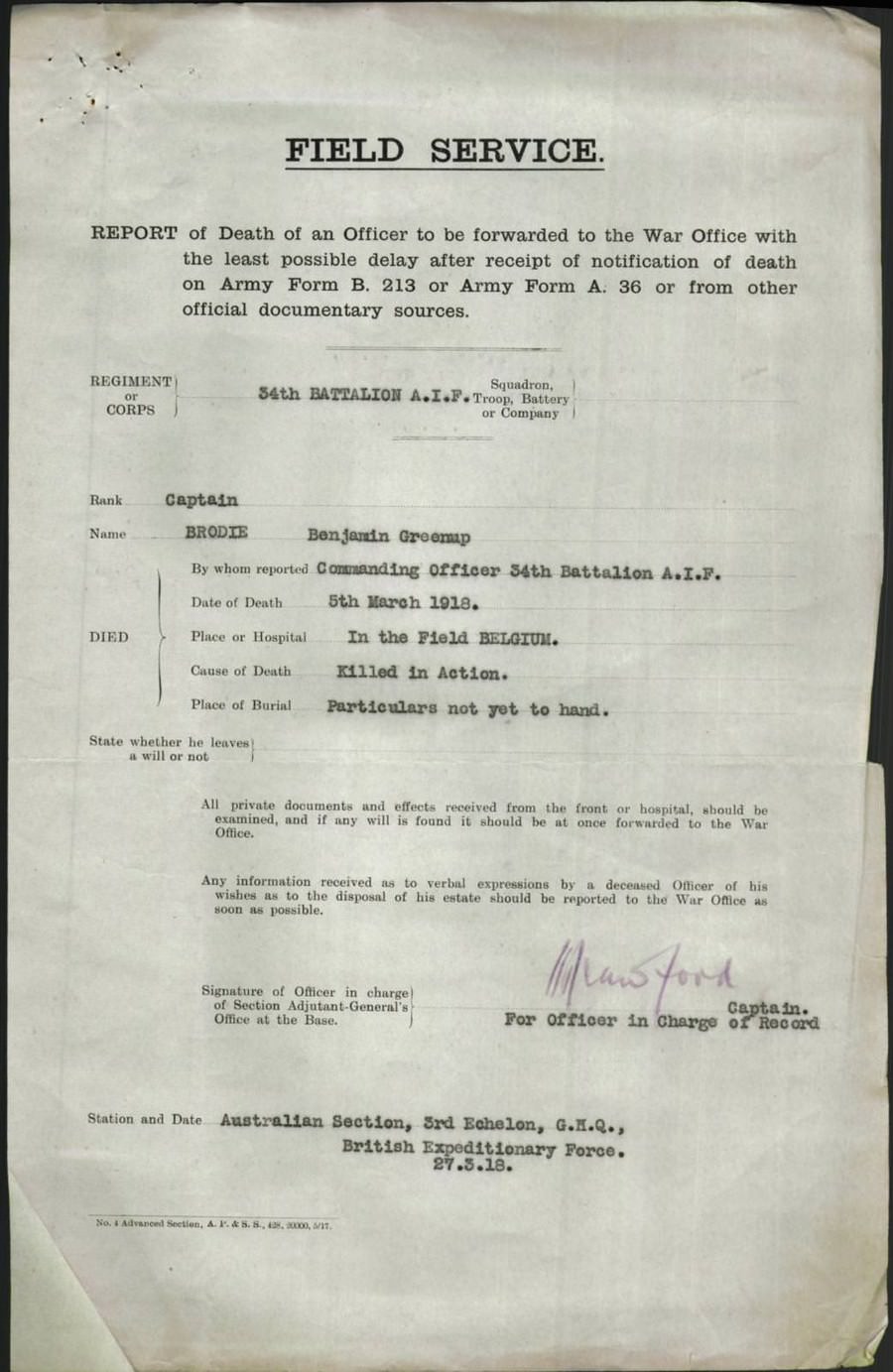
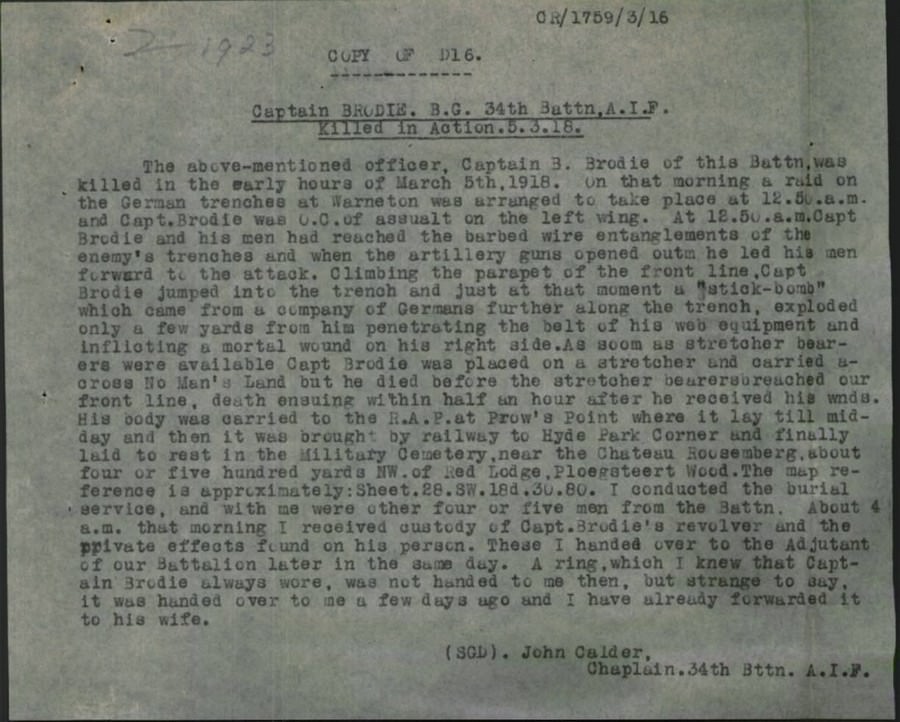

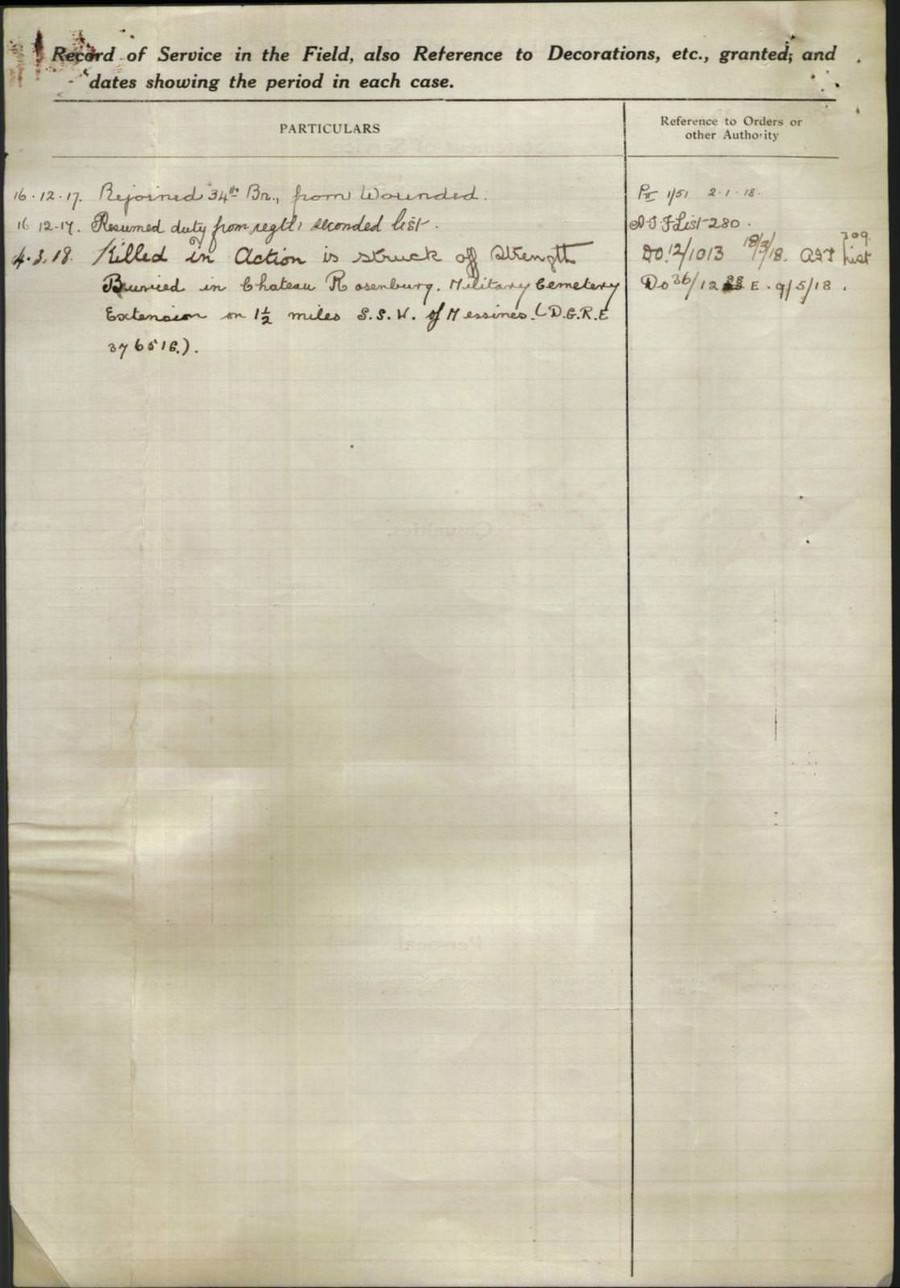


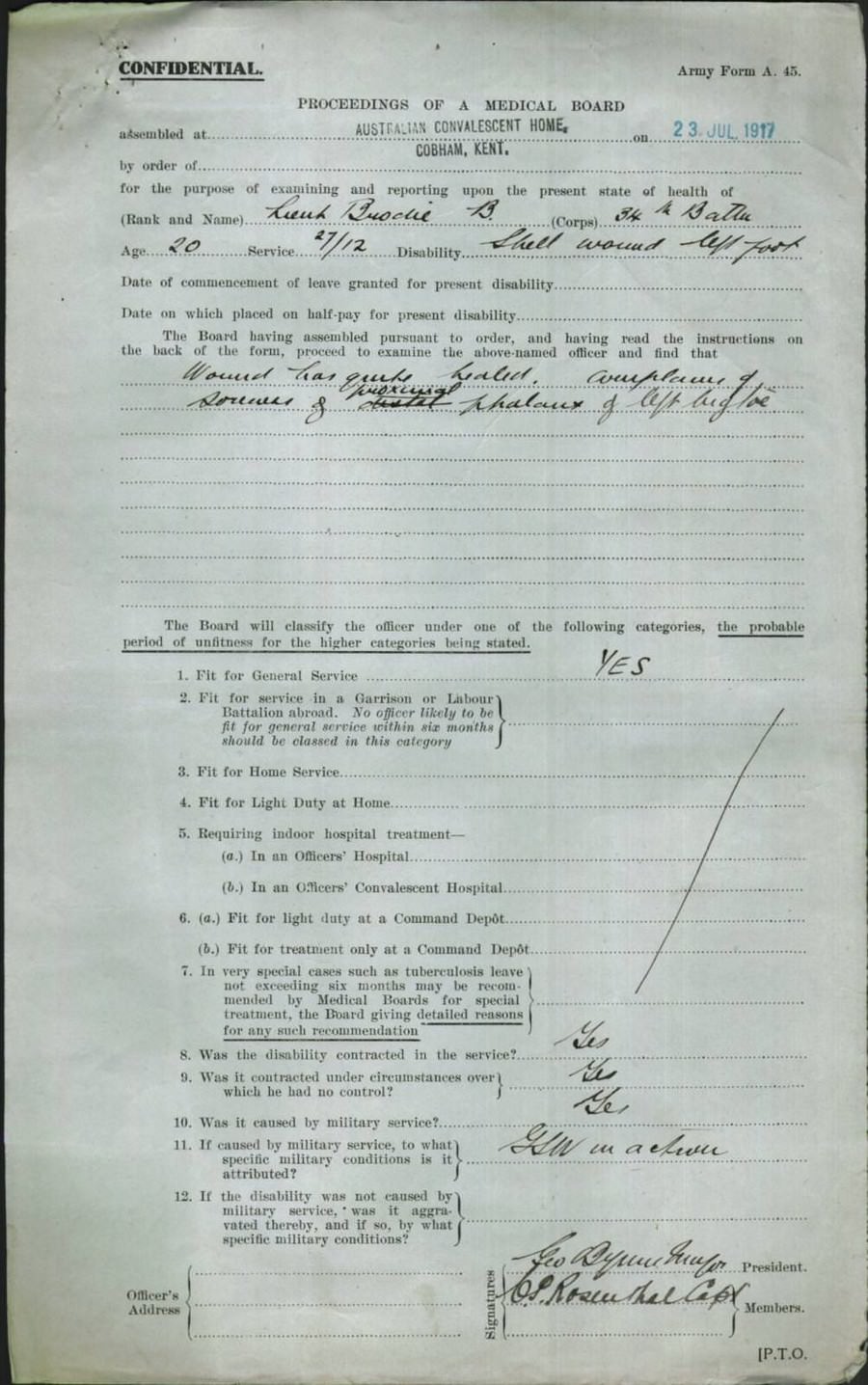
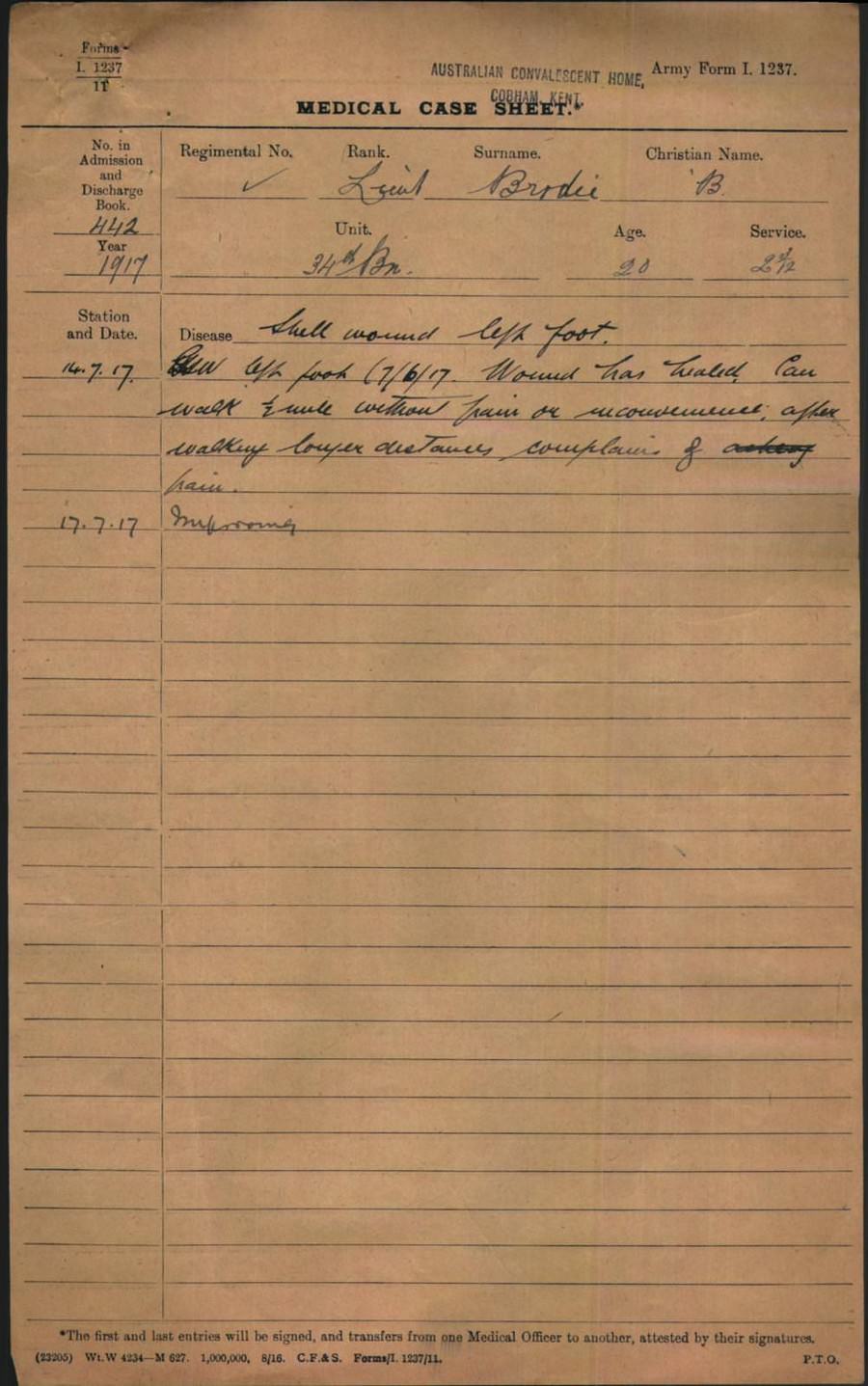

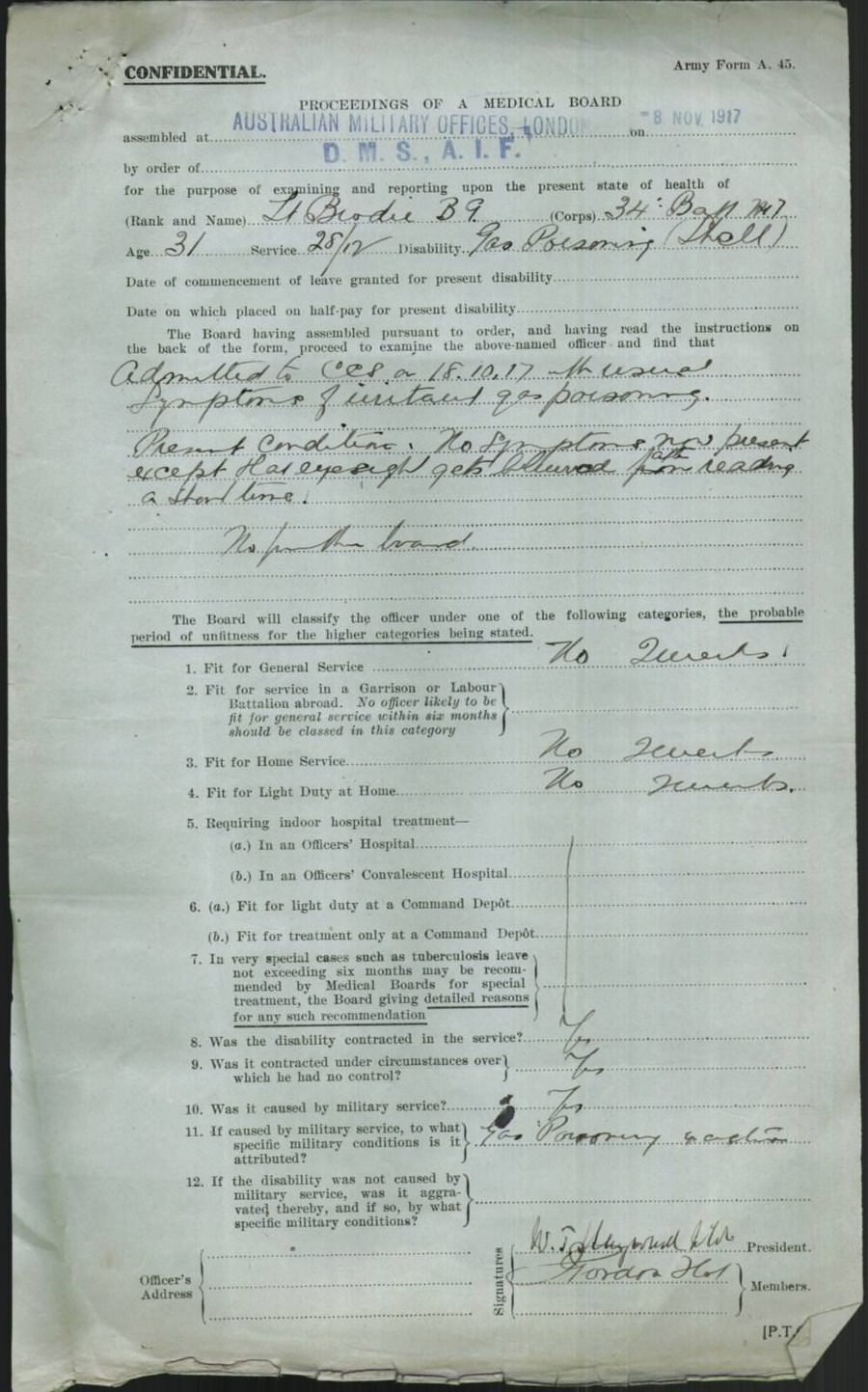
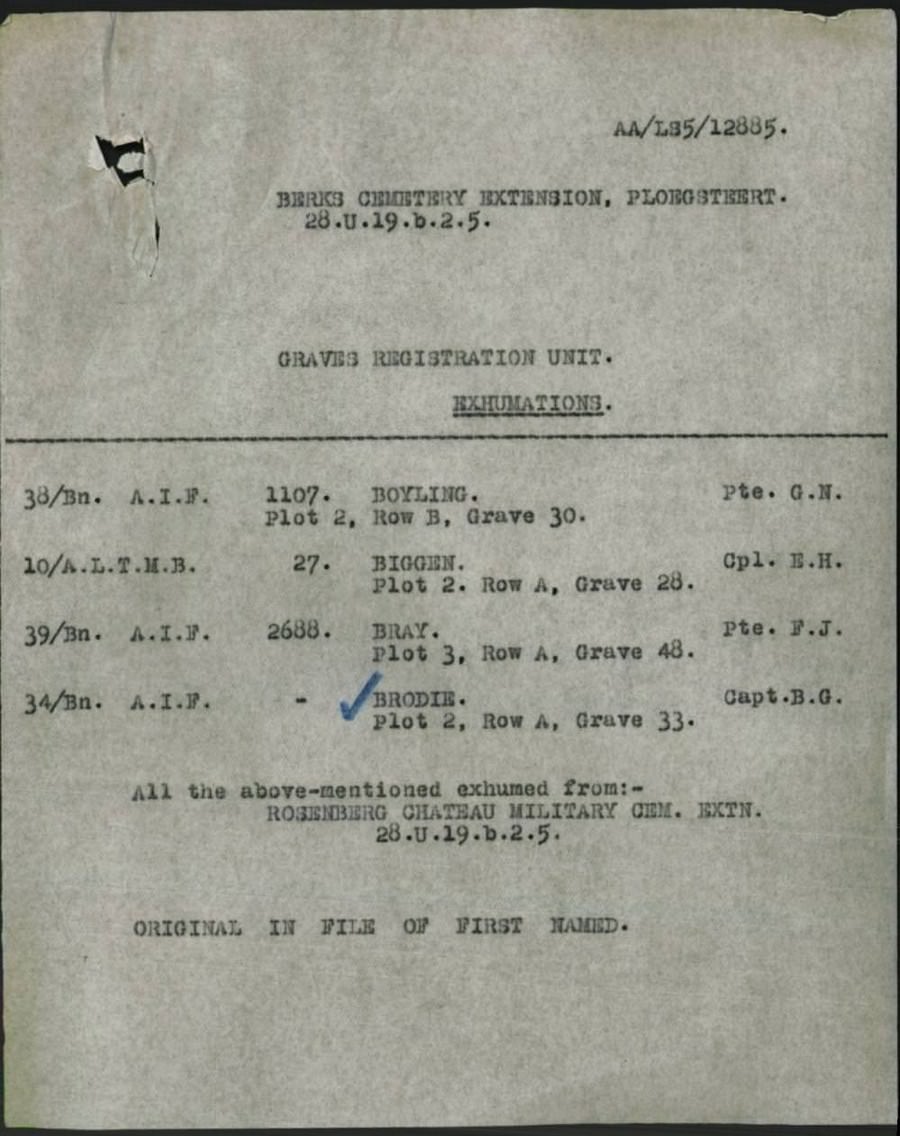

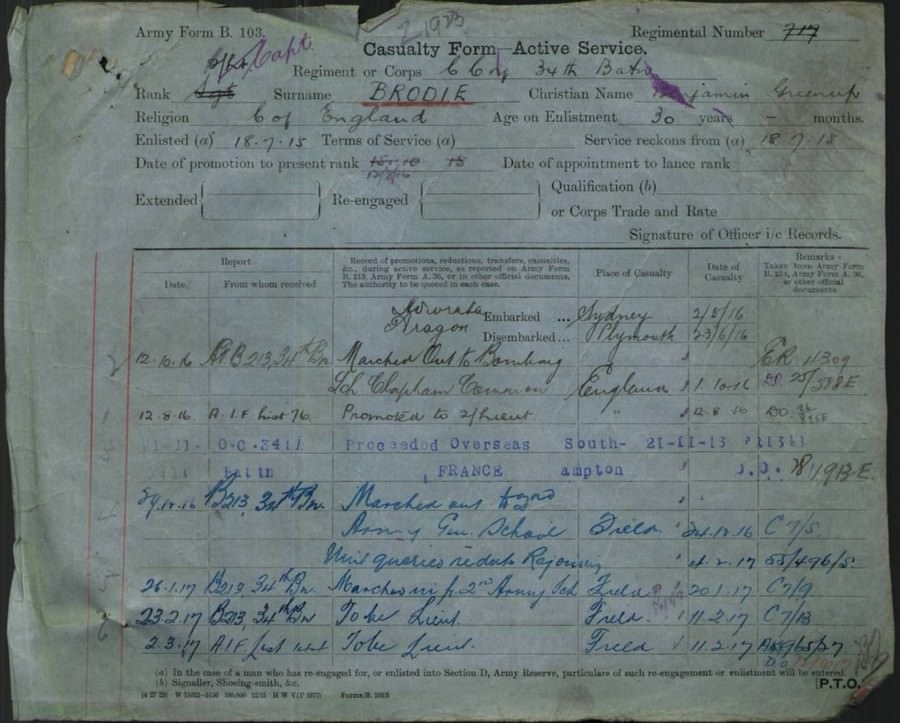
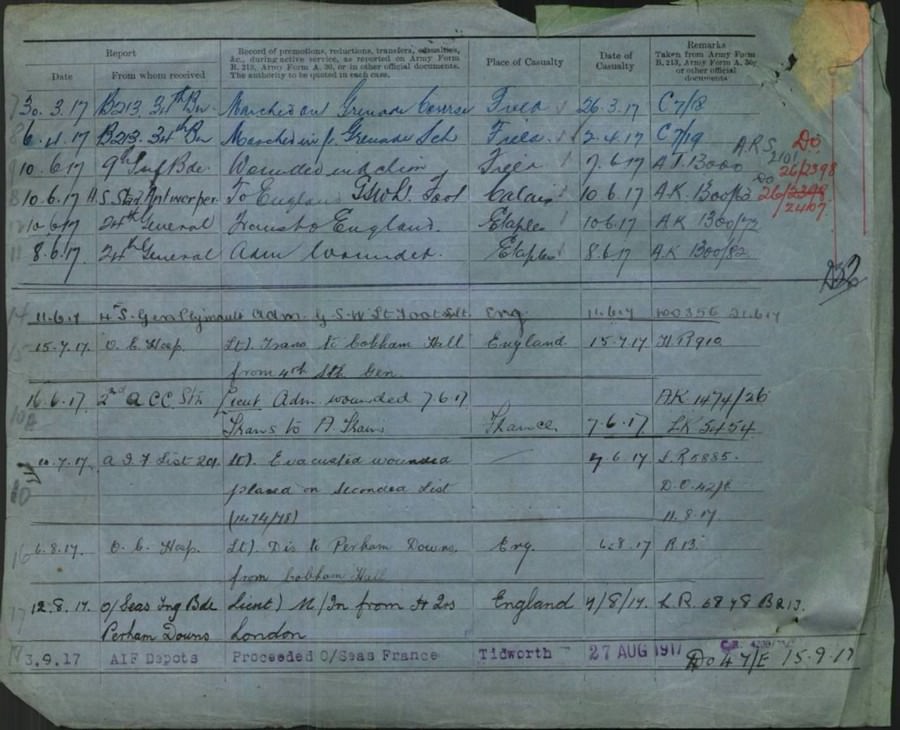
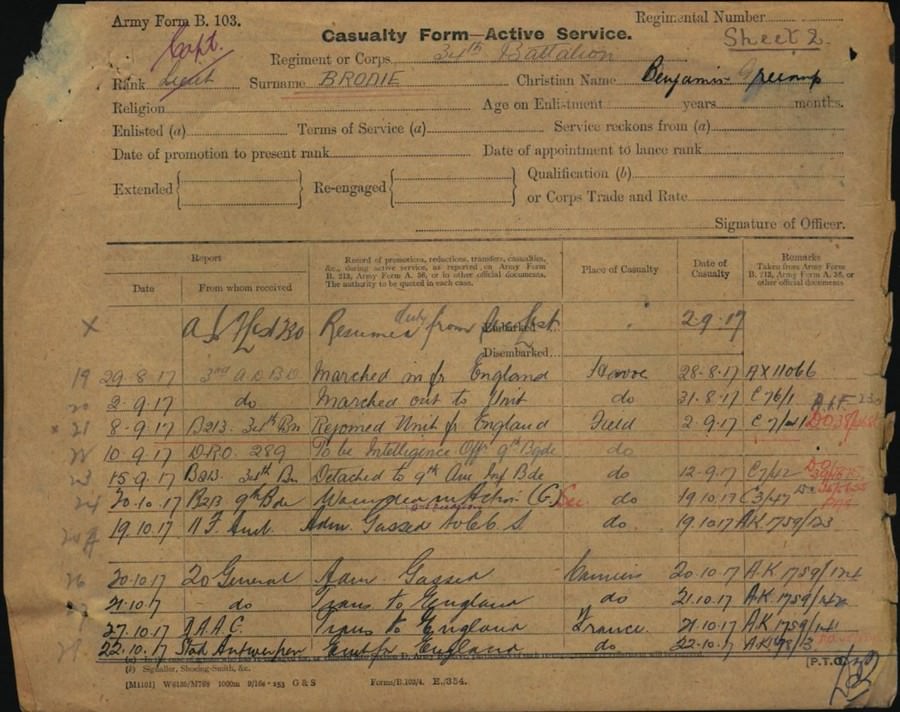
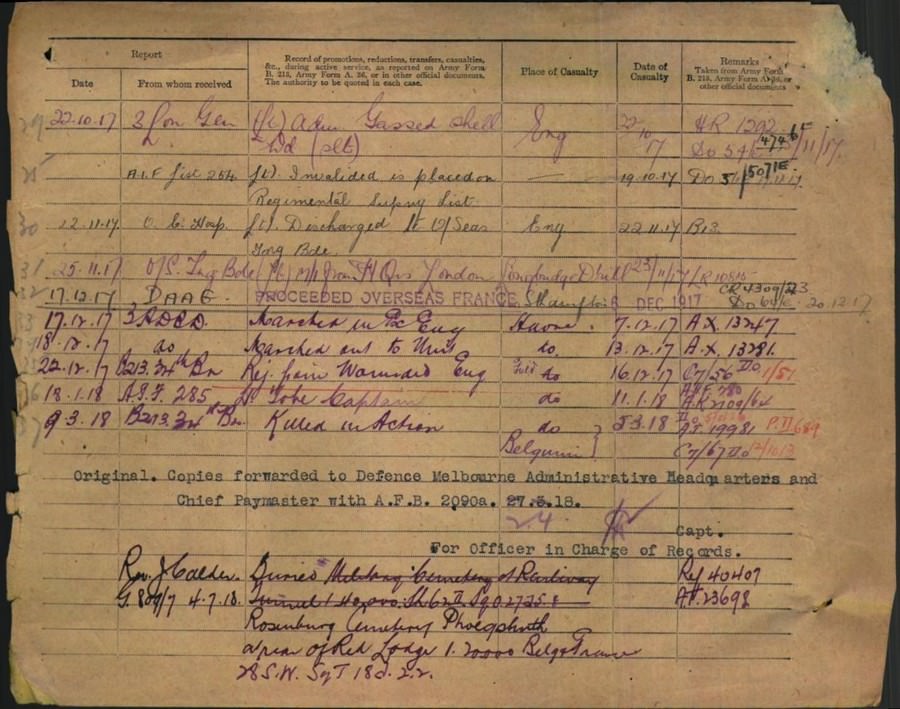
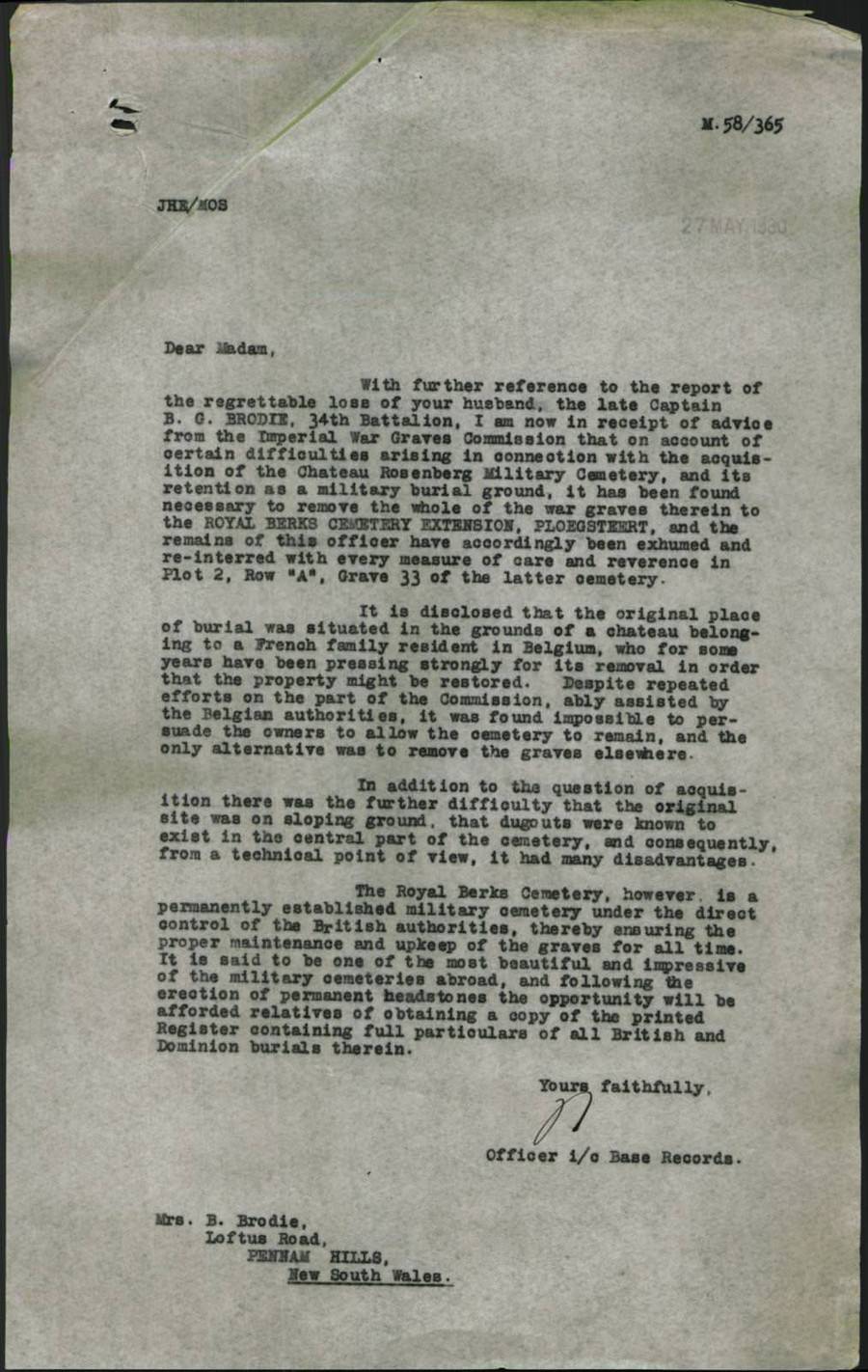
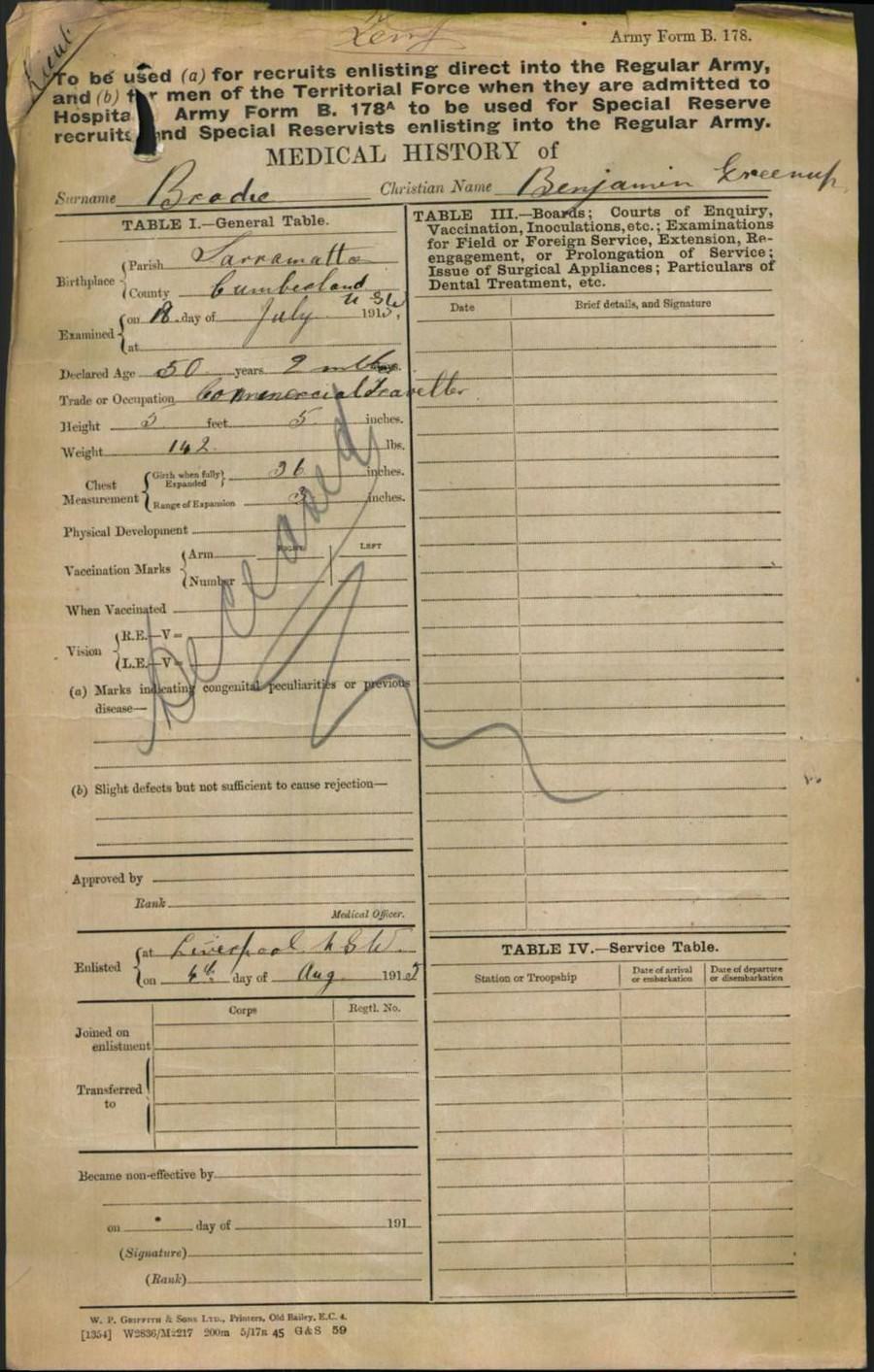
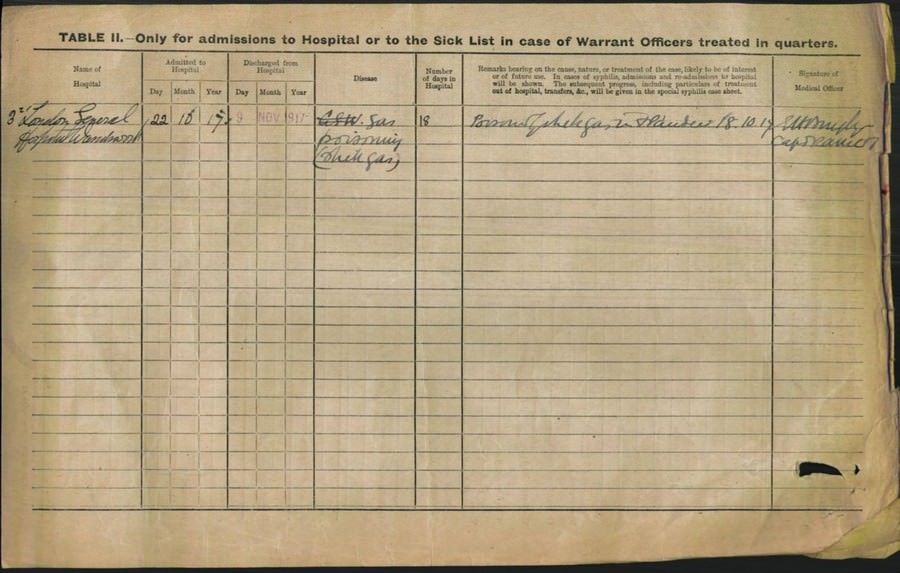
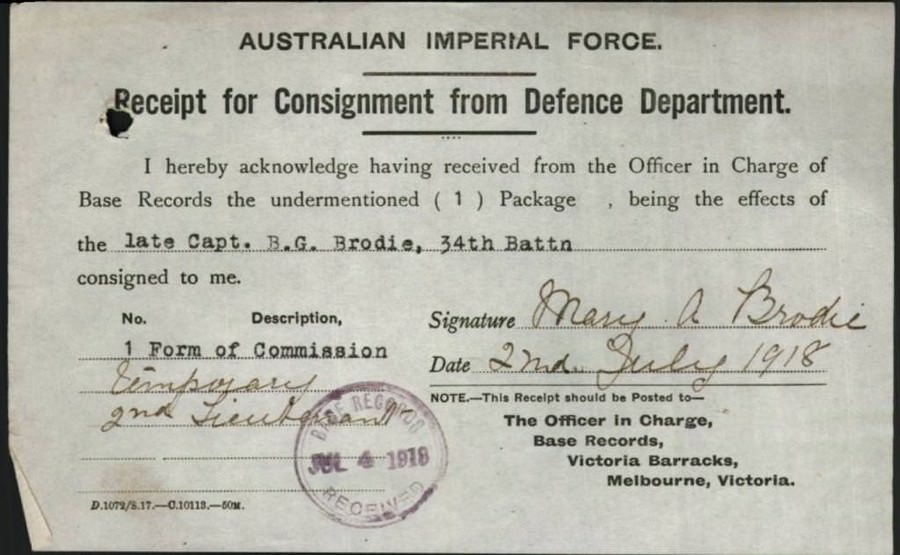
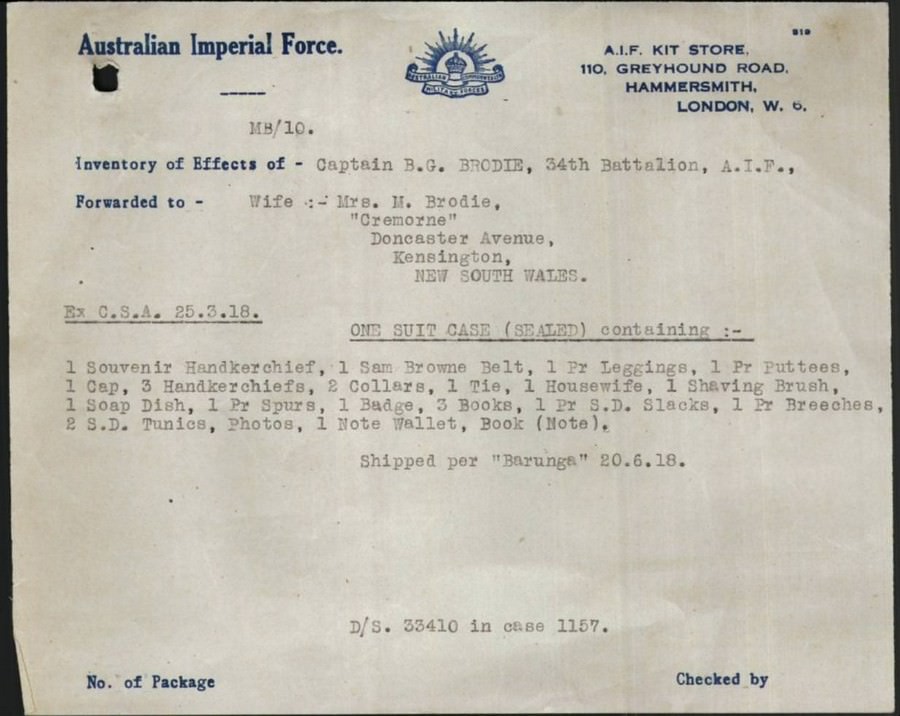
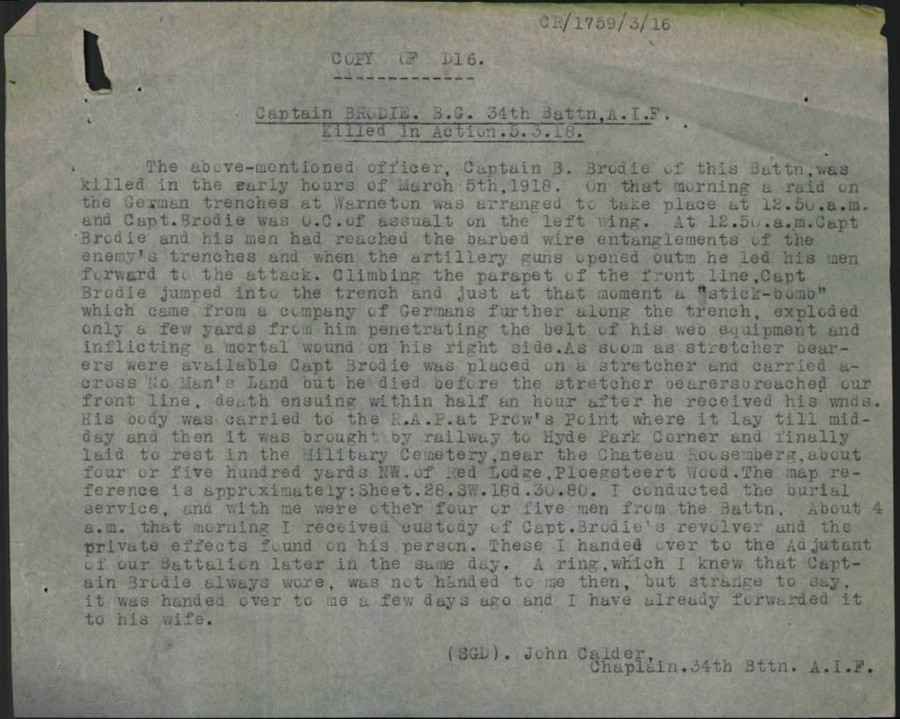
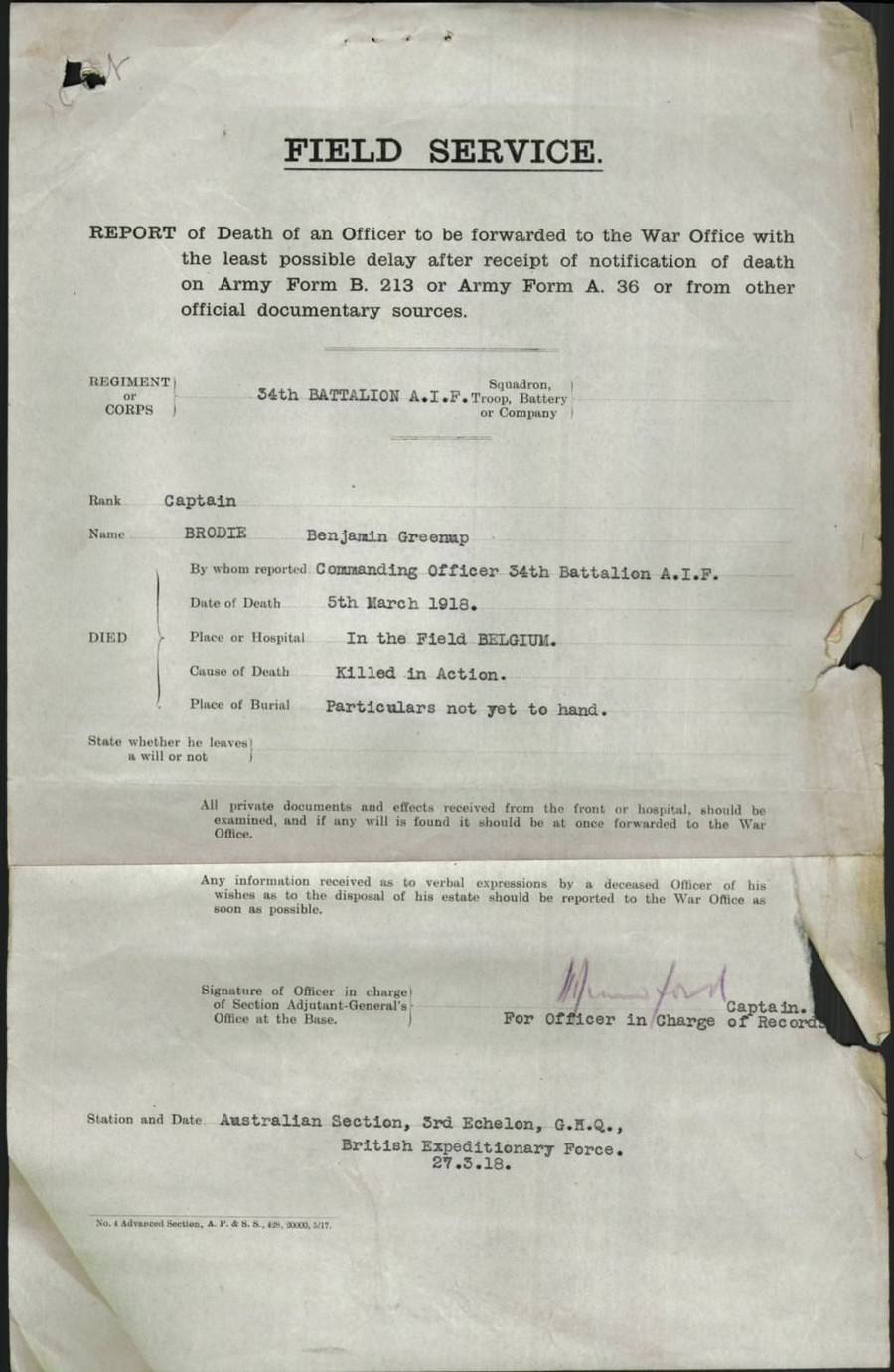
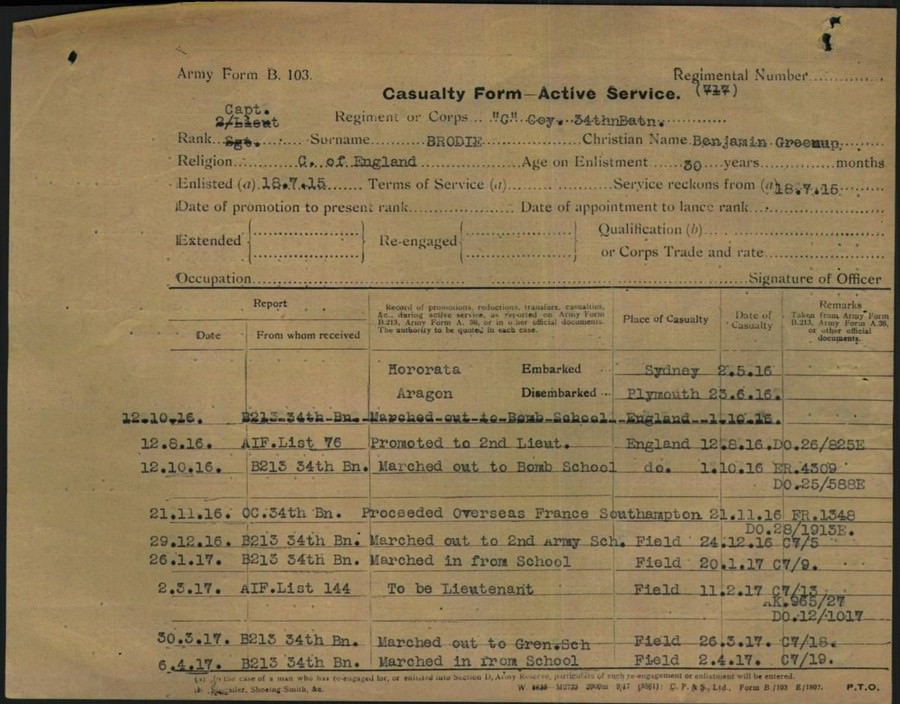

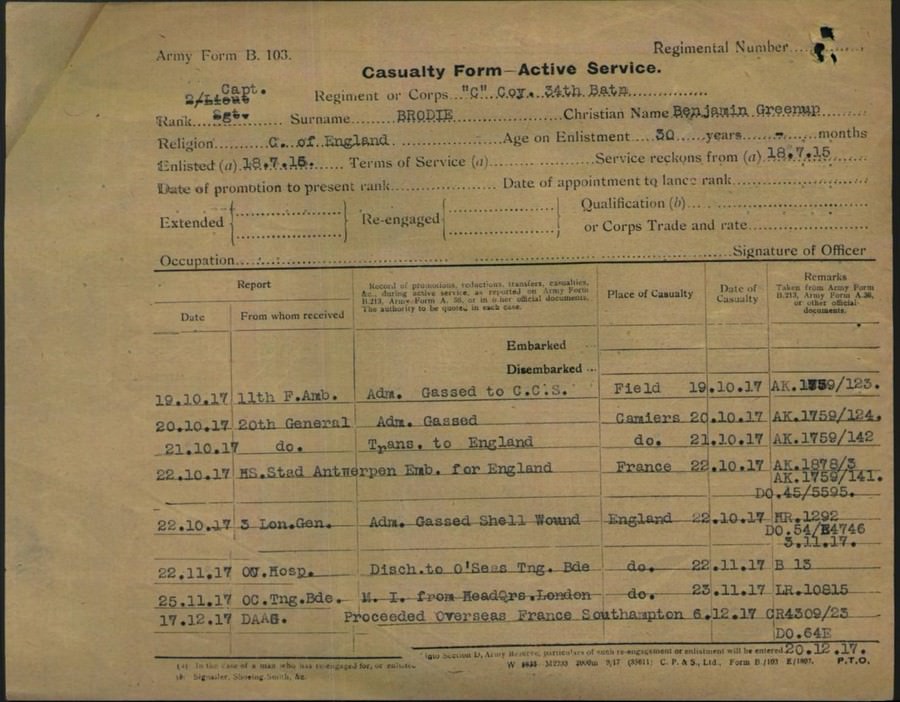

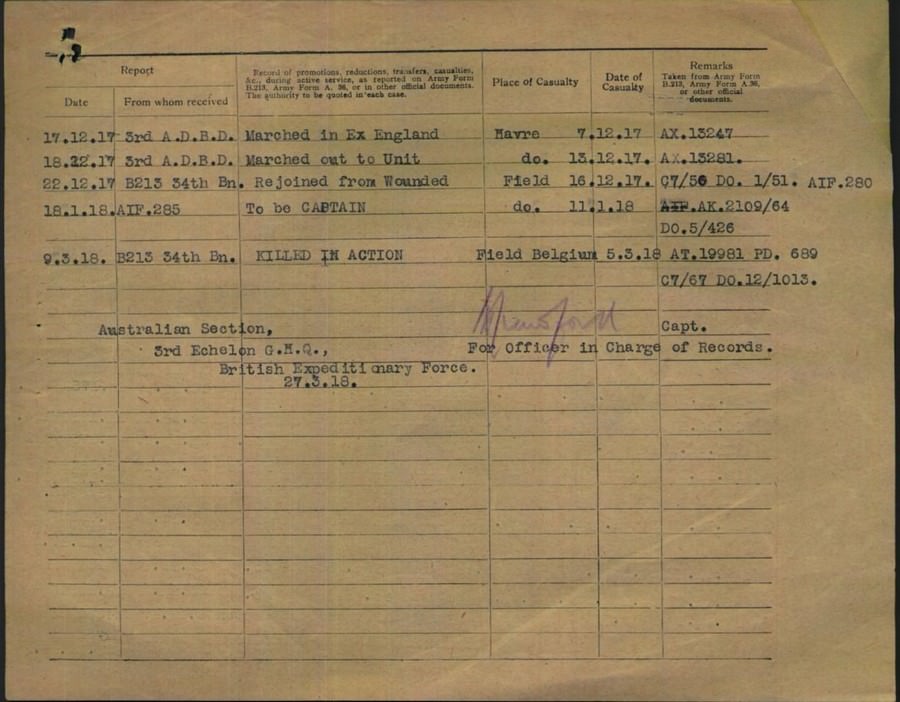
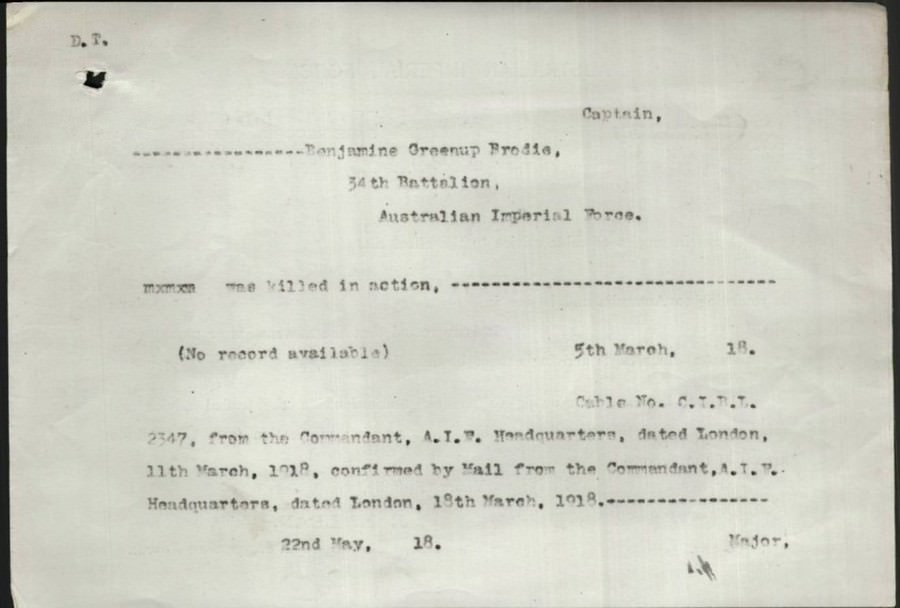
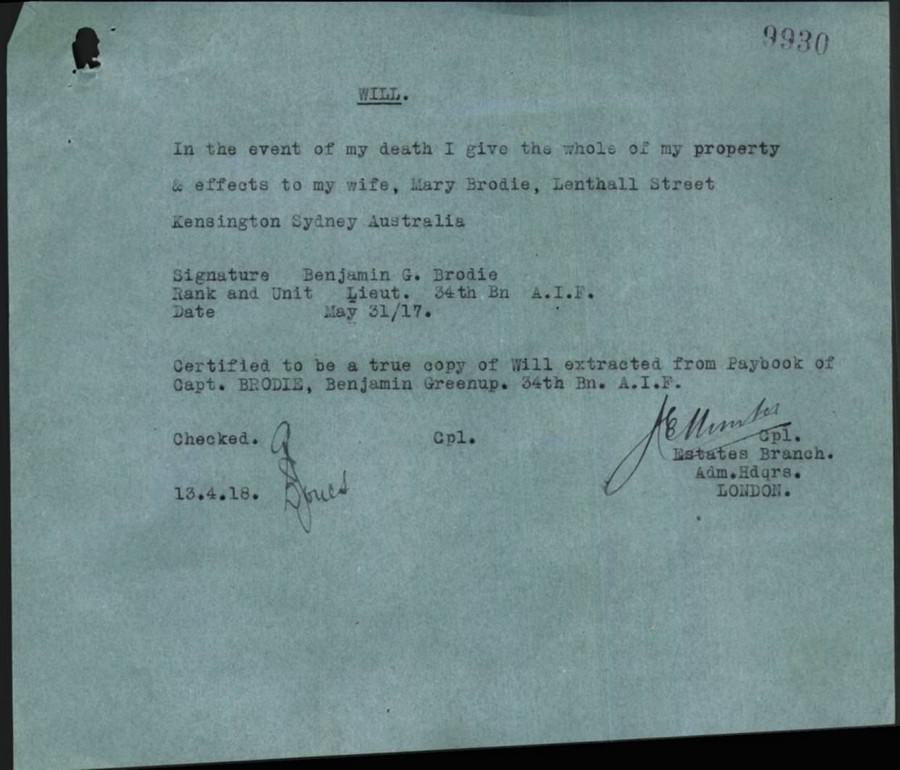
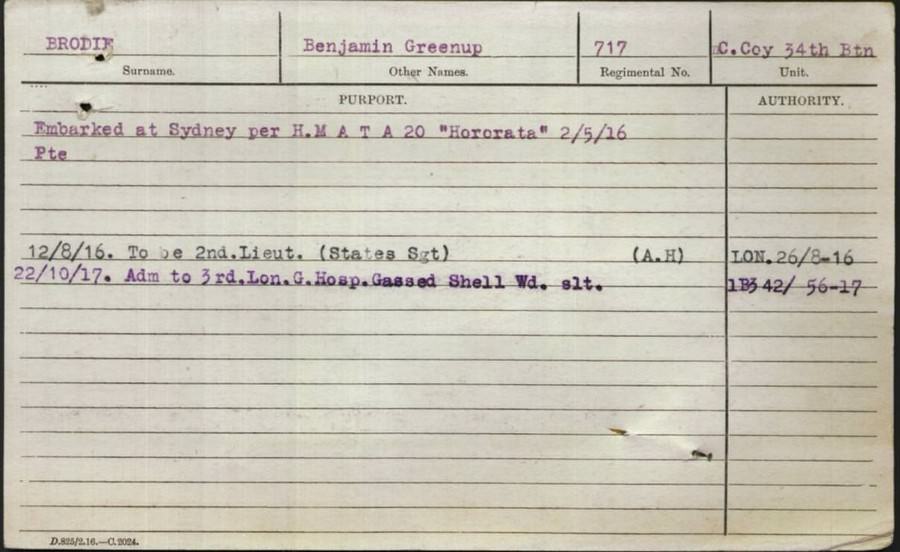
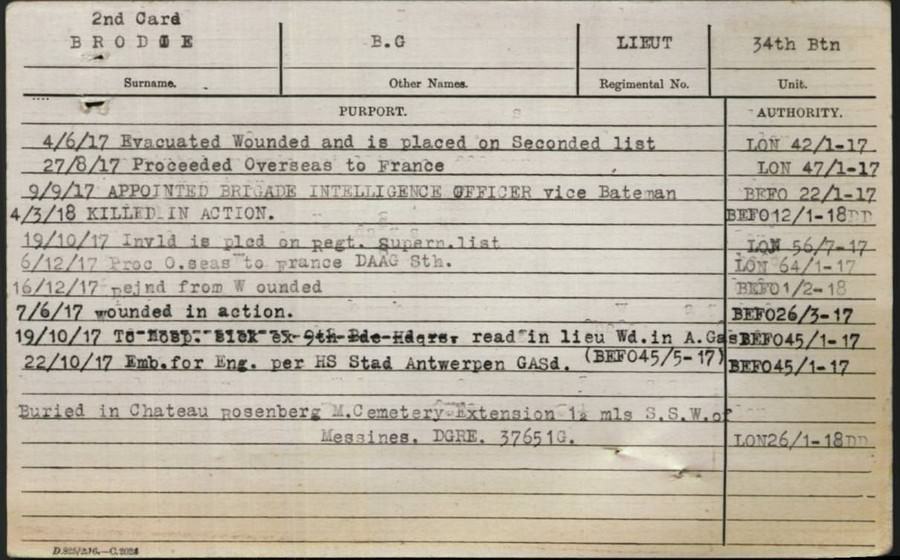


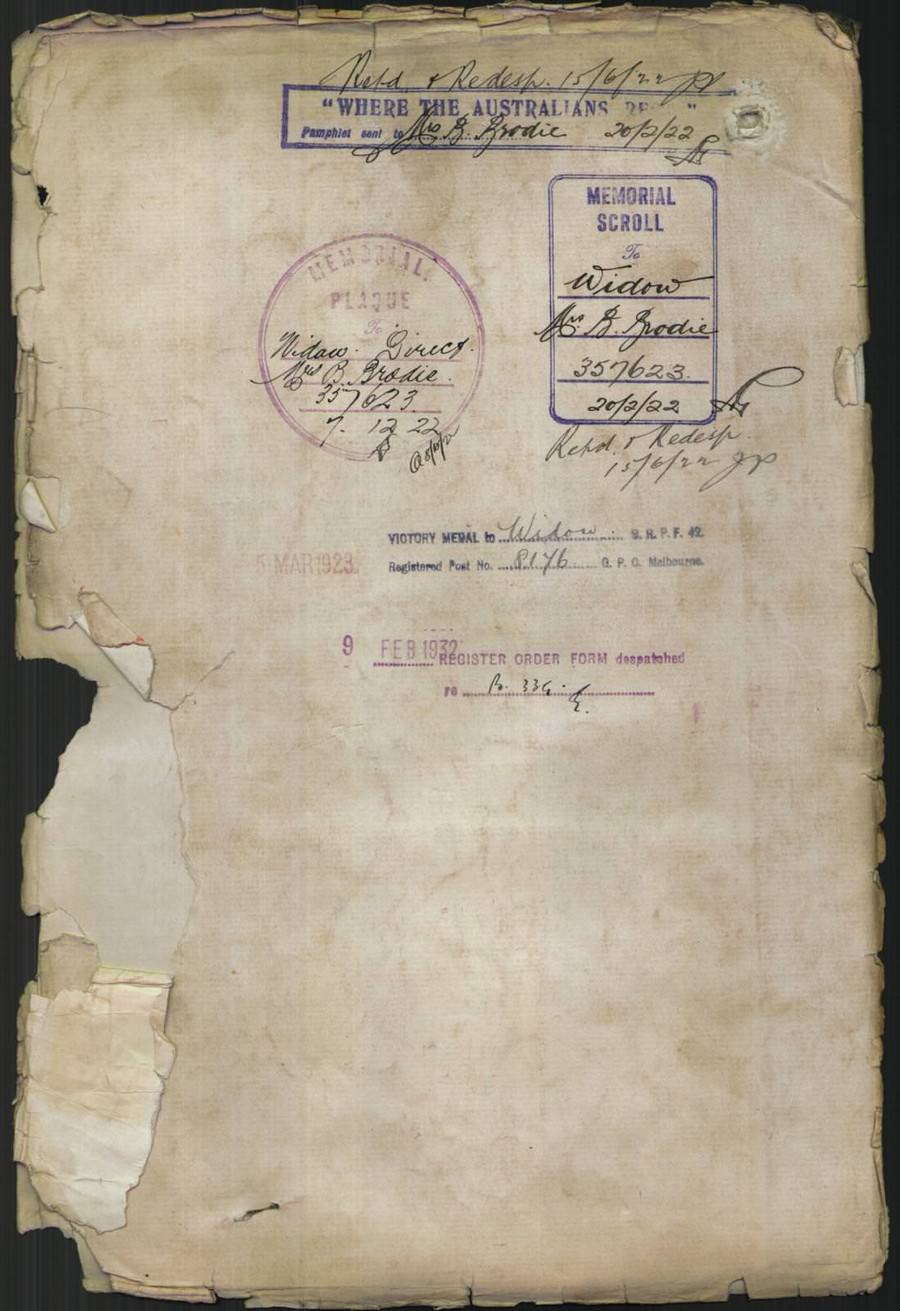
© Commonwealth of Australia (National Archives of Australia)
Under Construction: 02/06/2006-07/02/2017.
